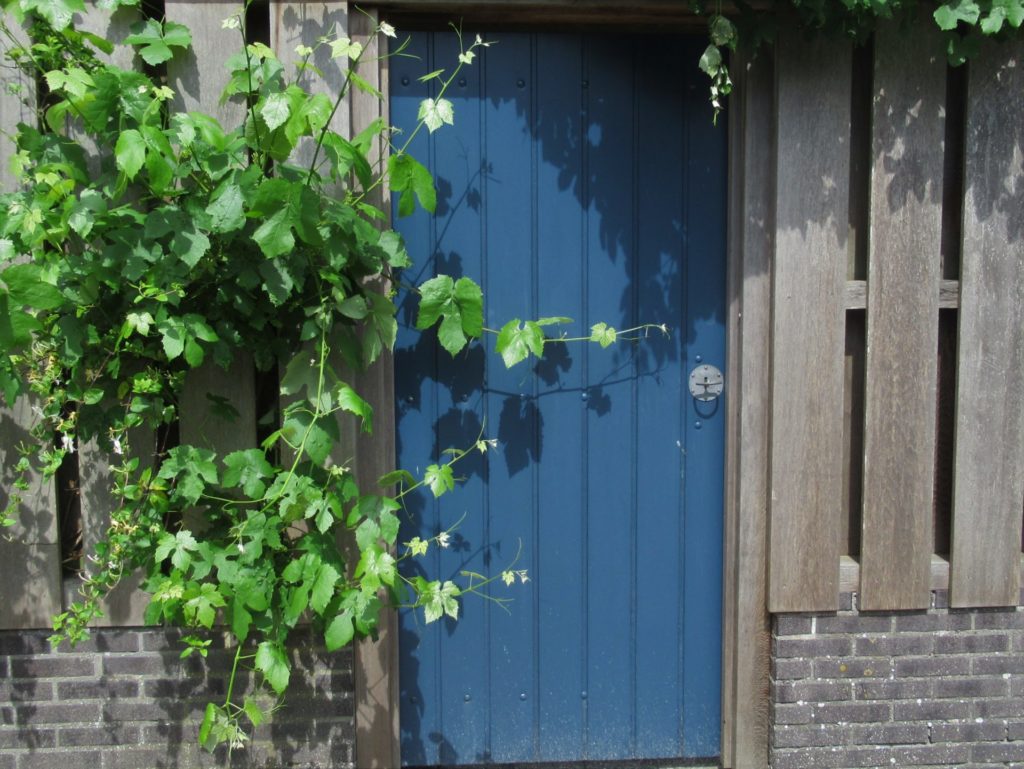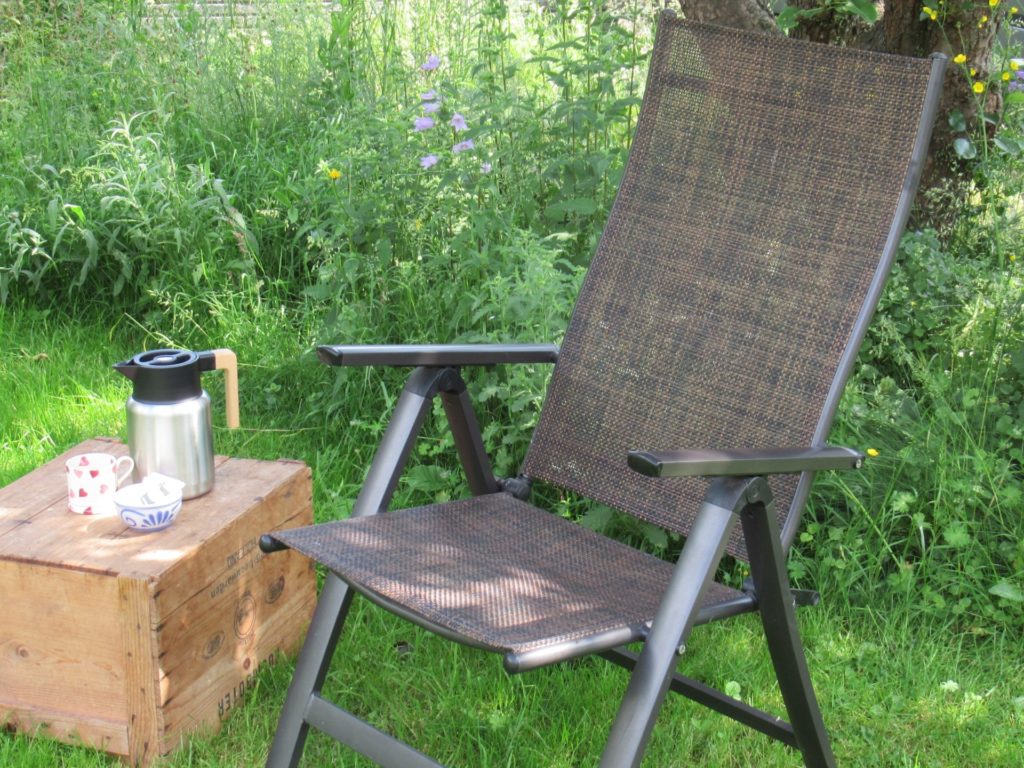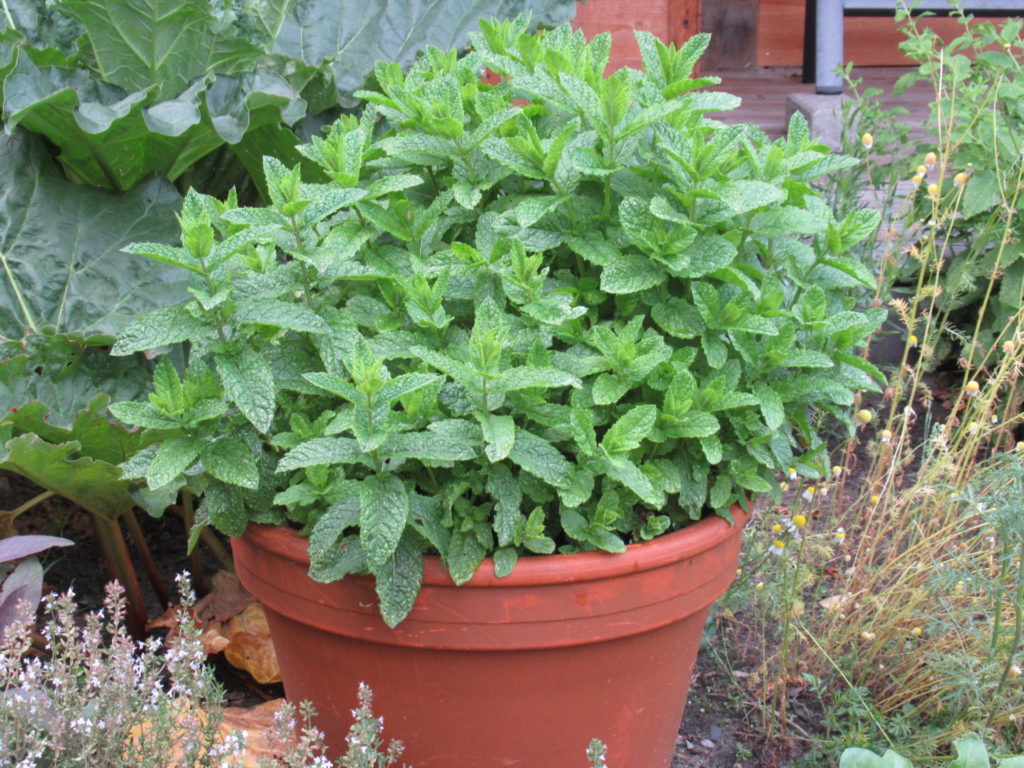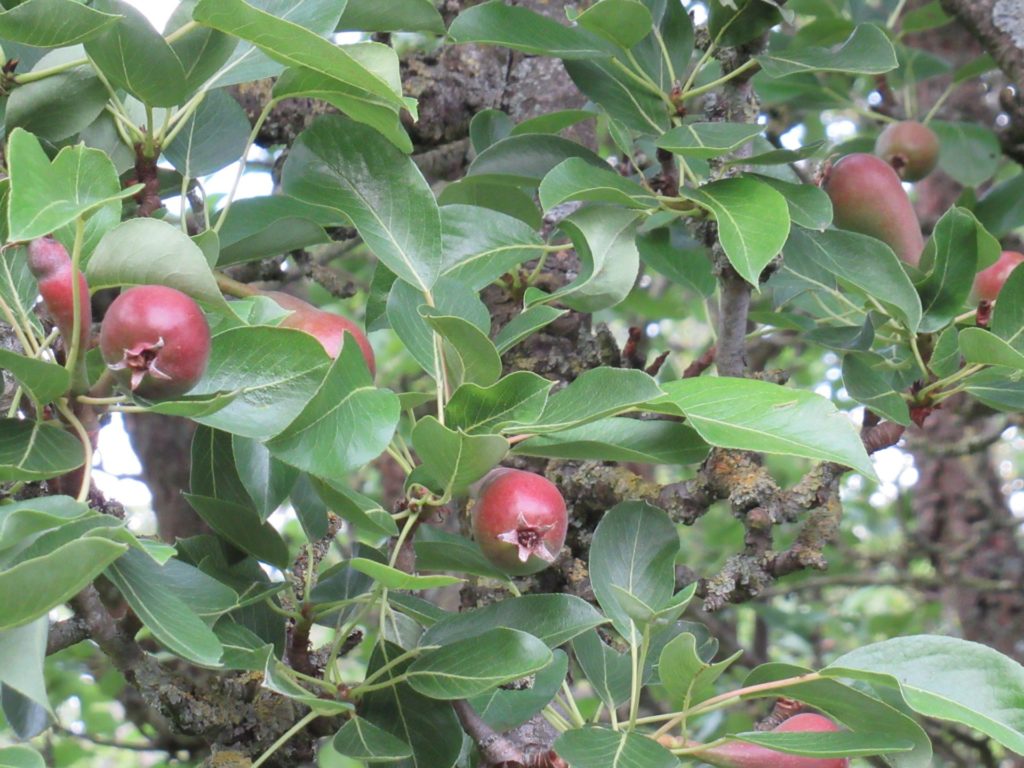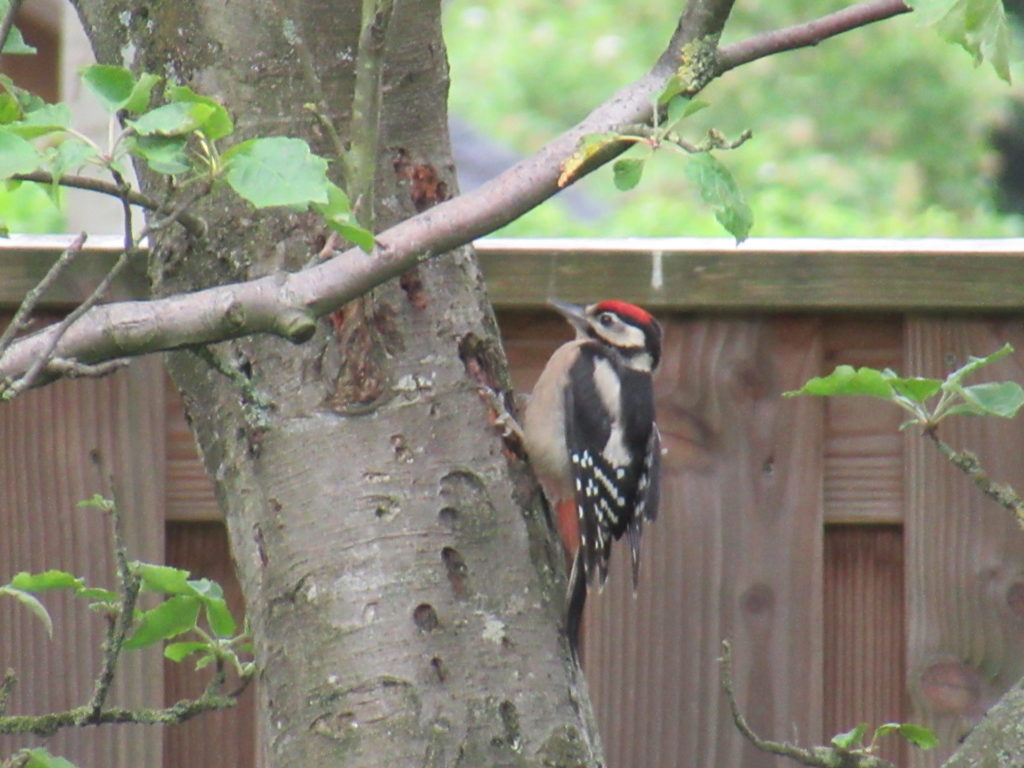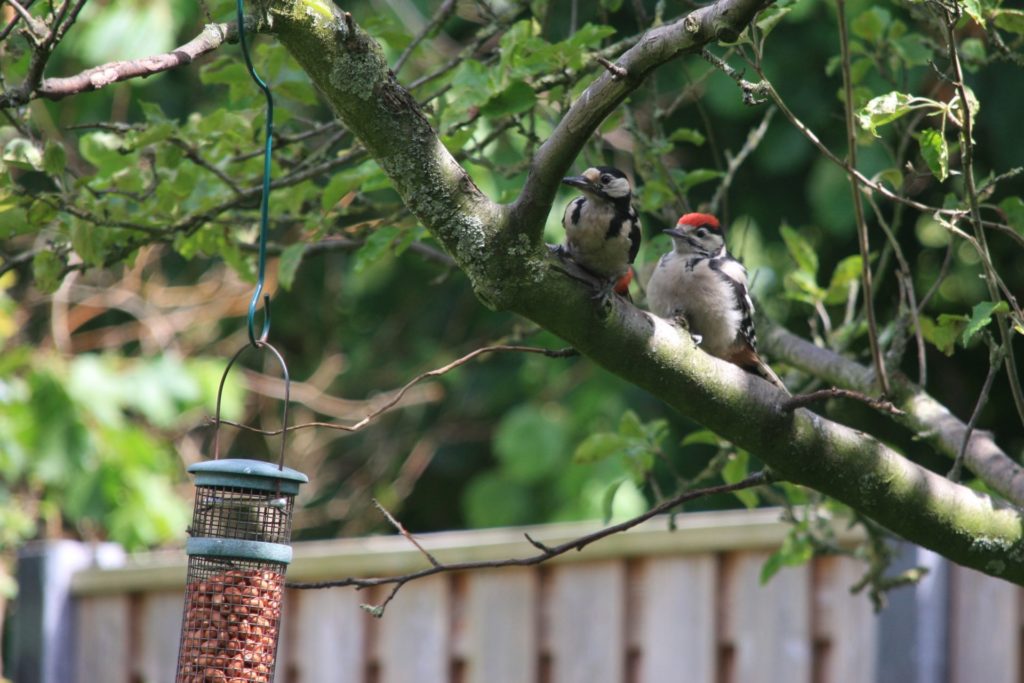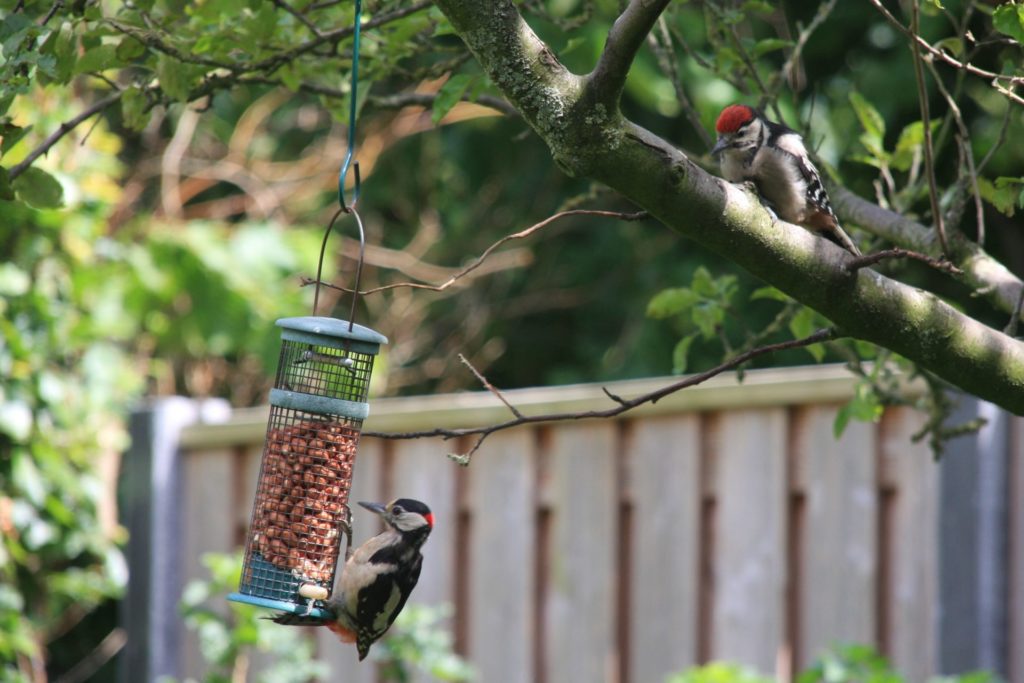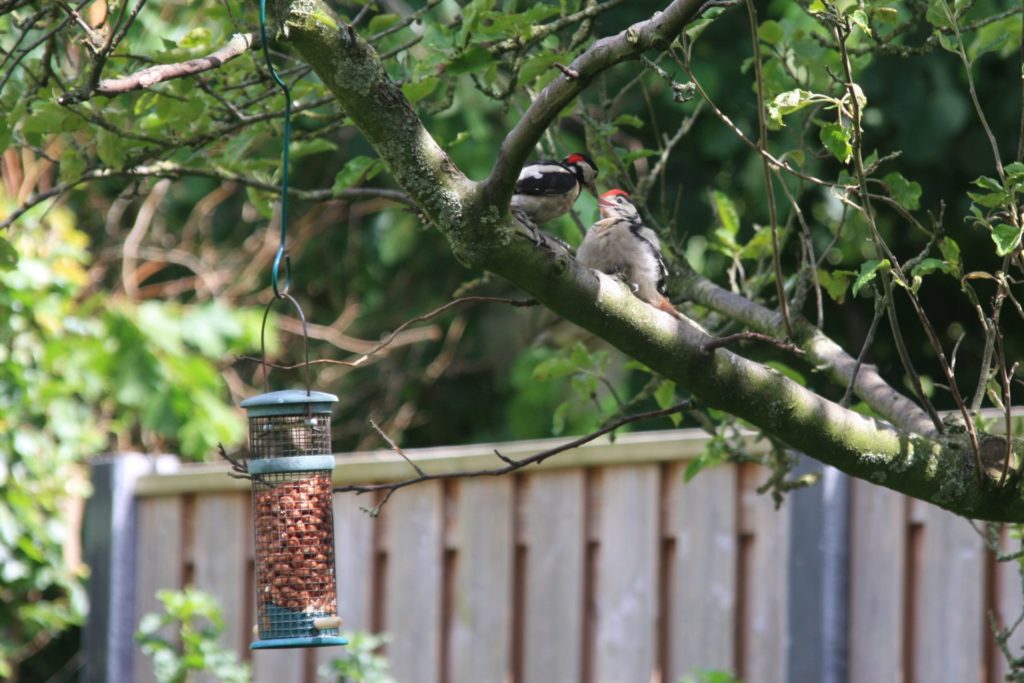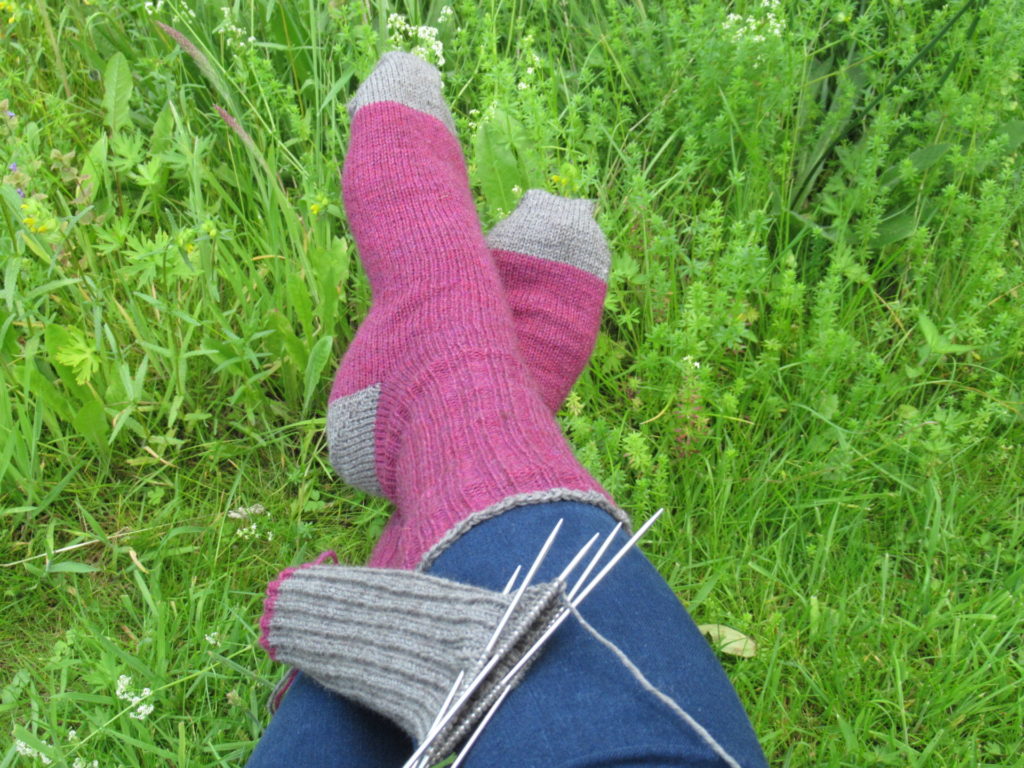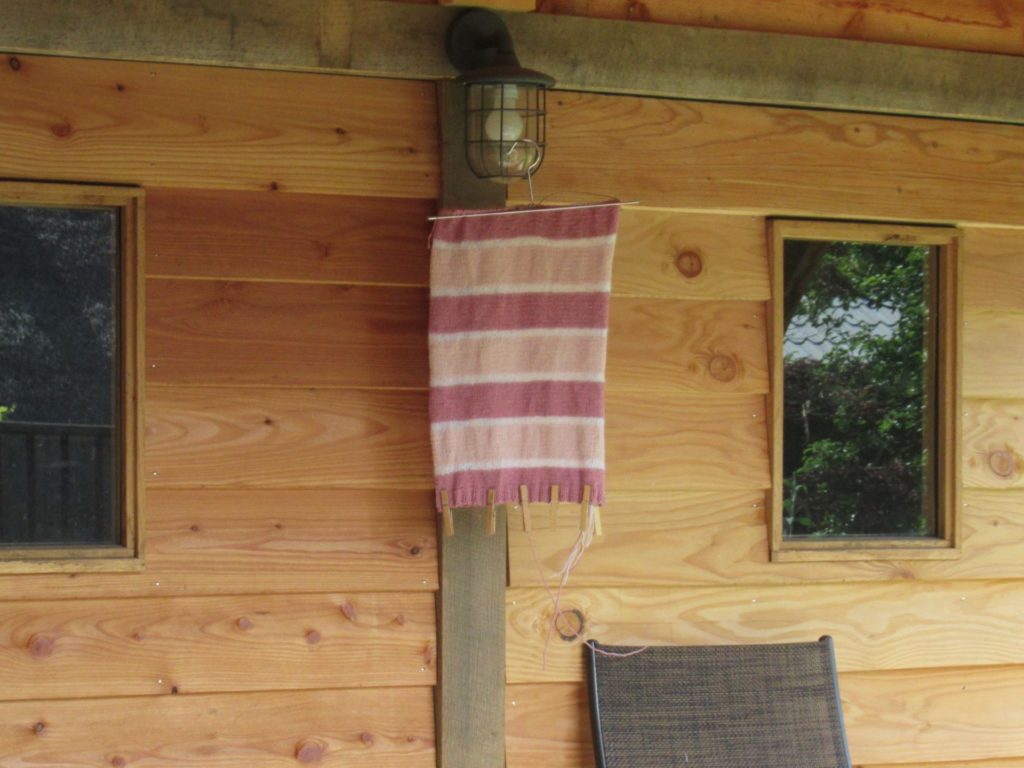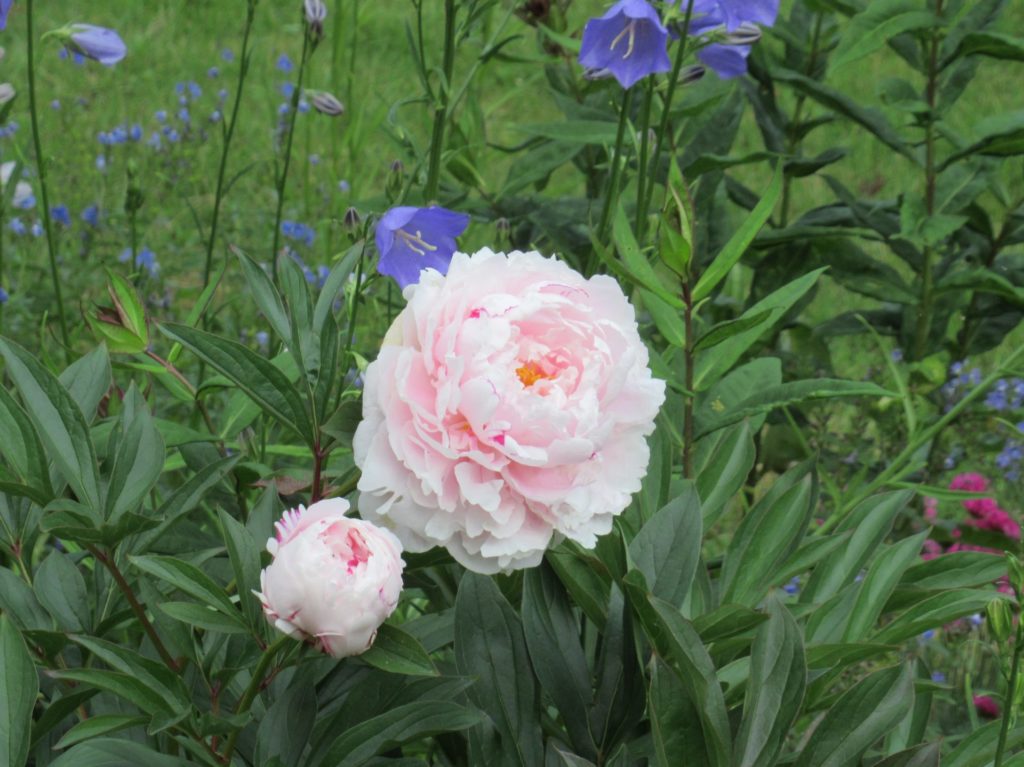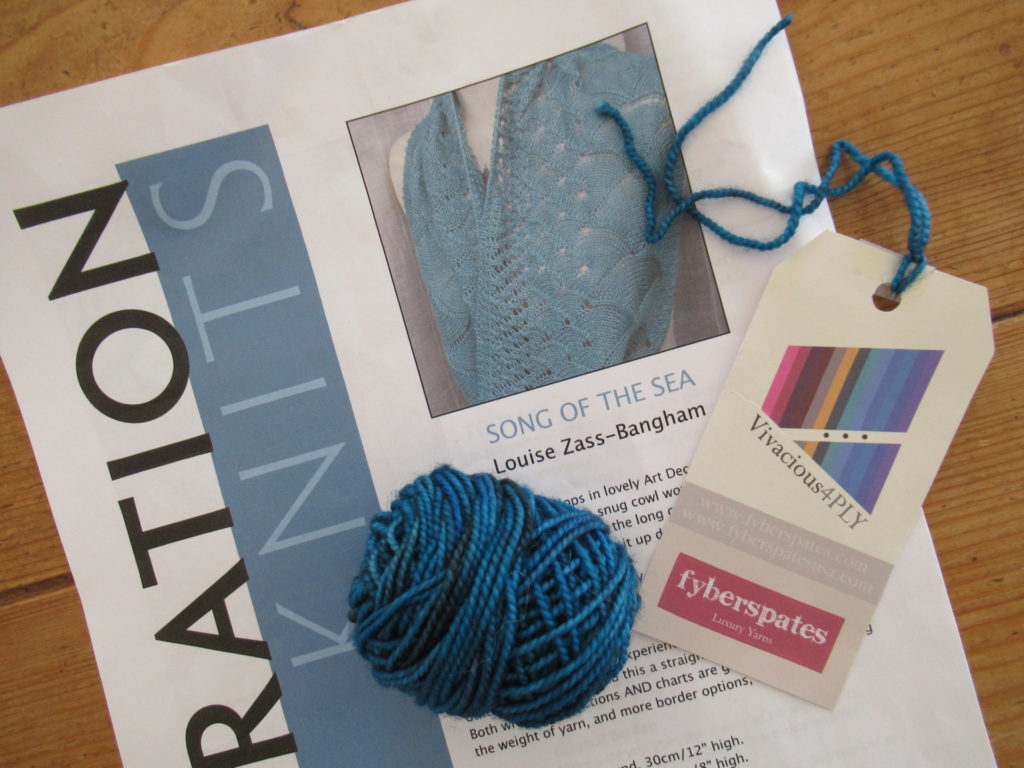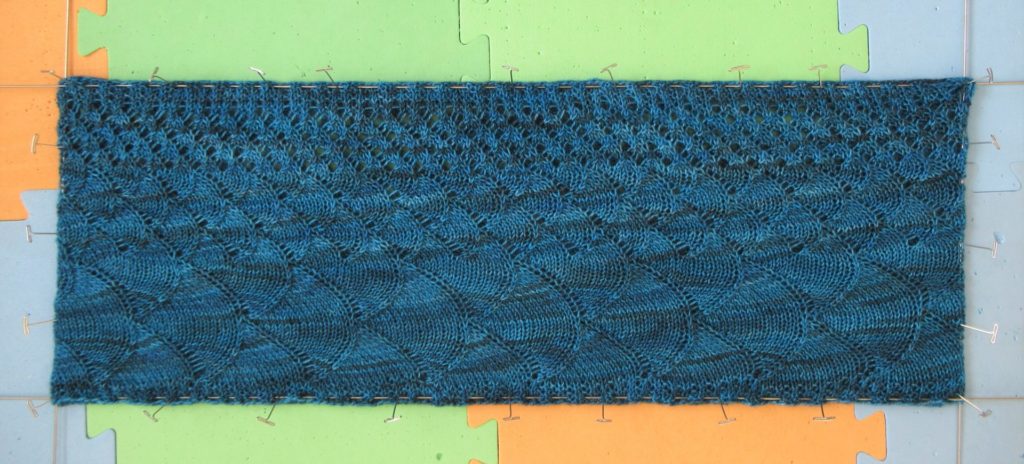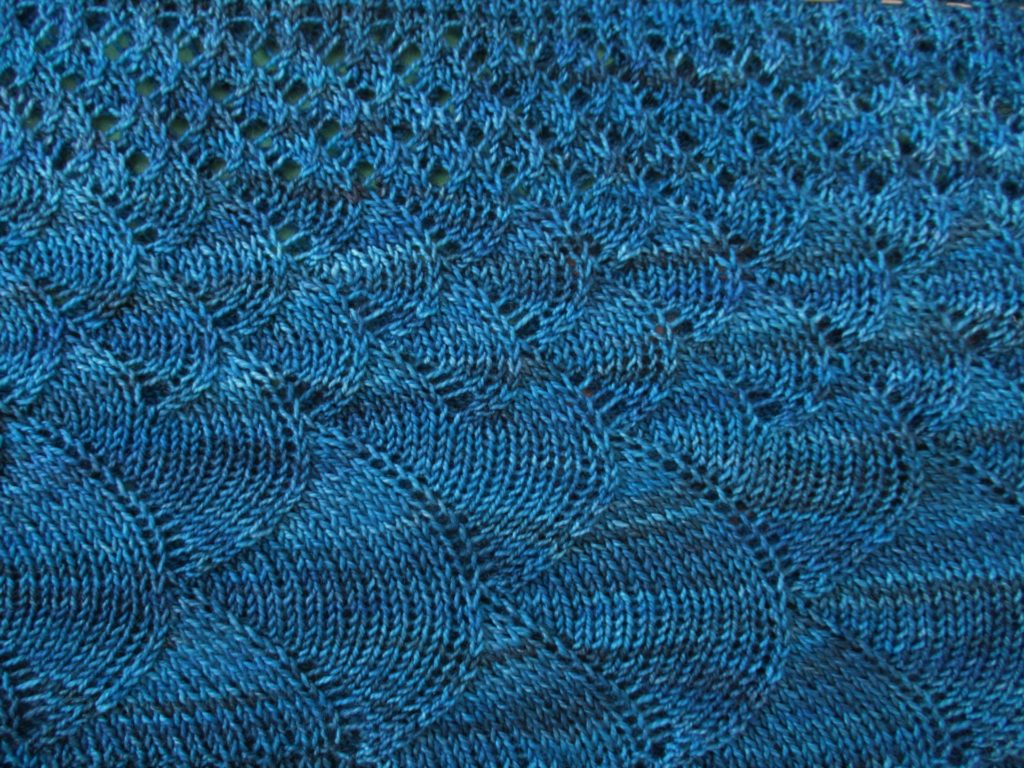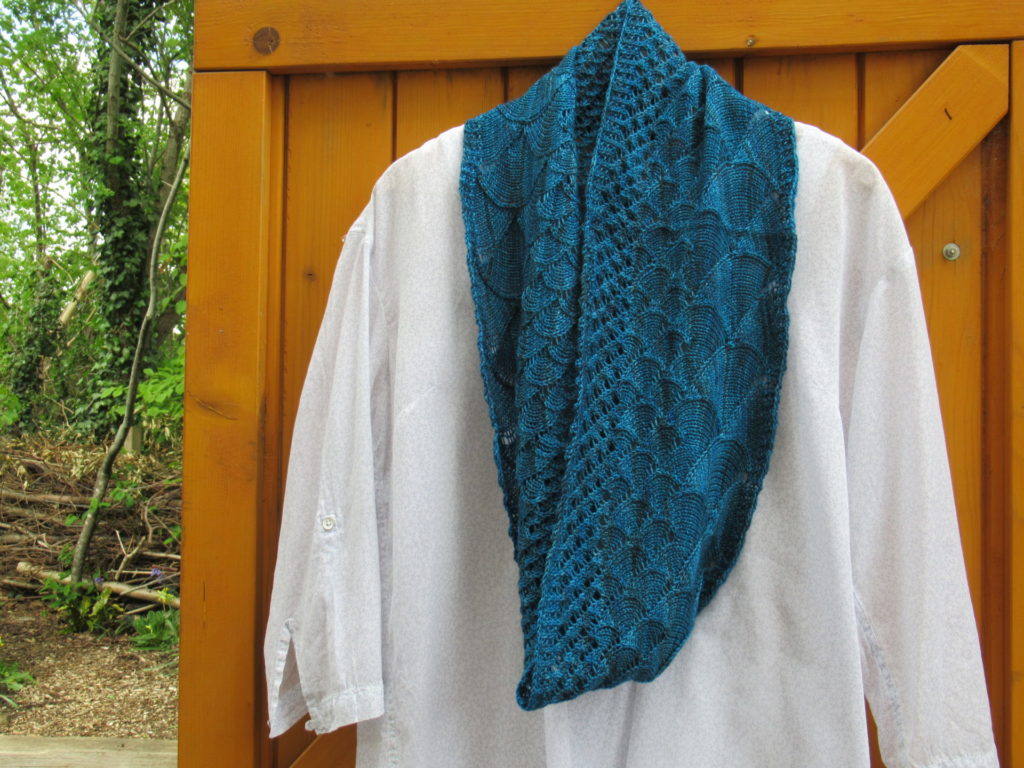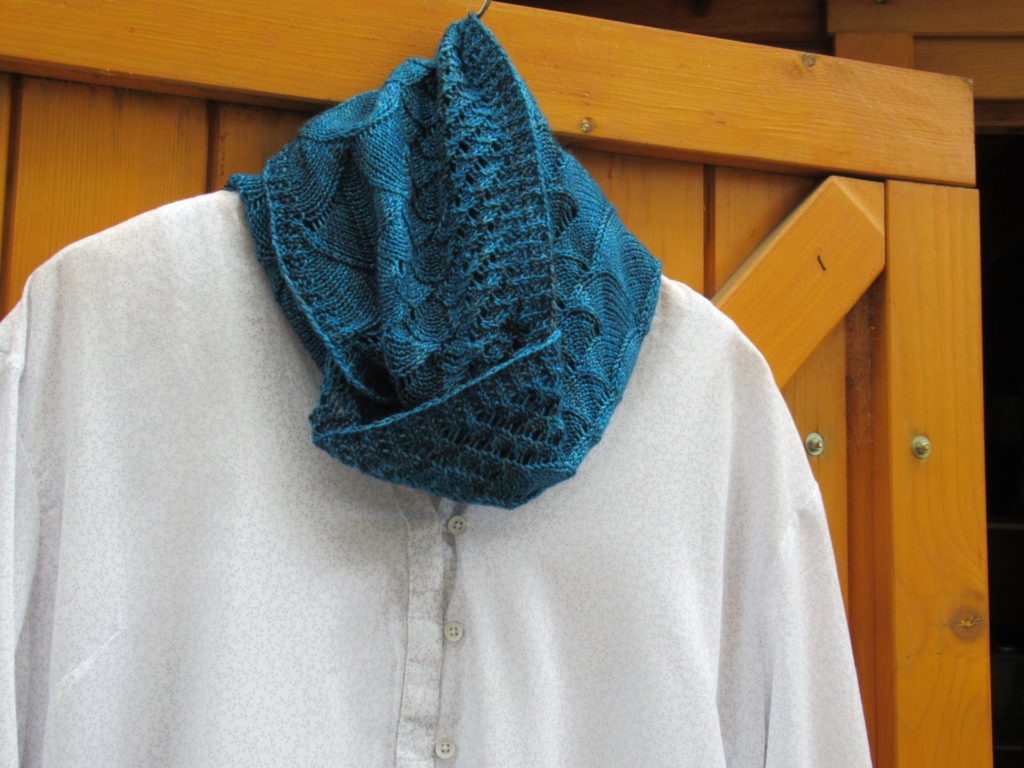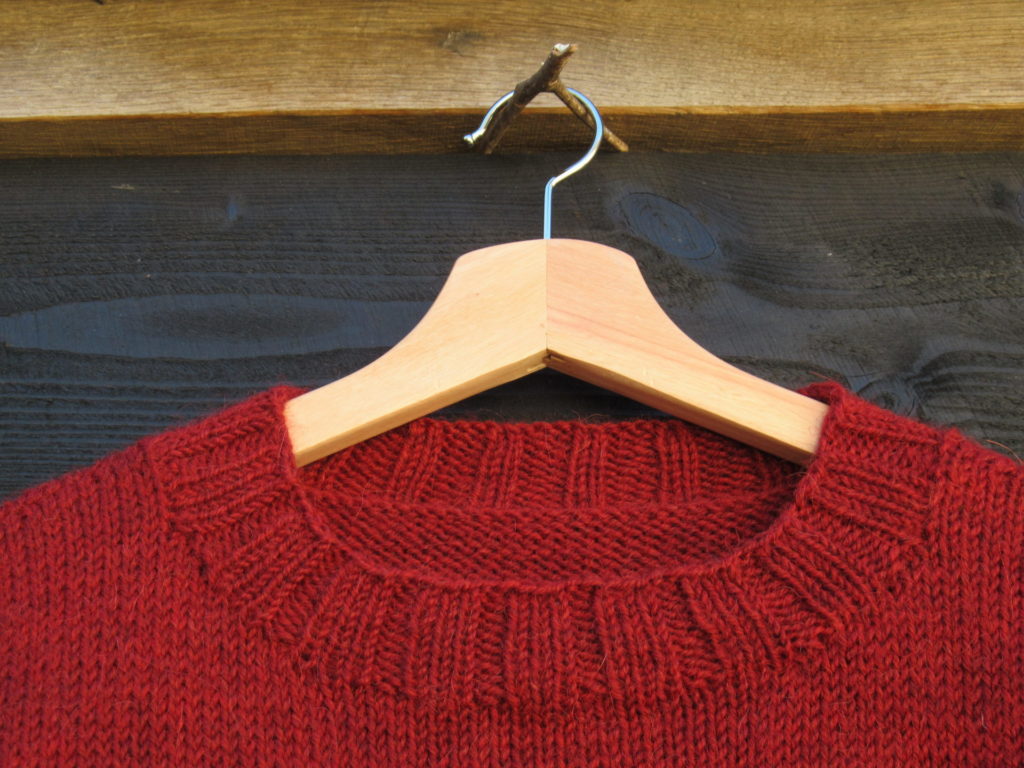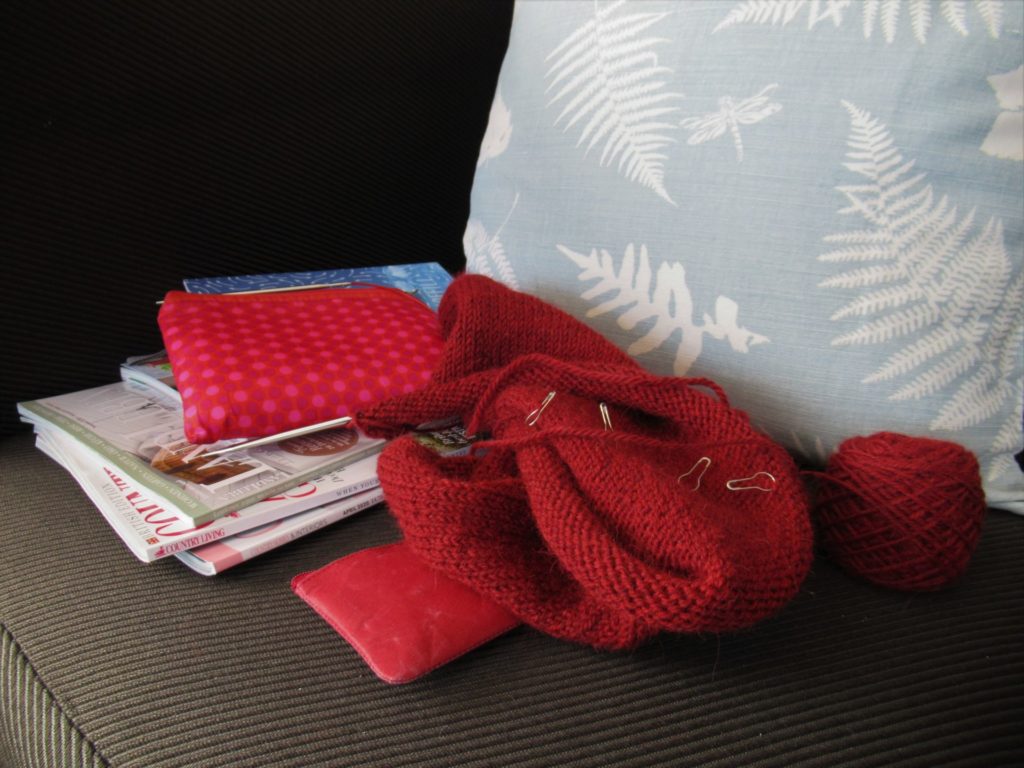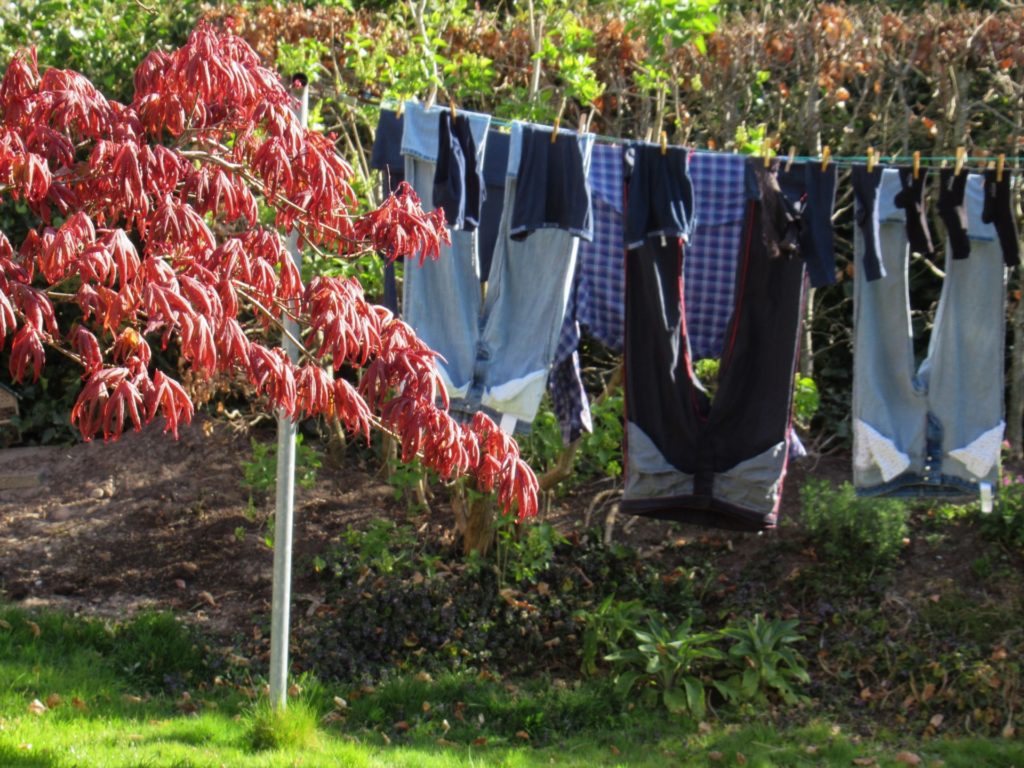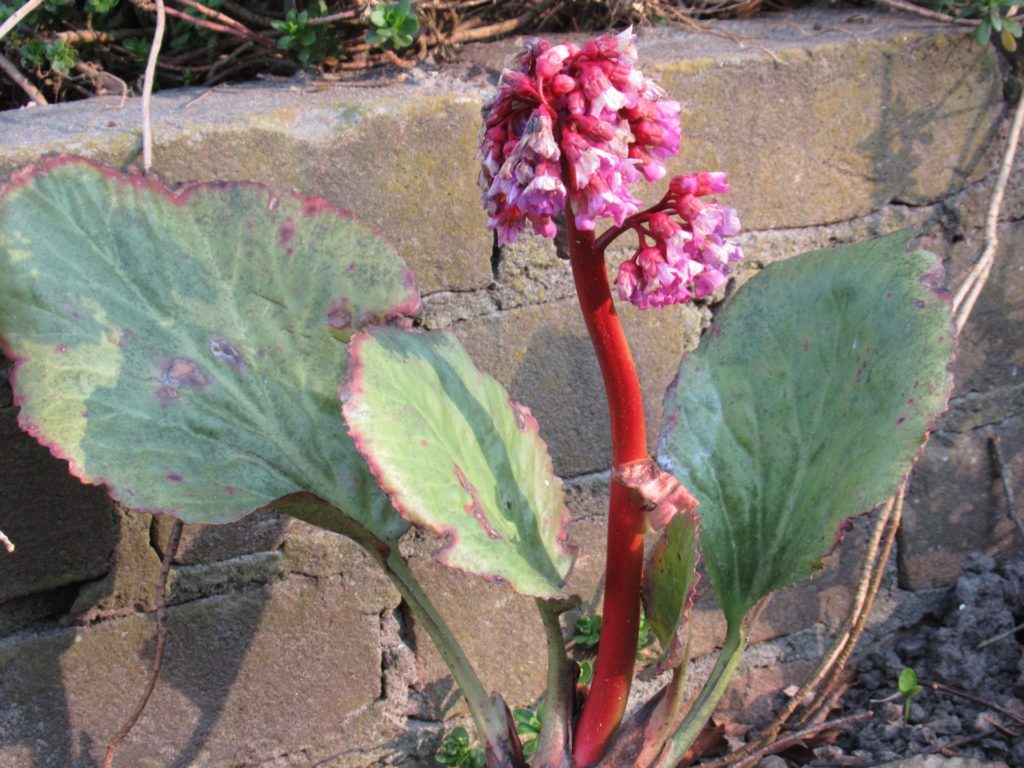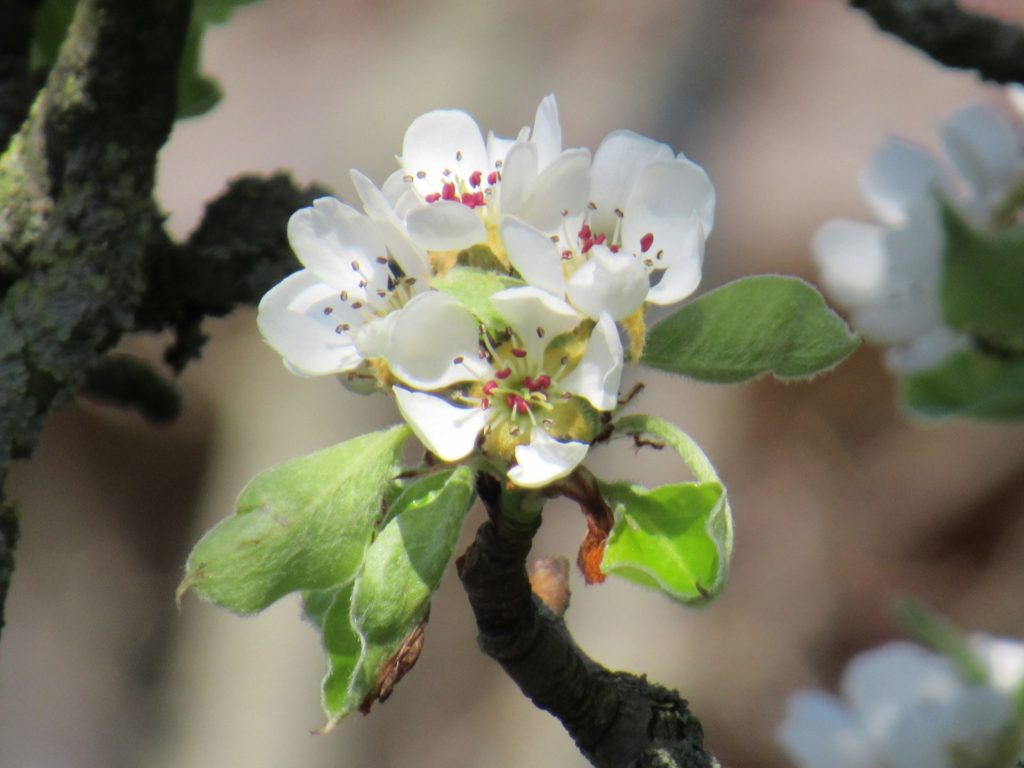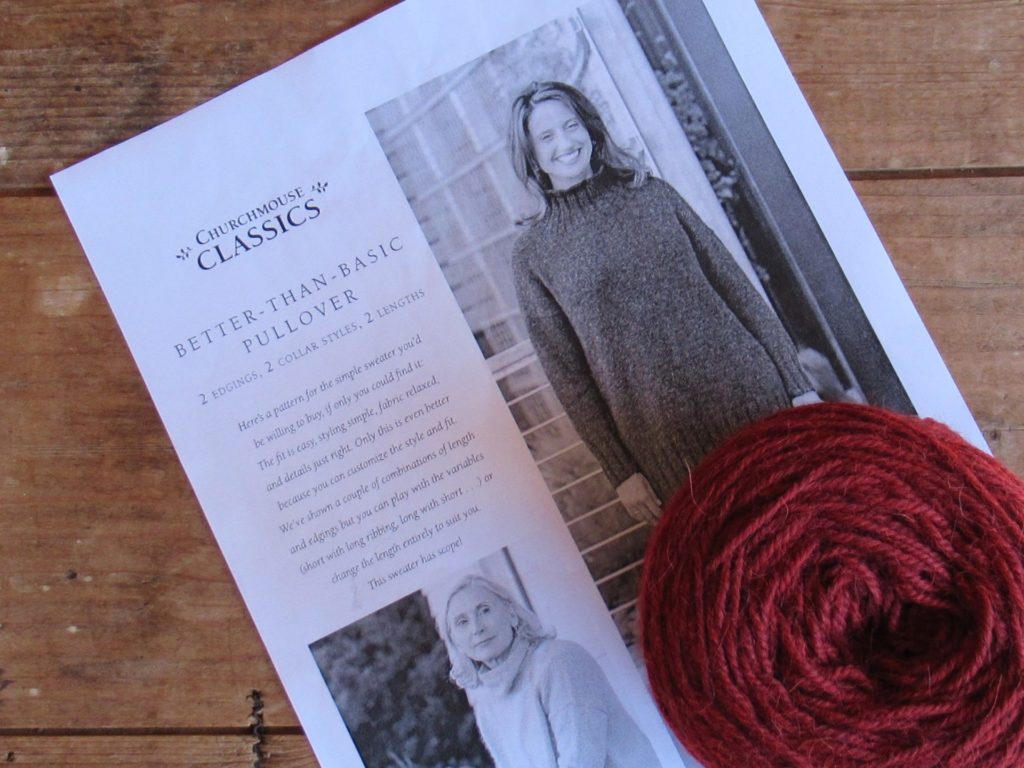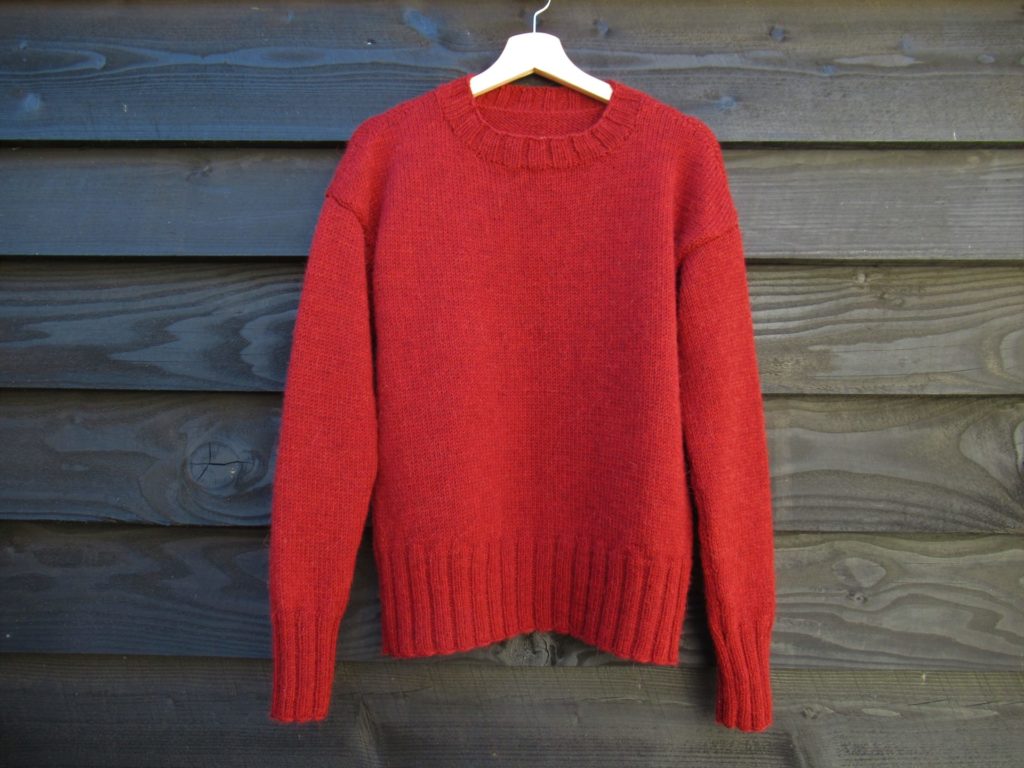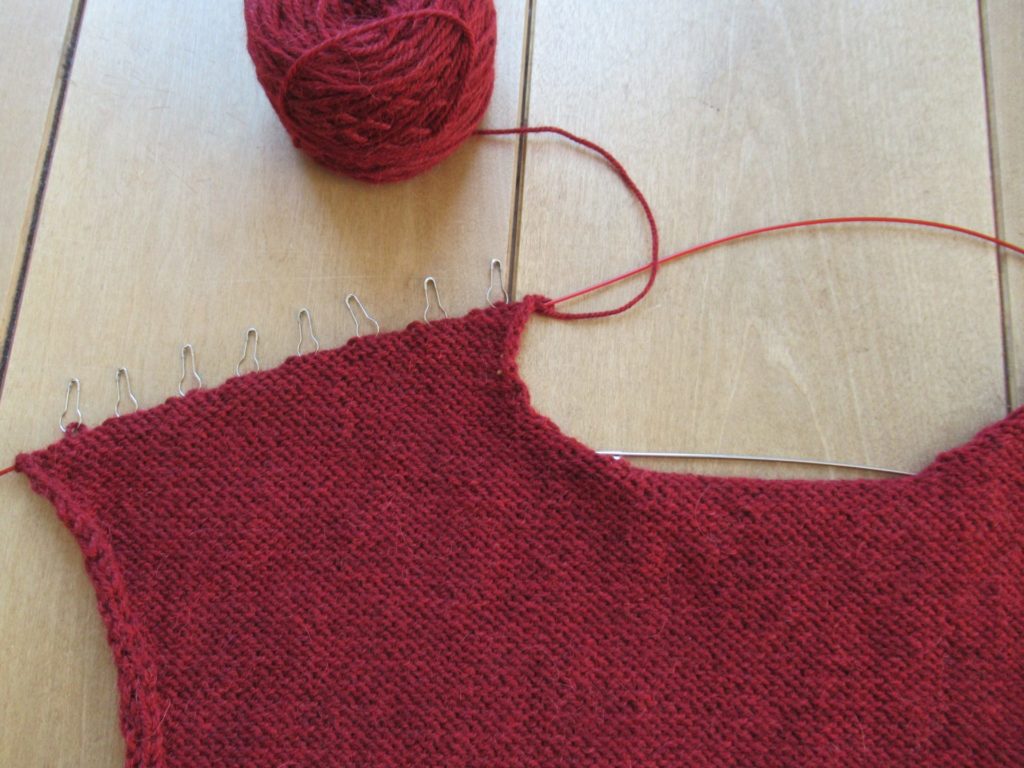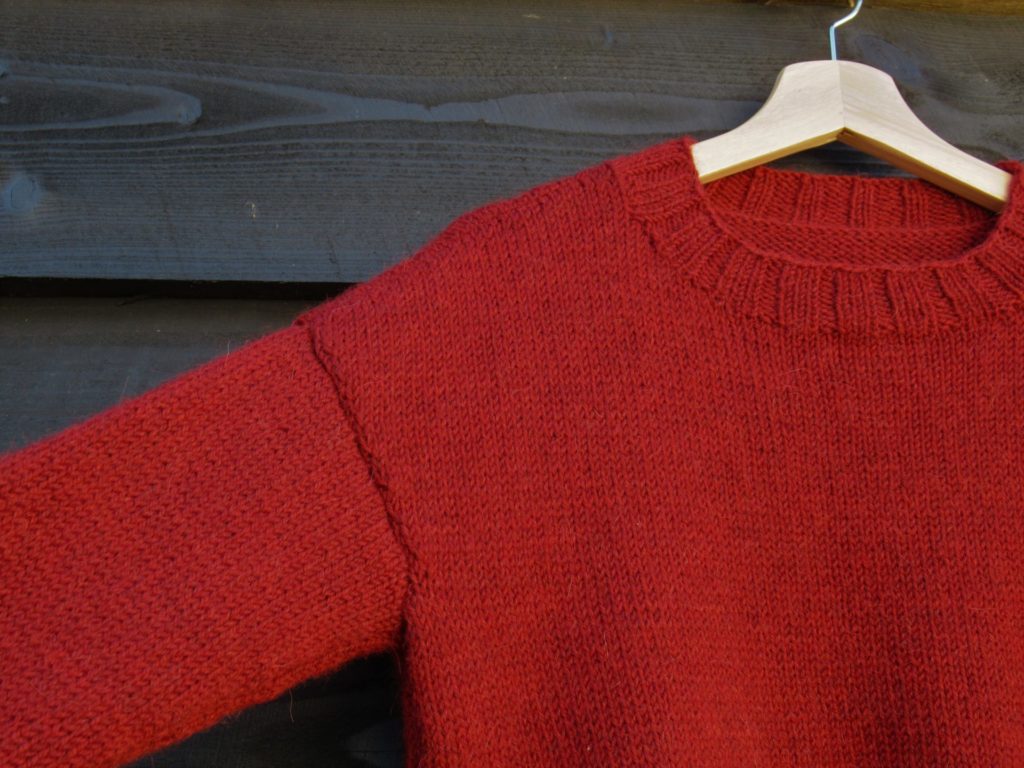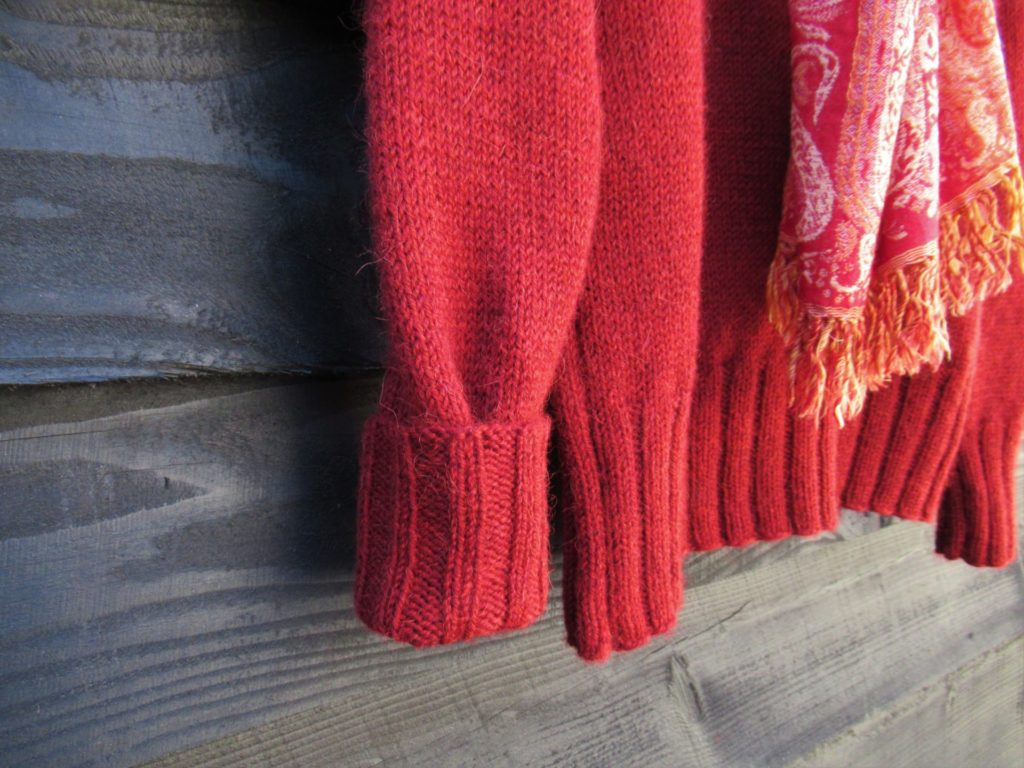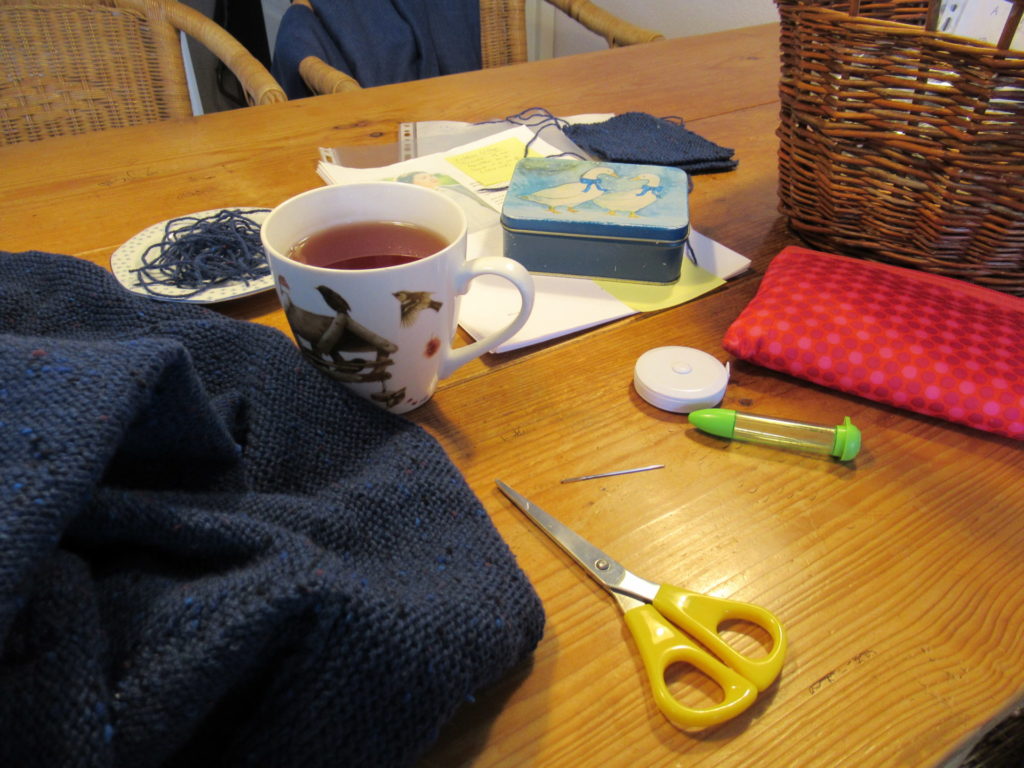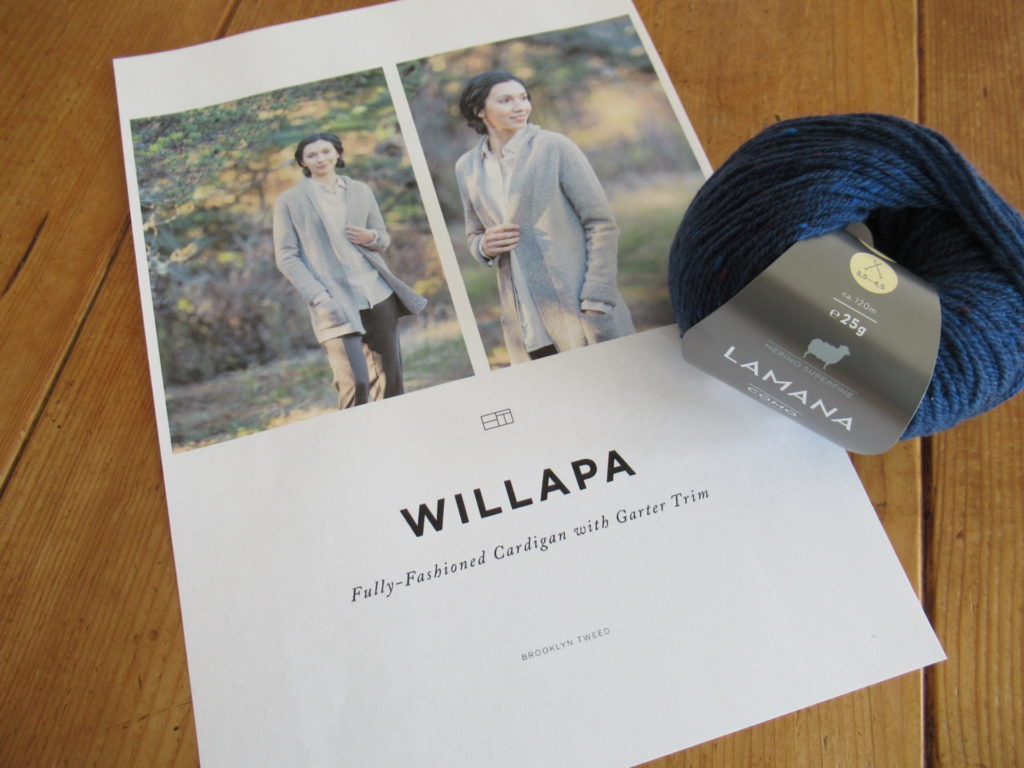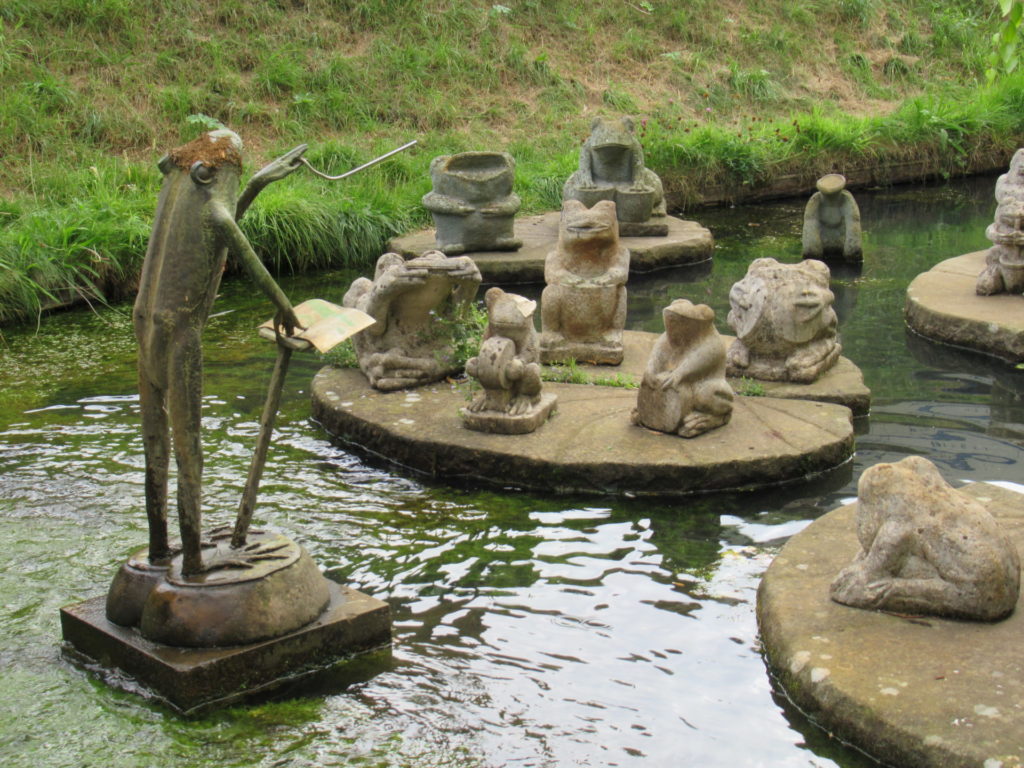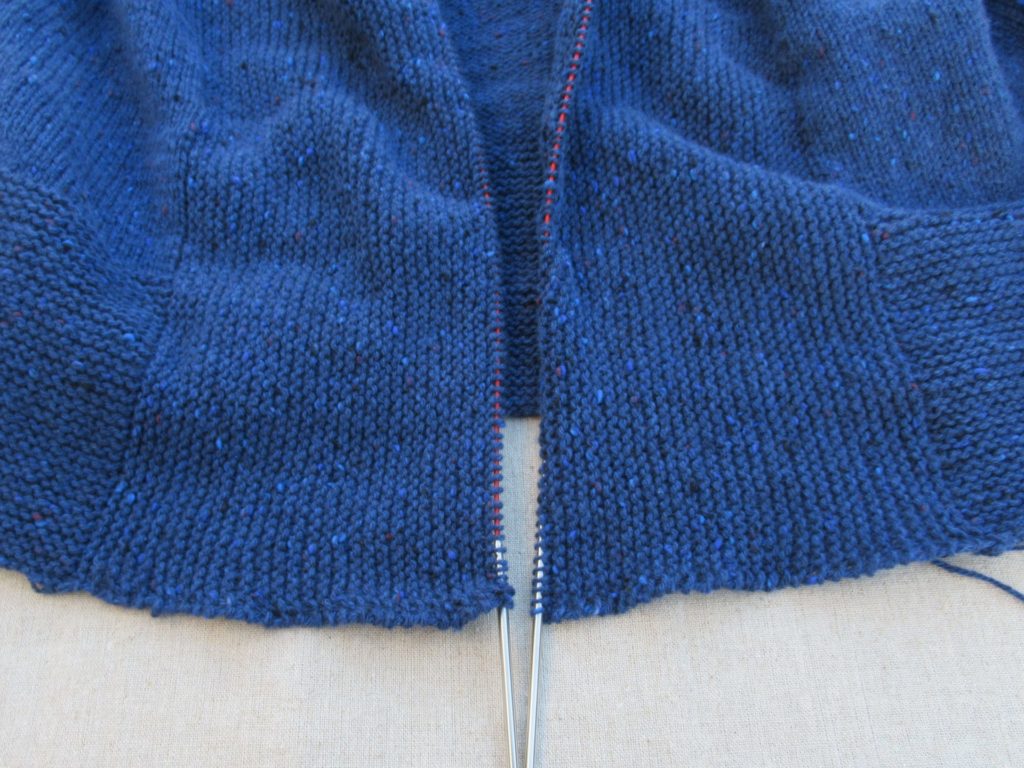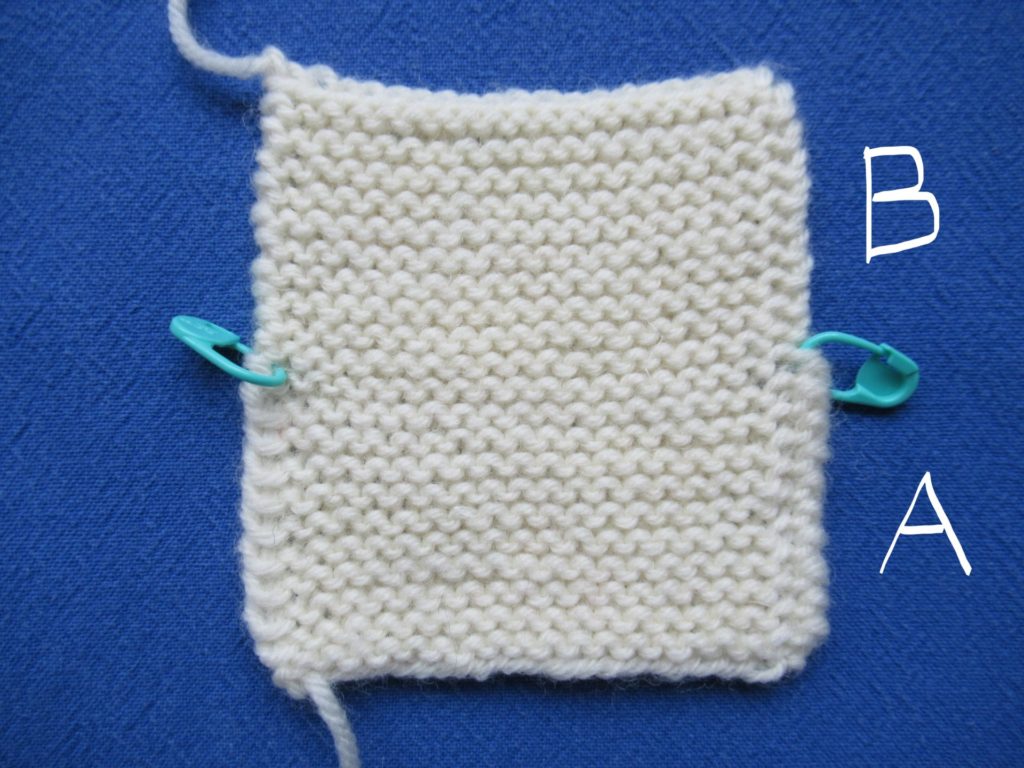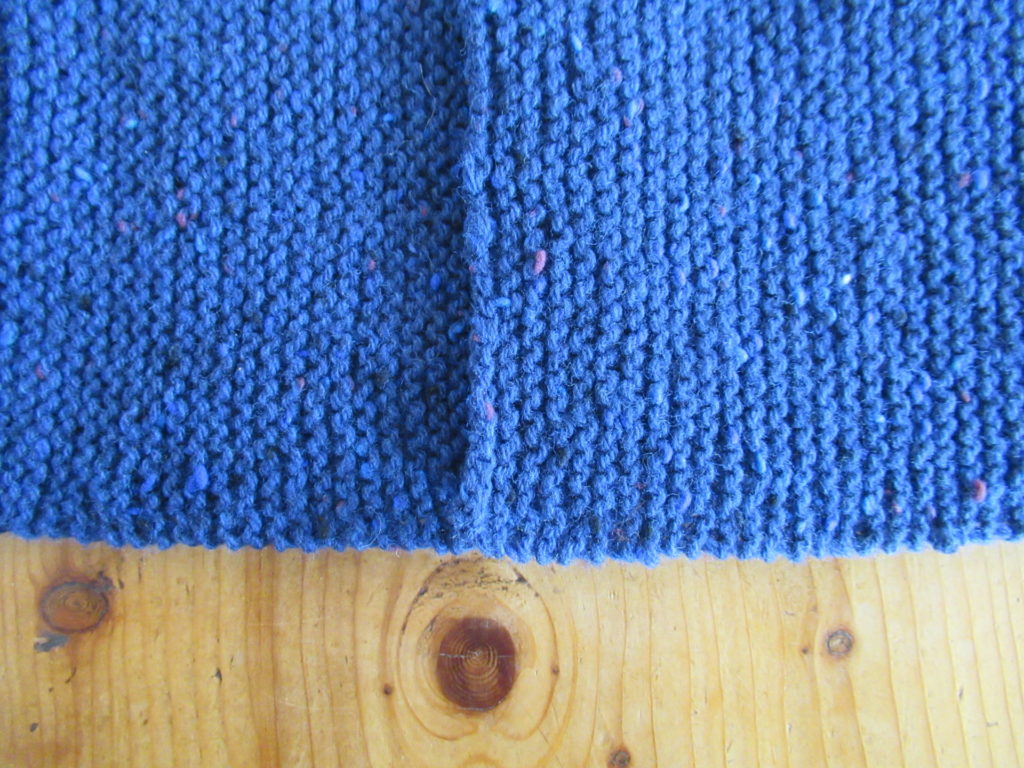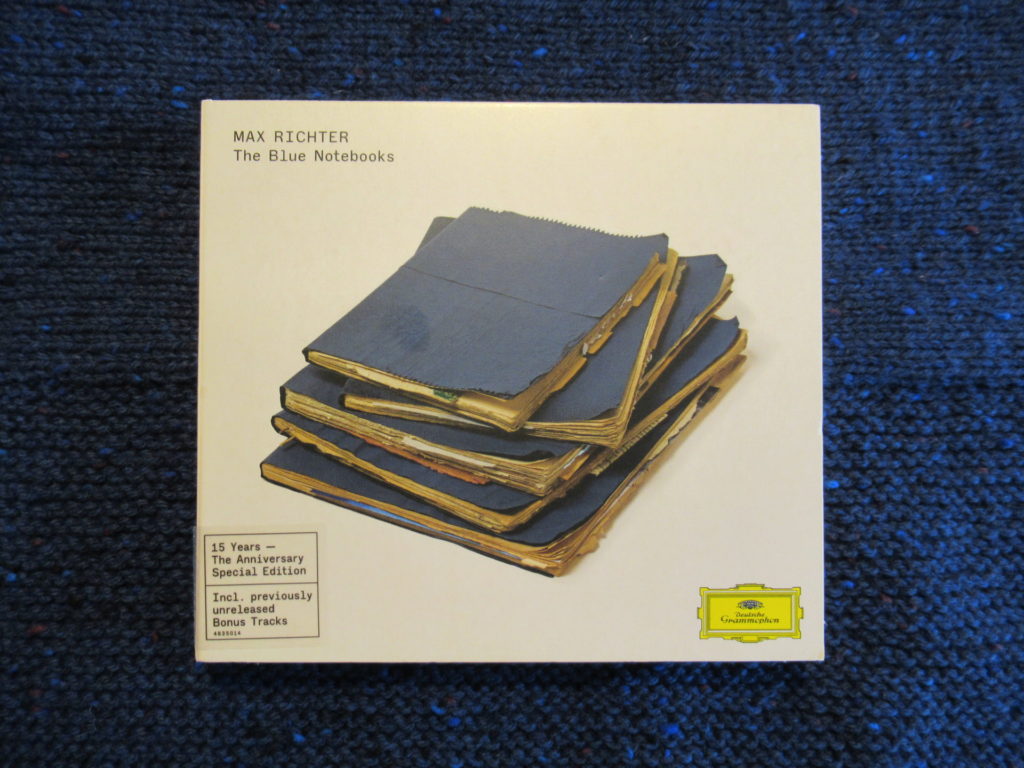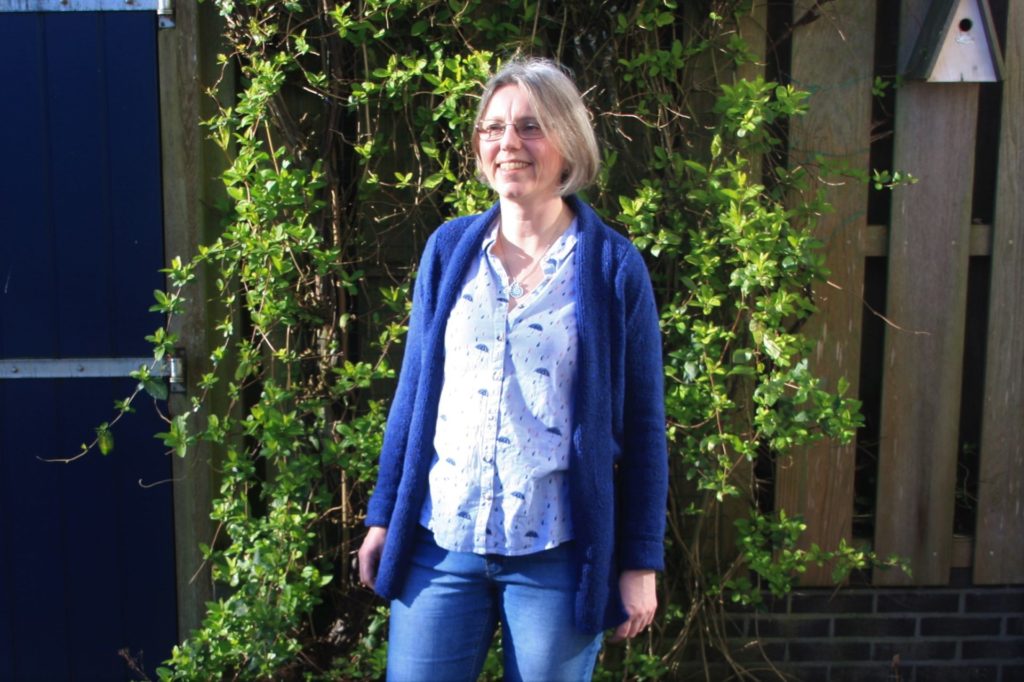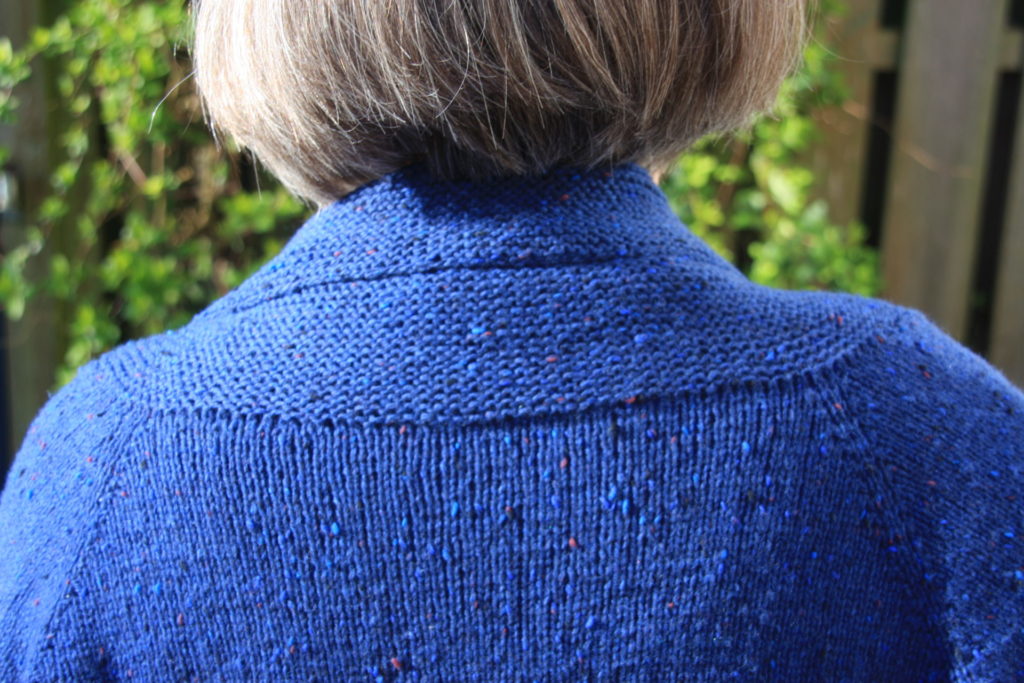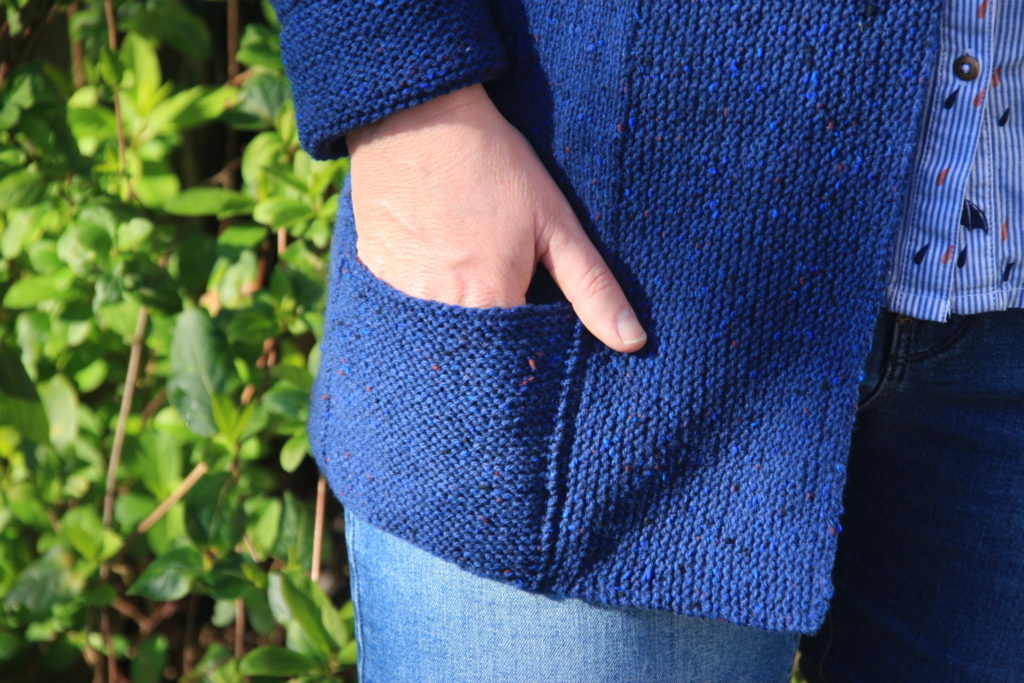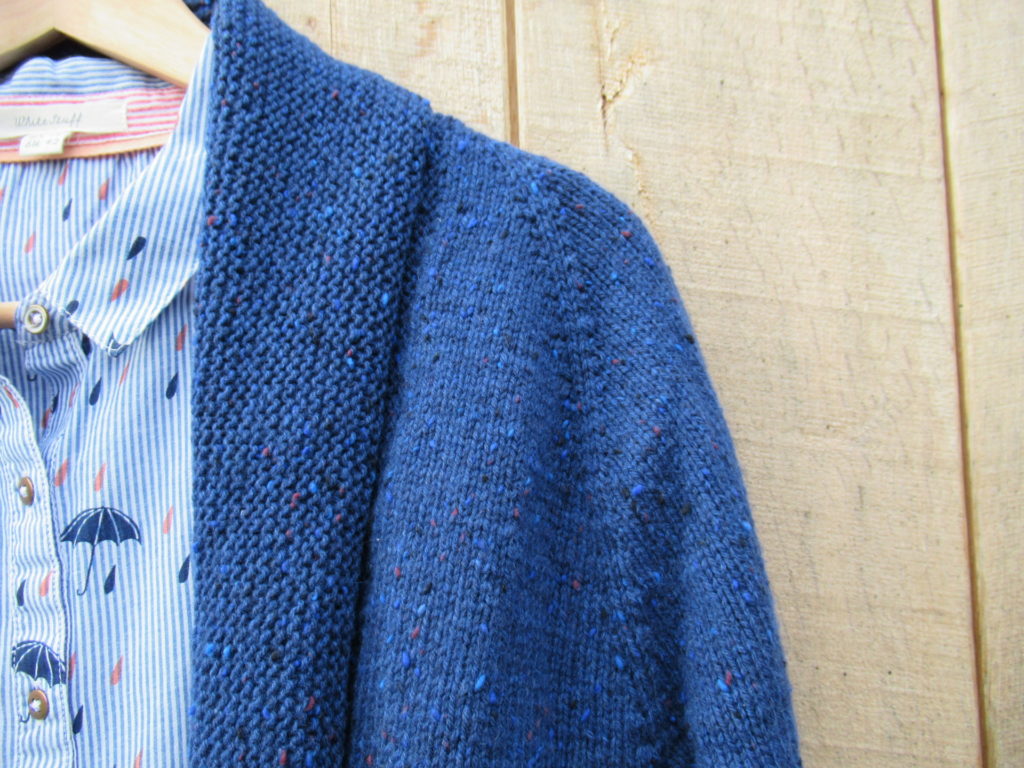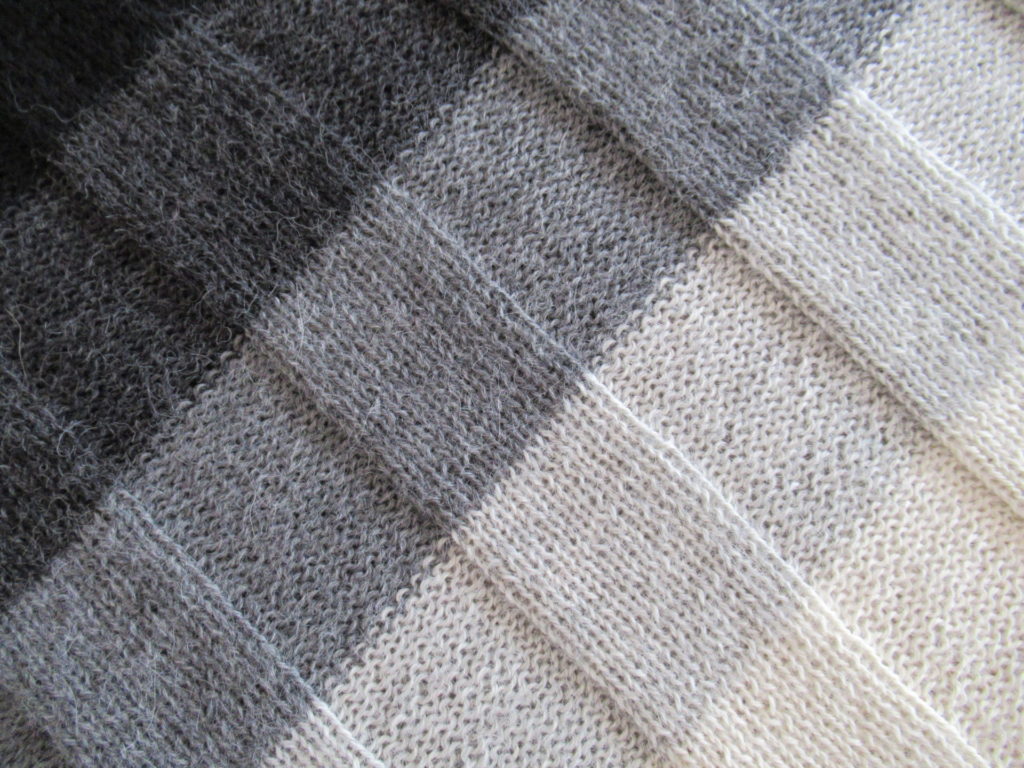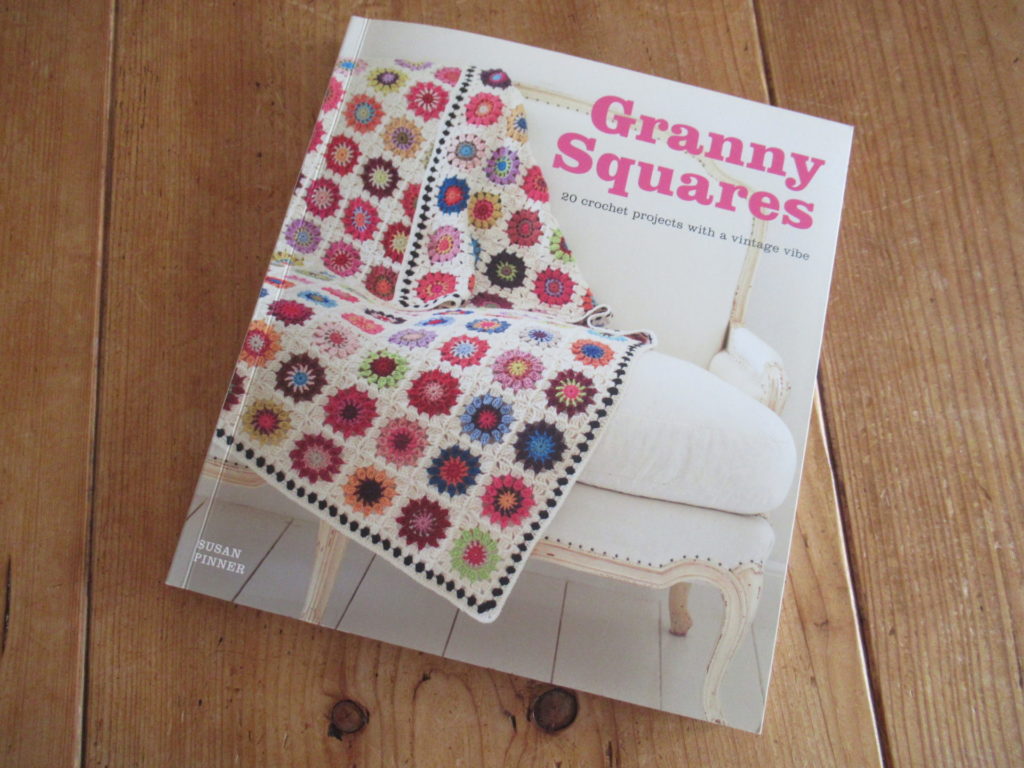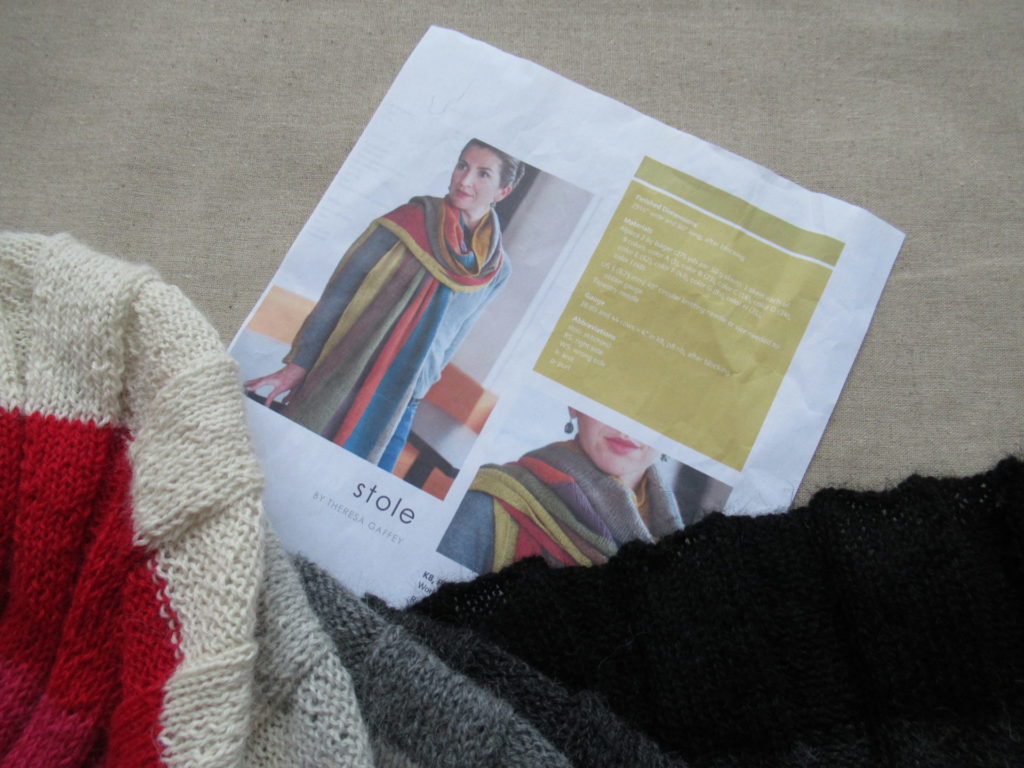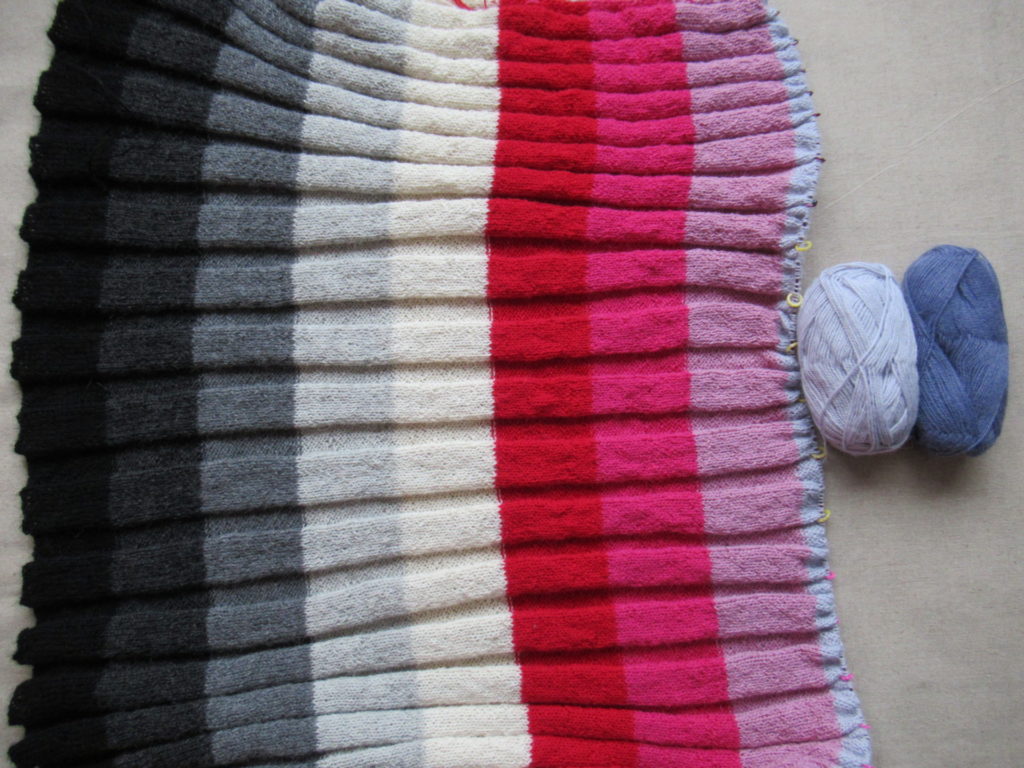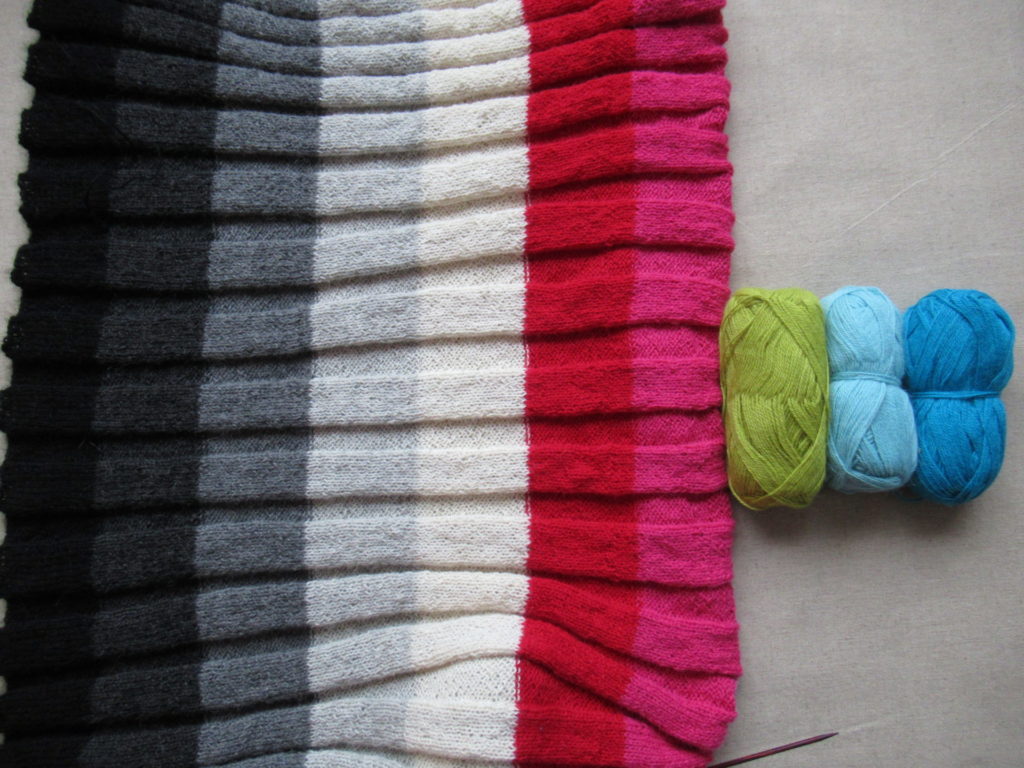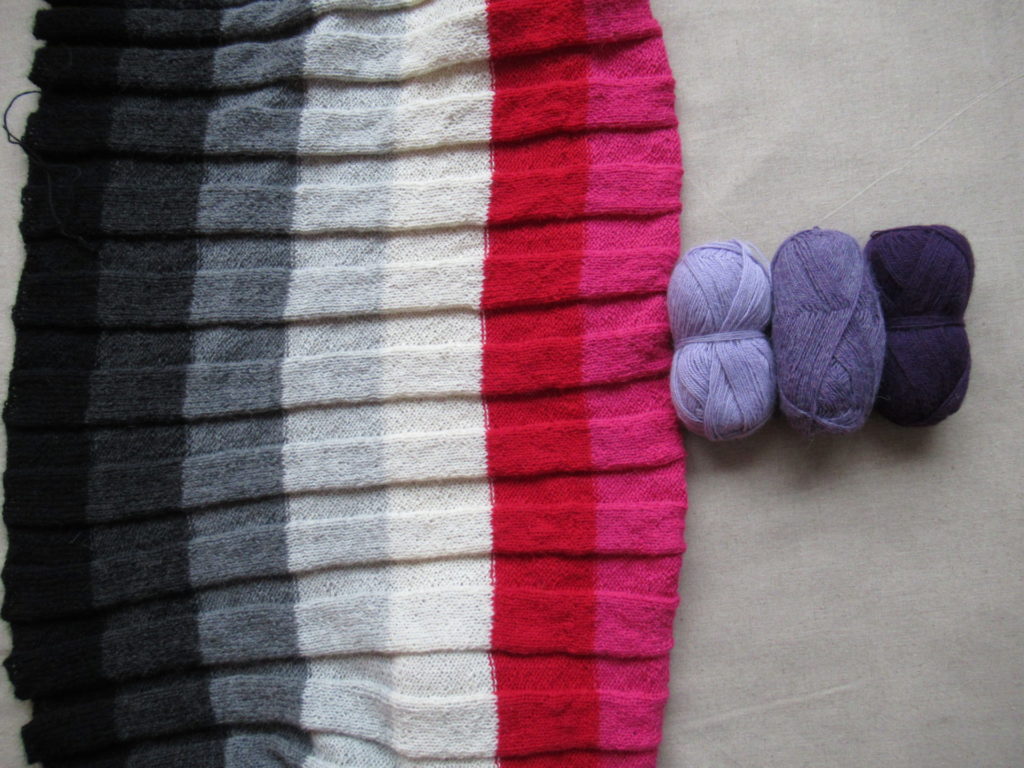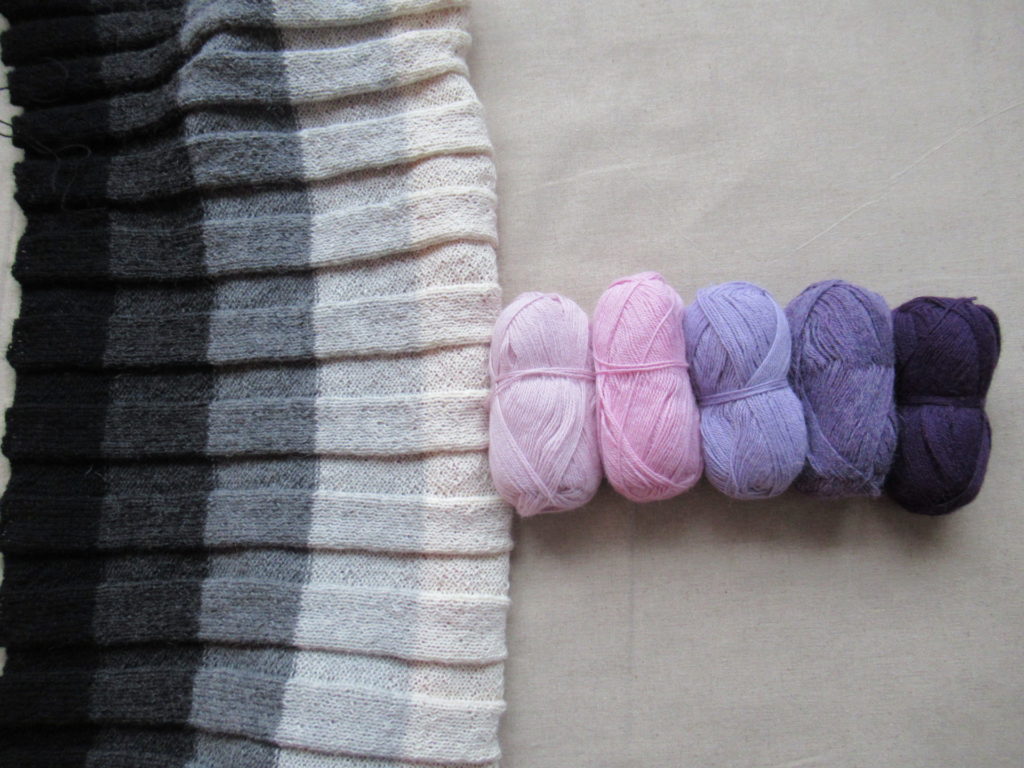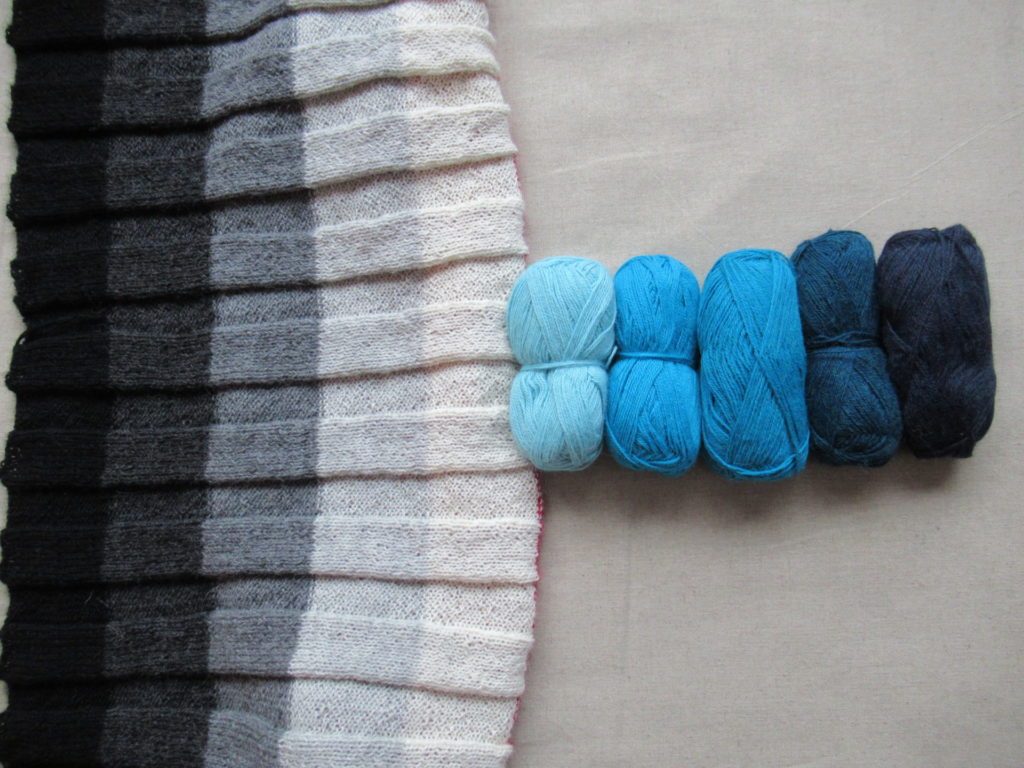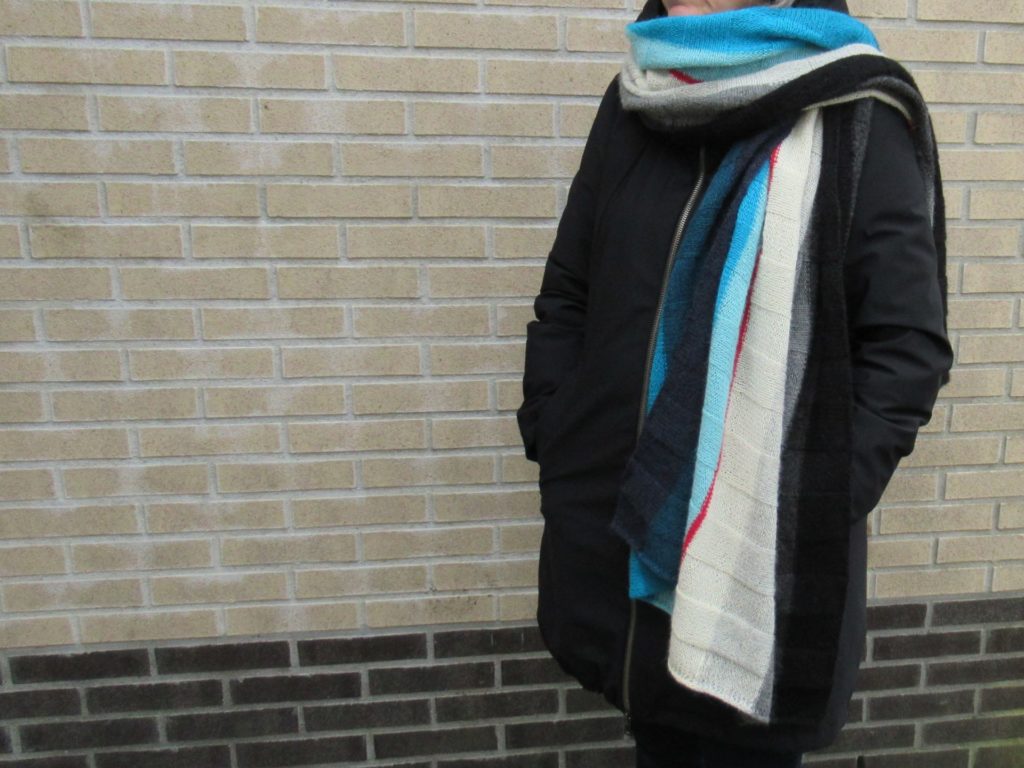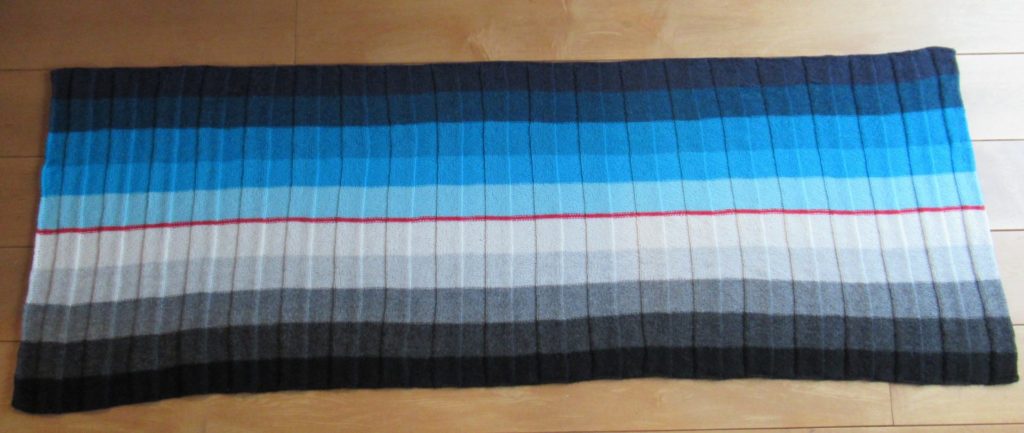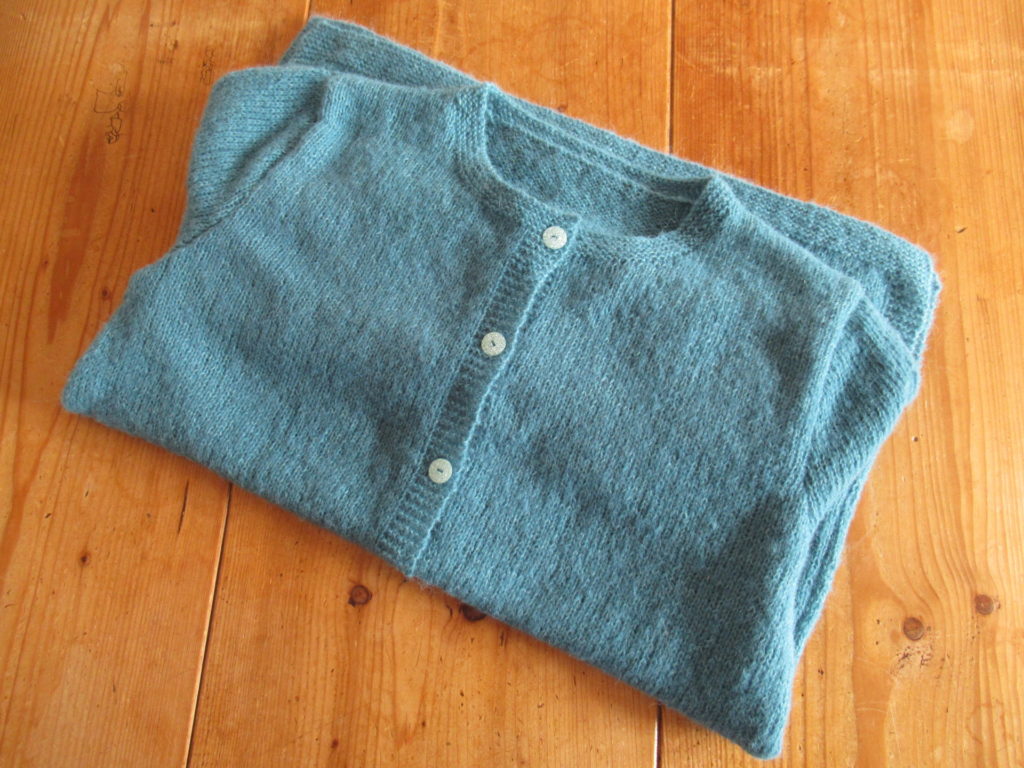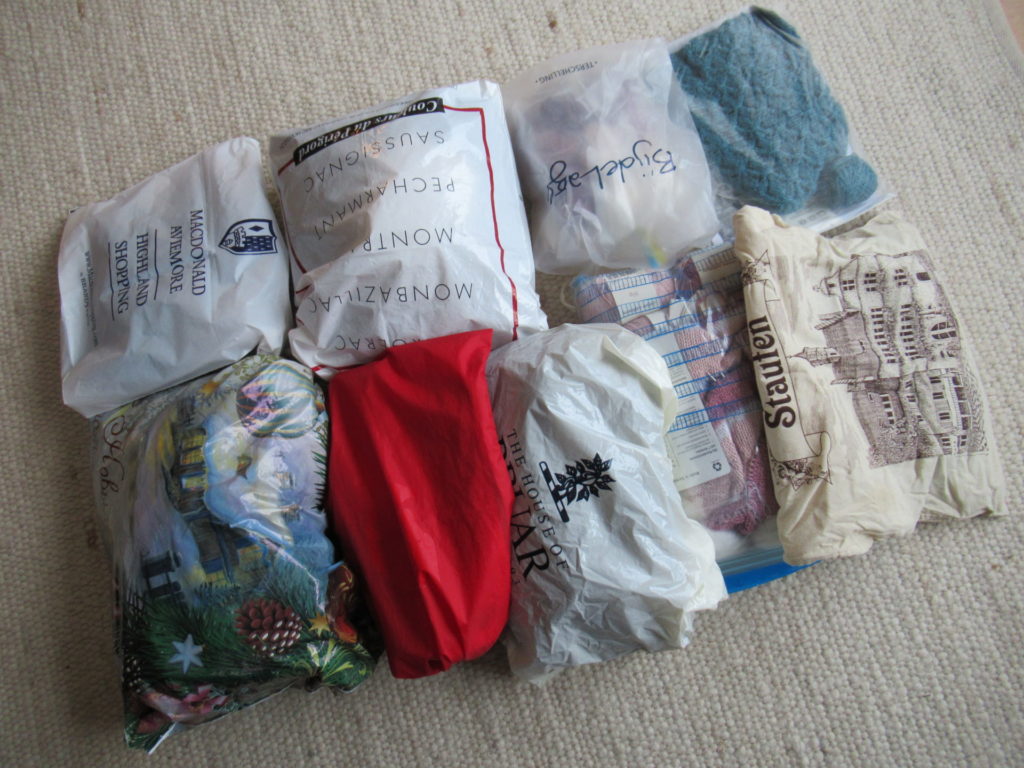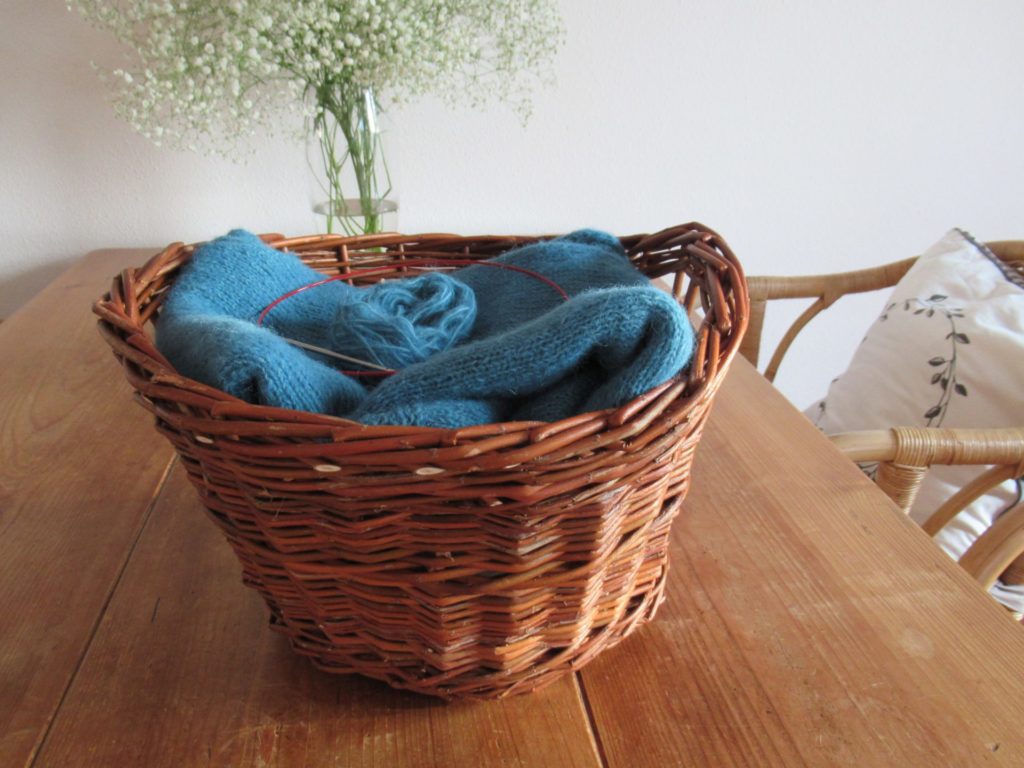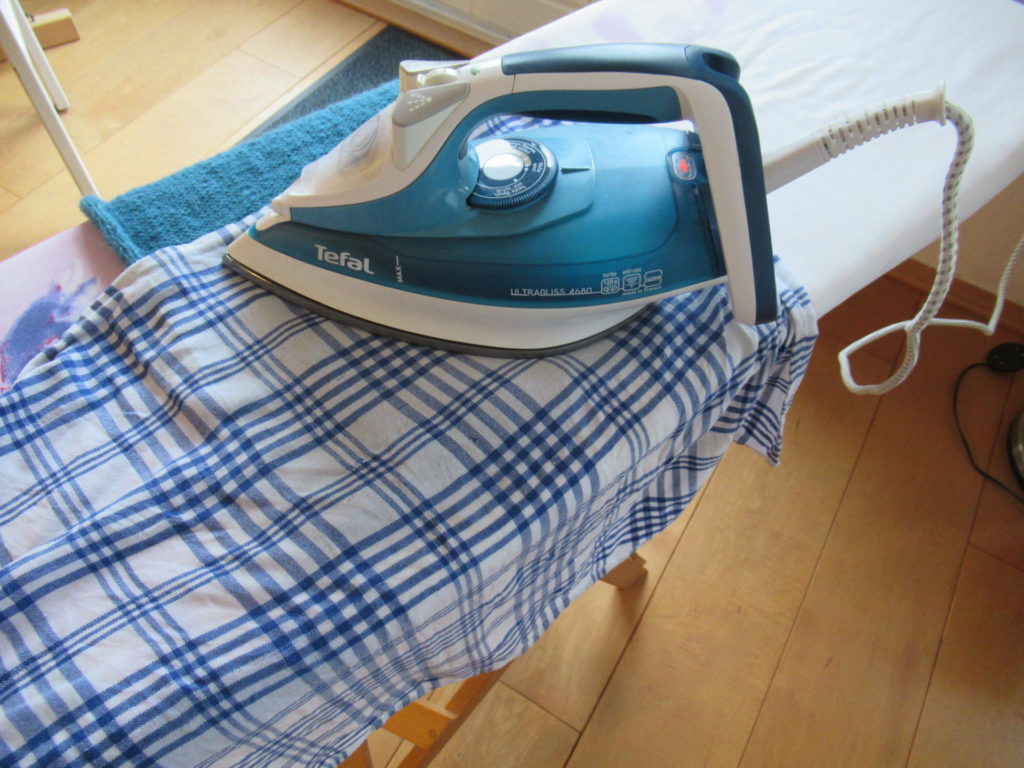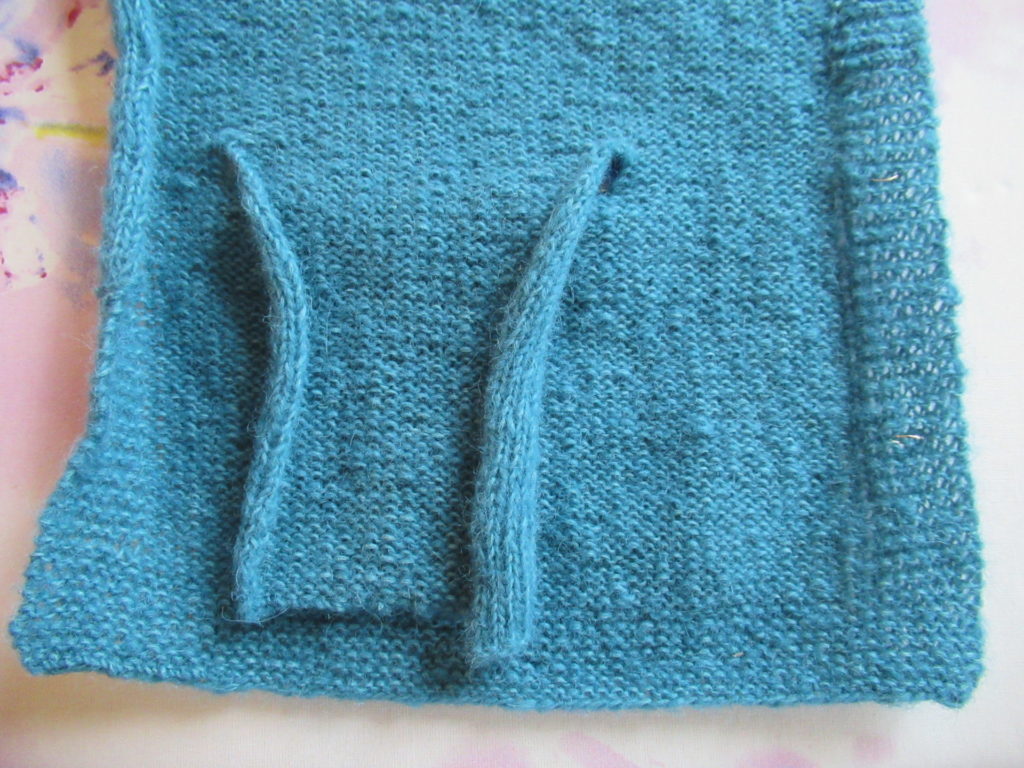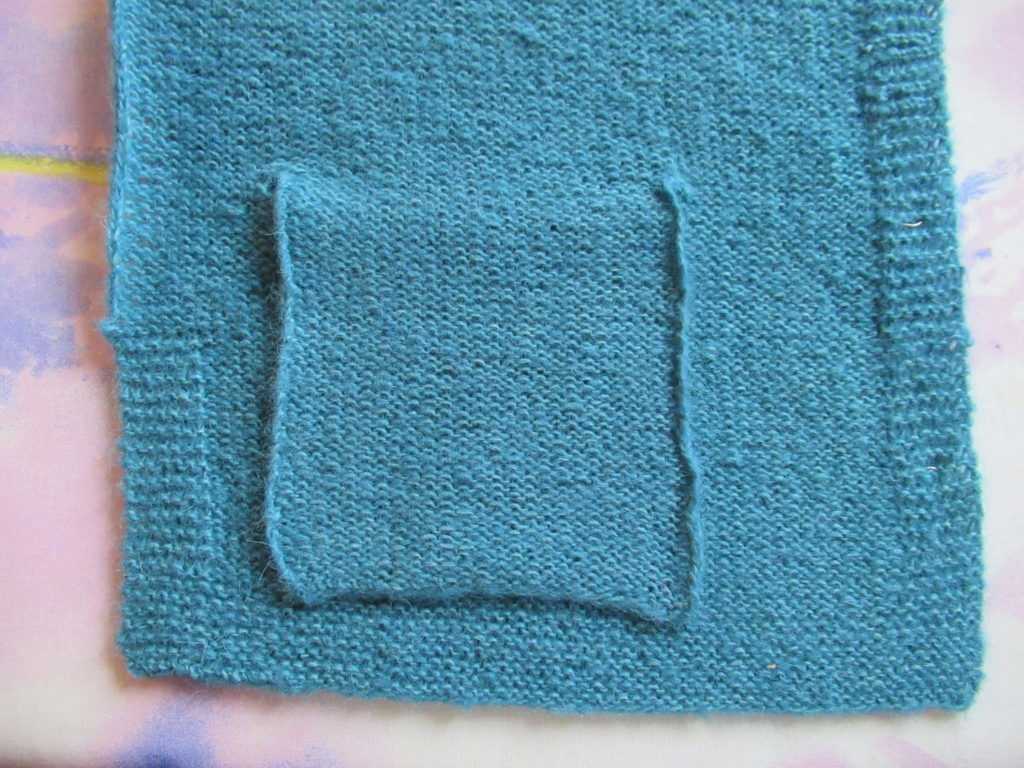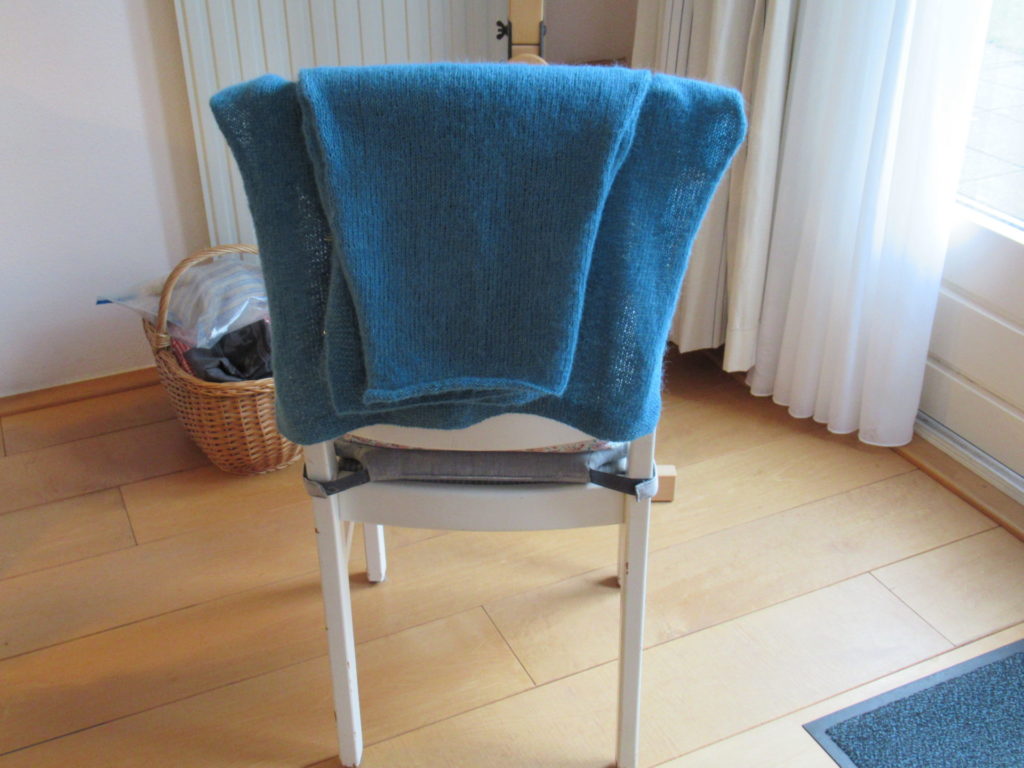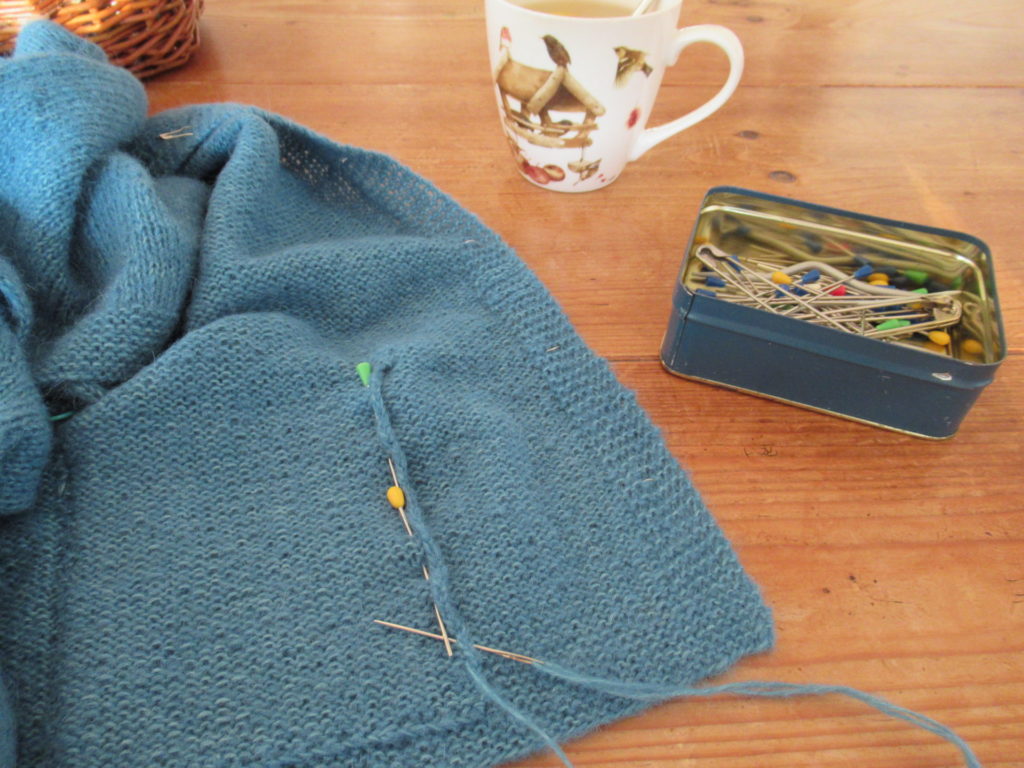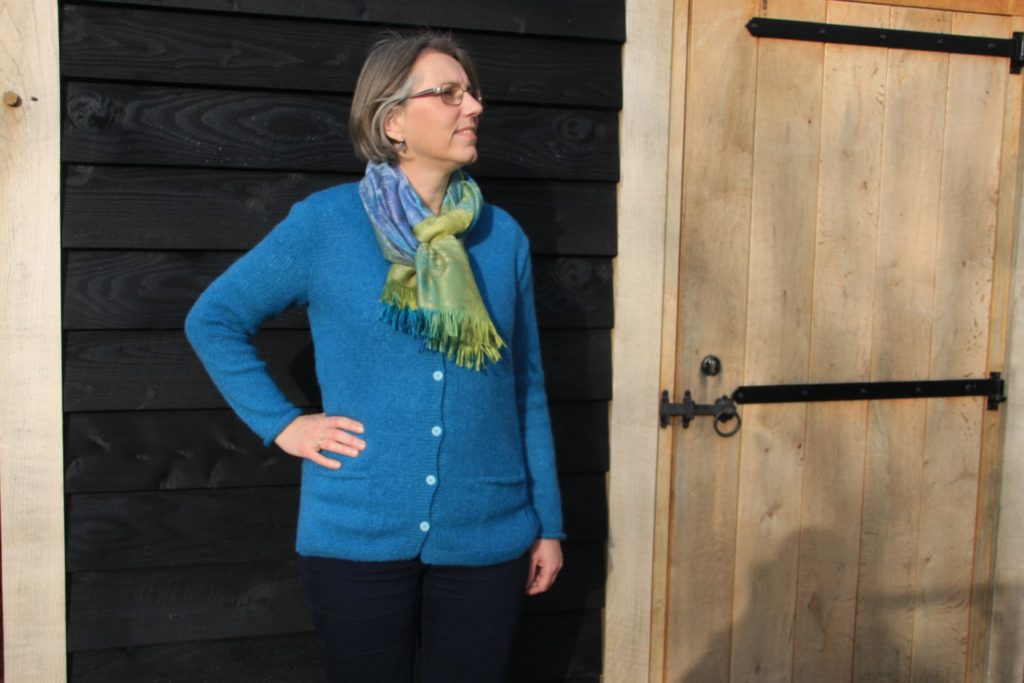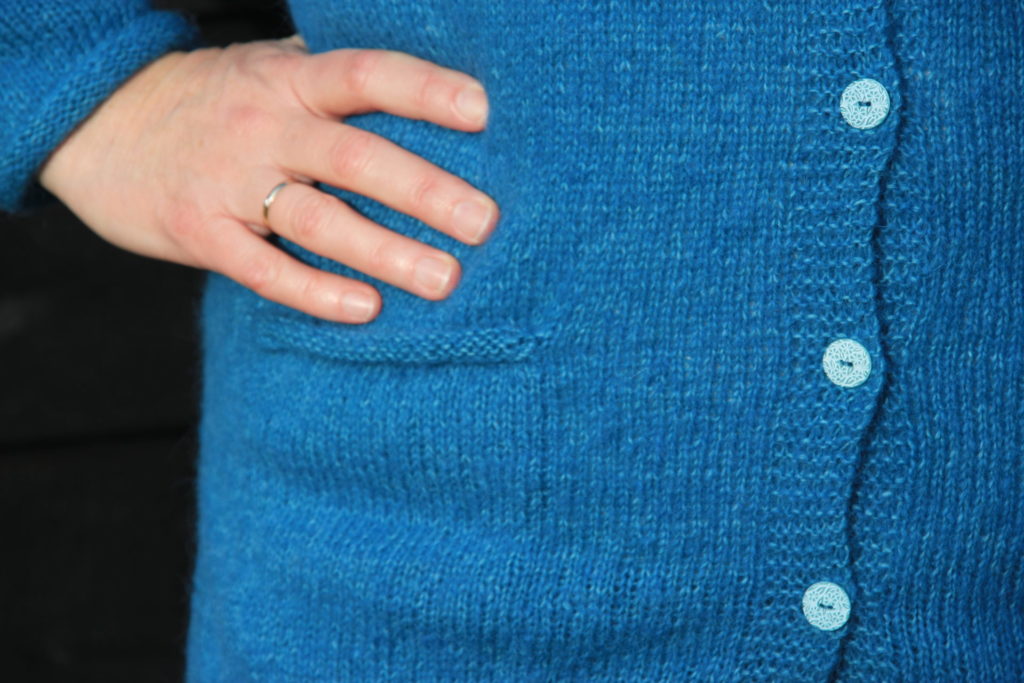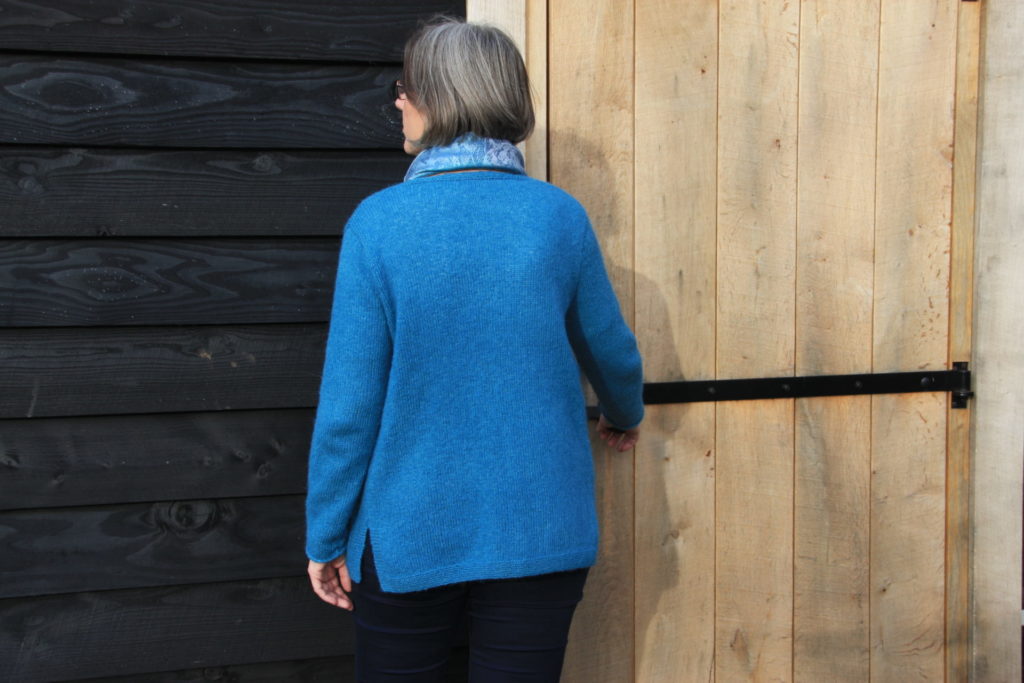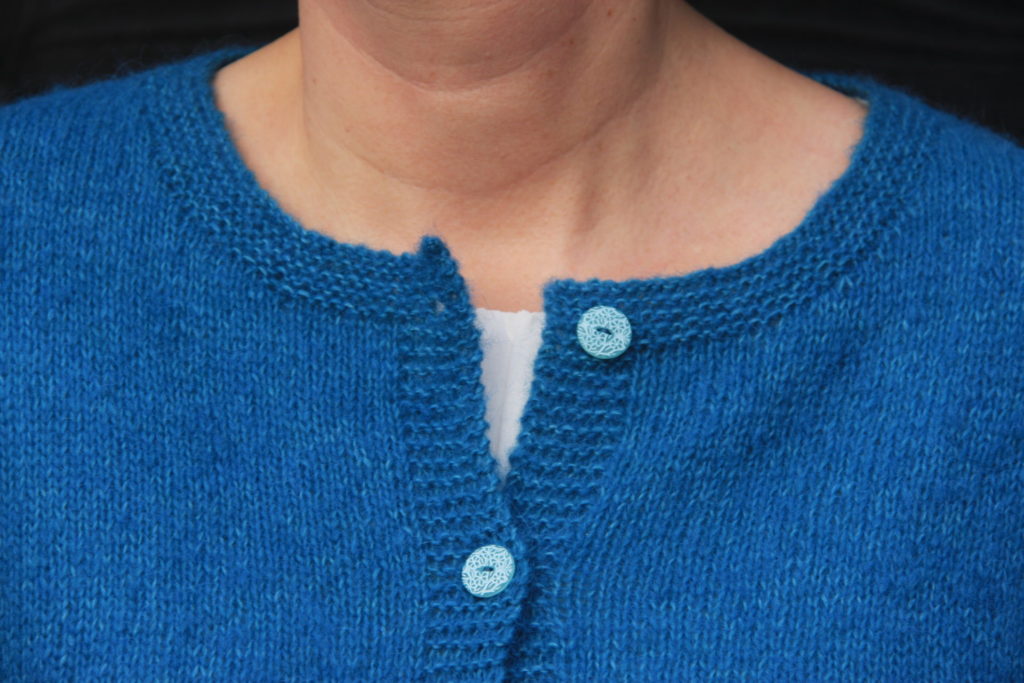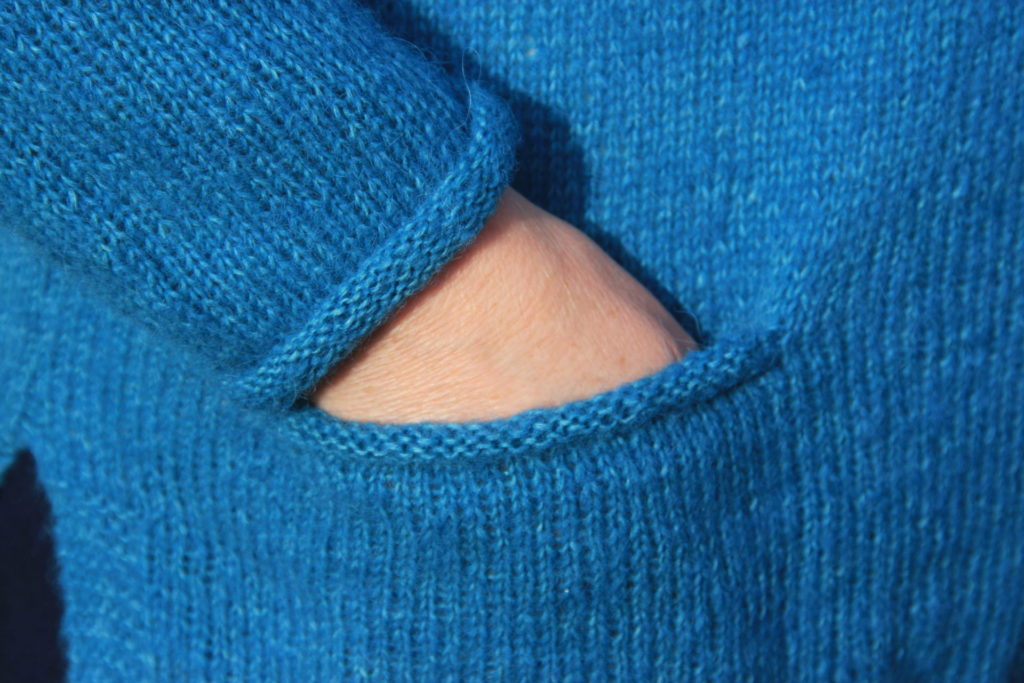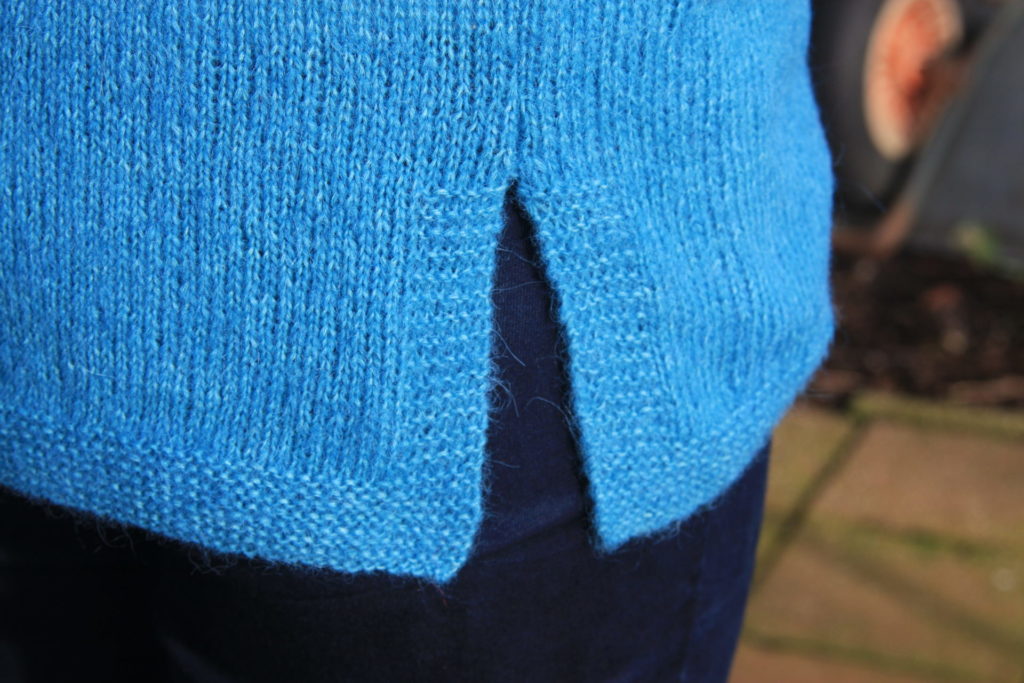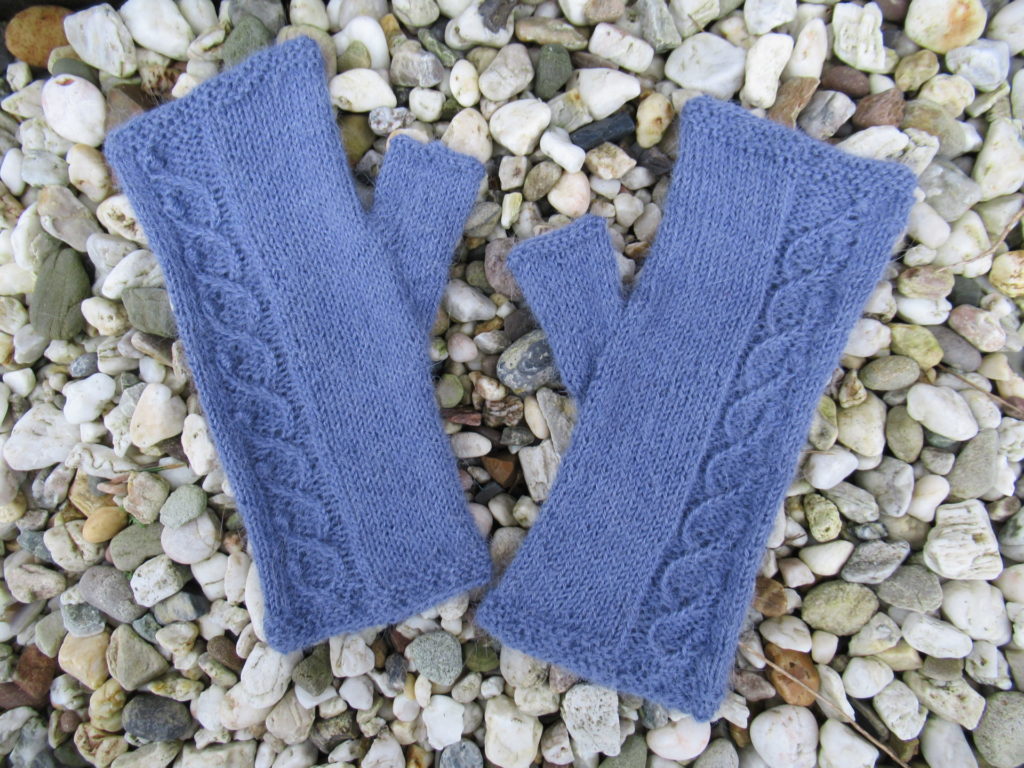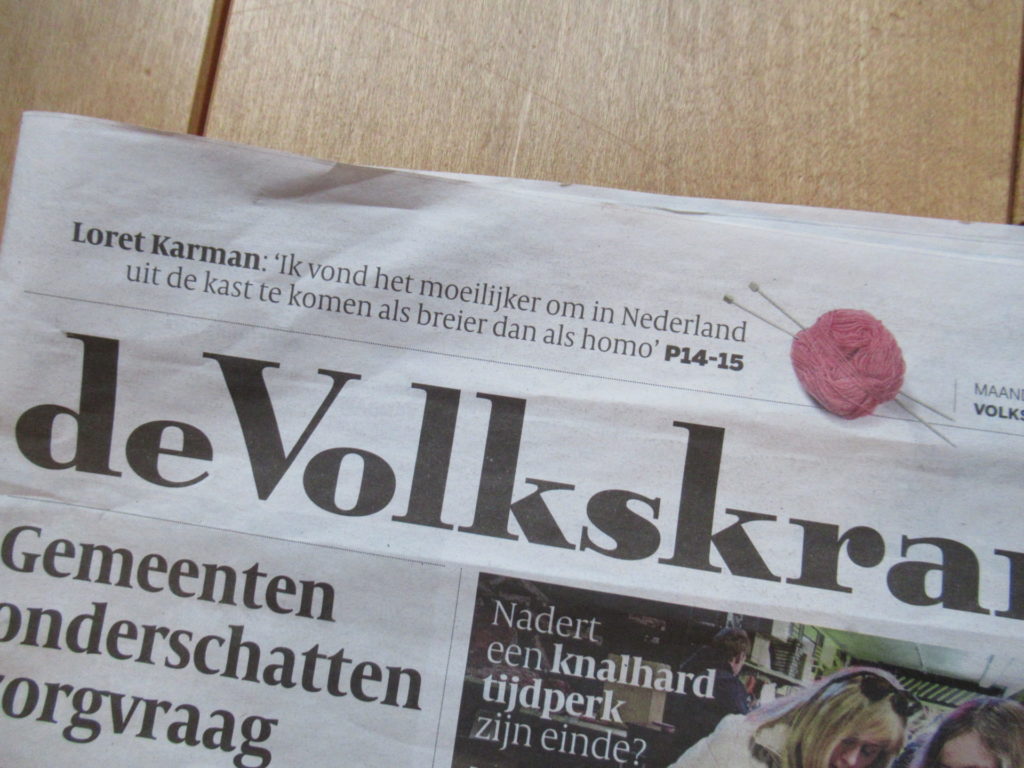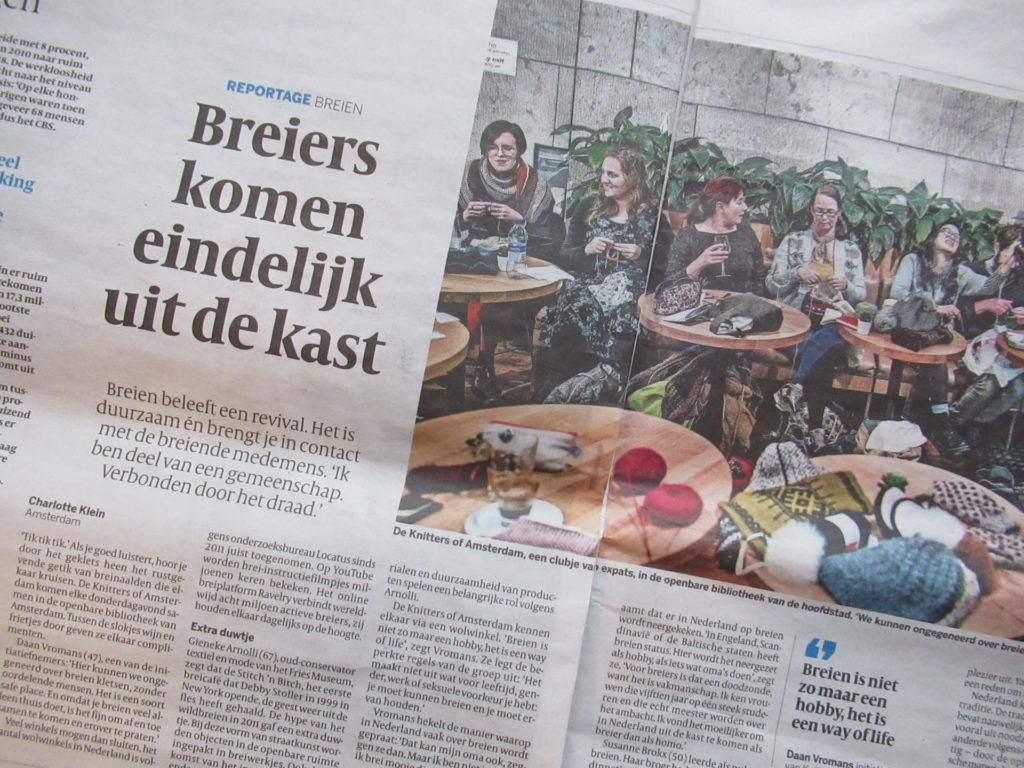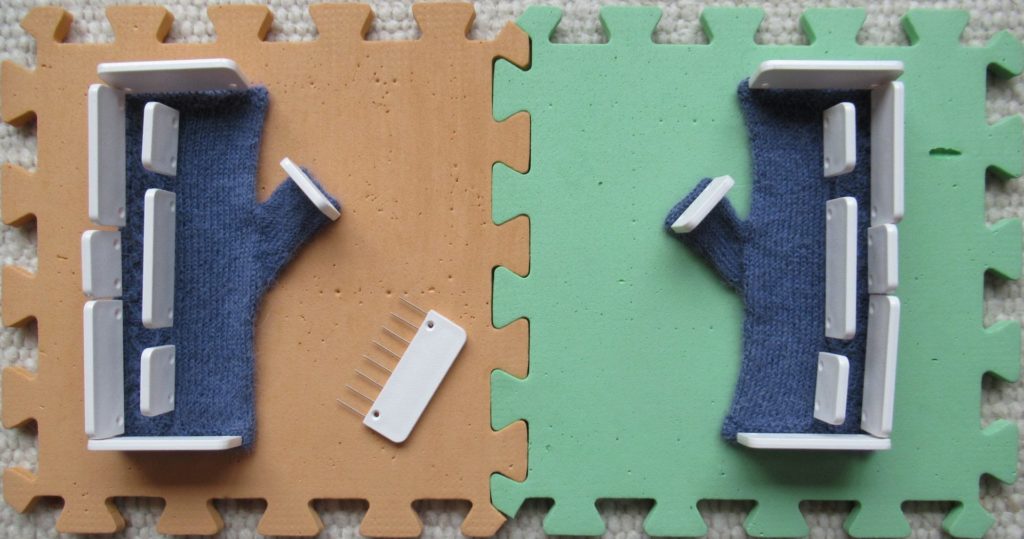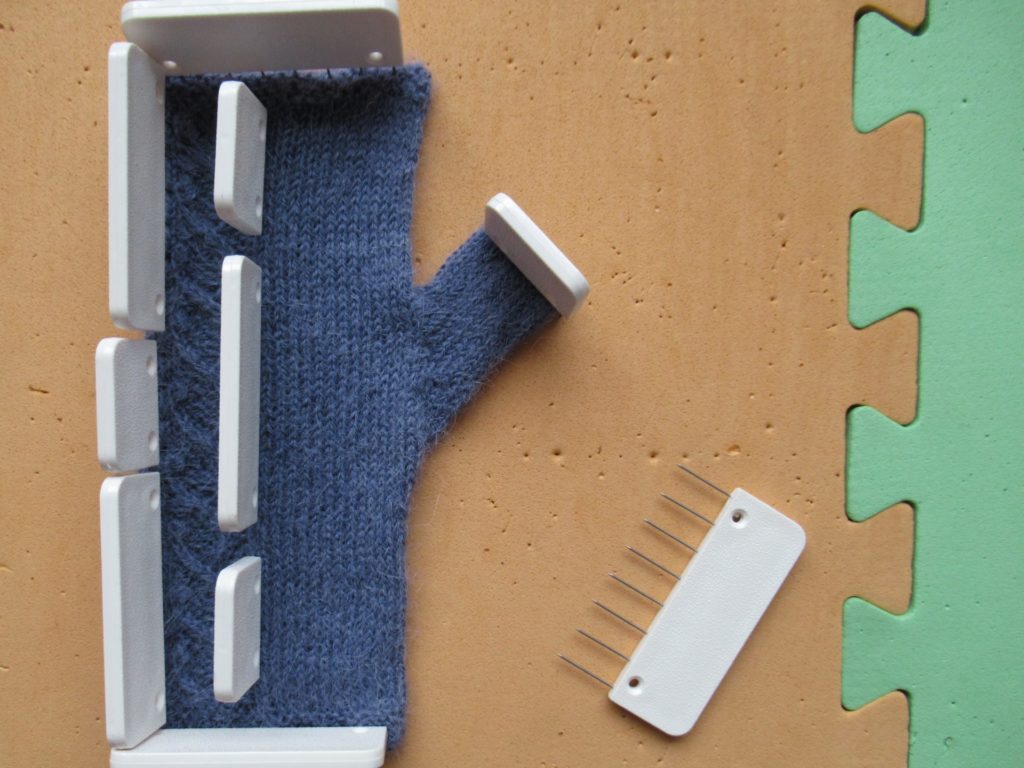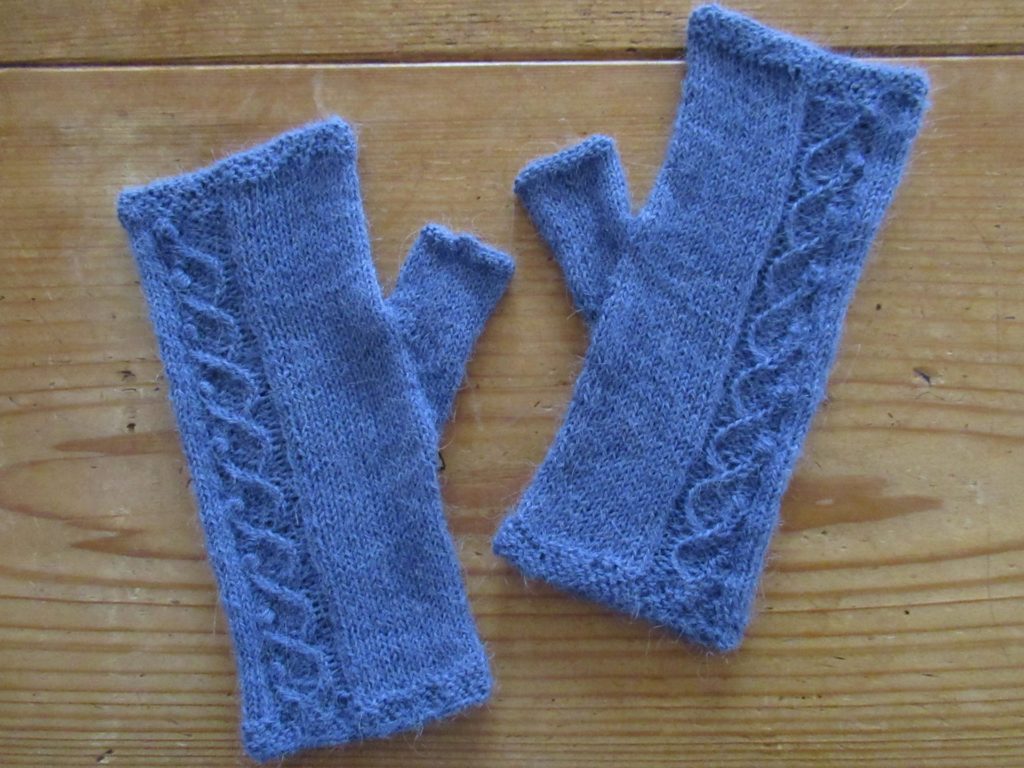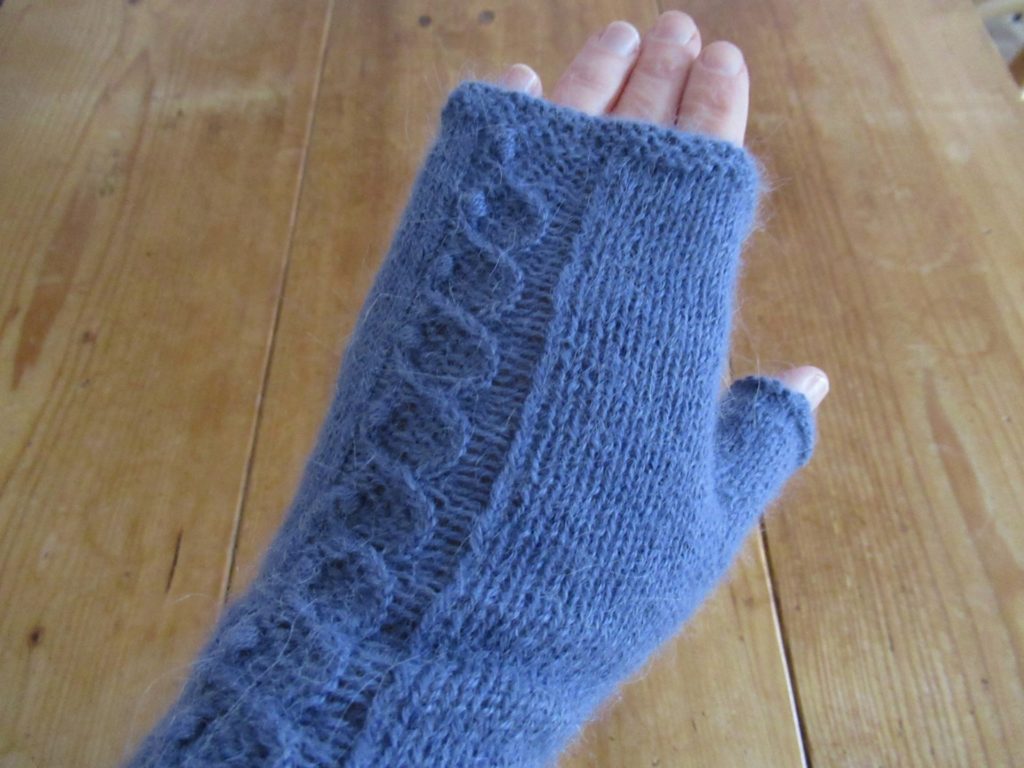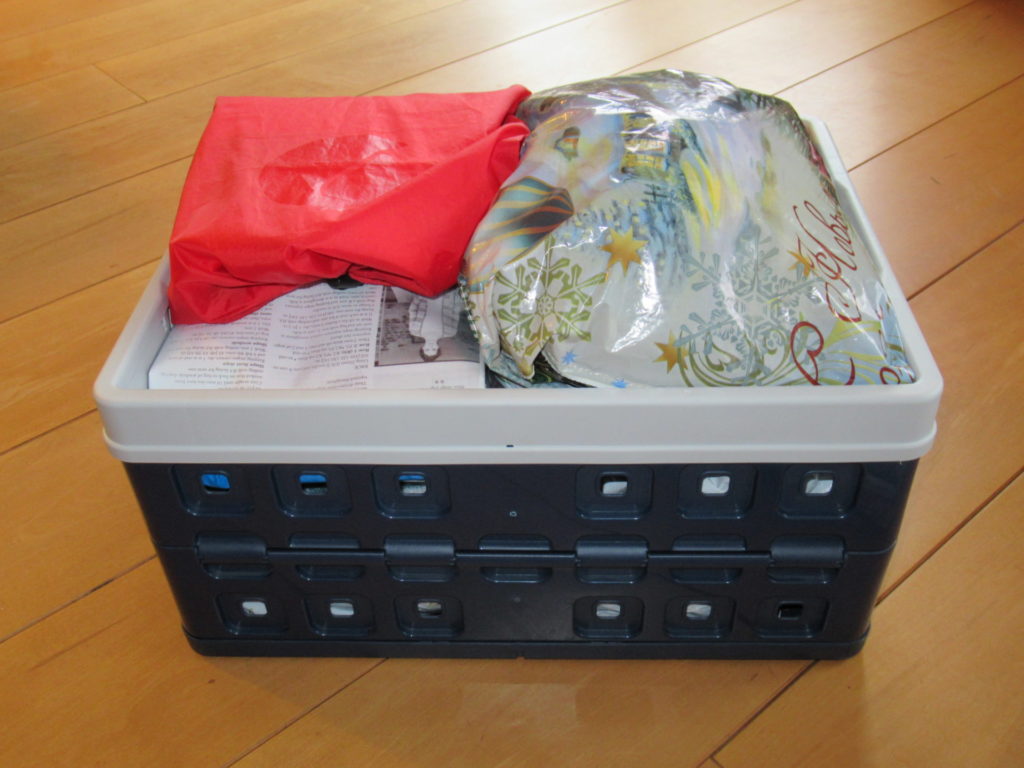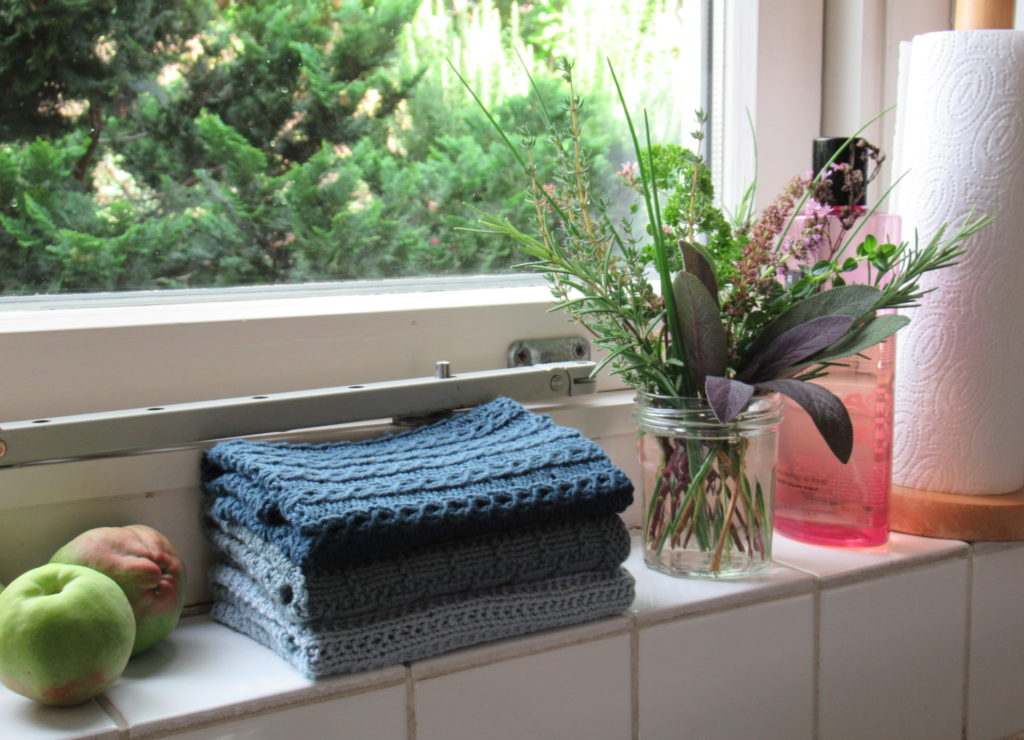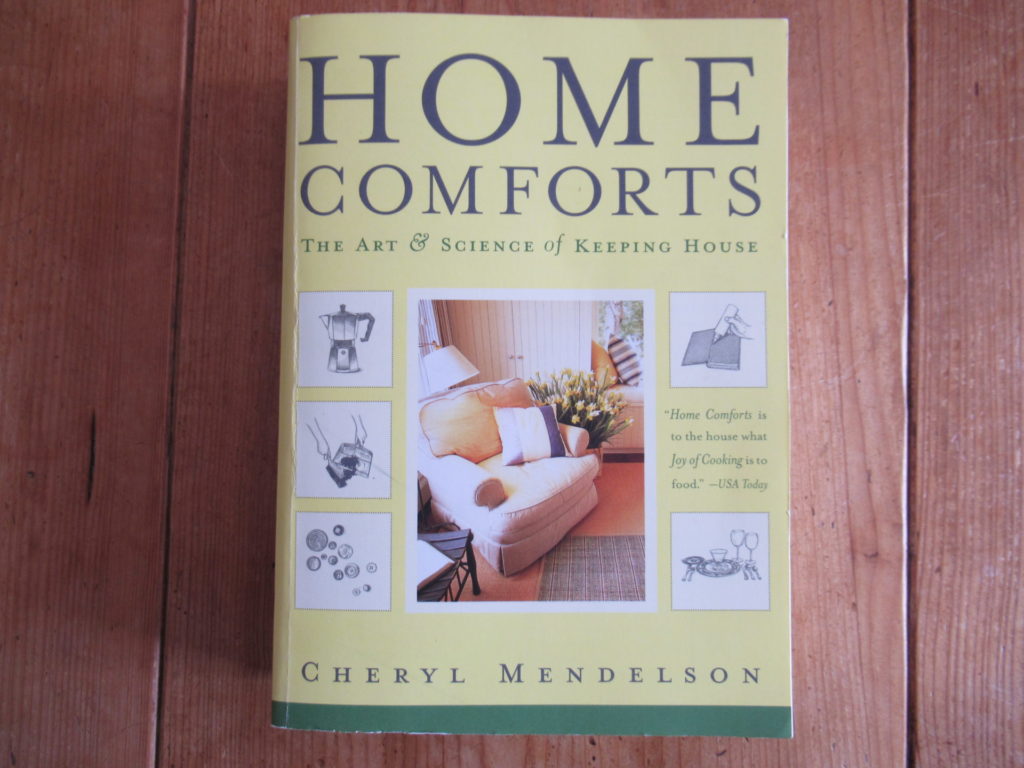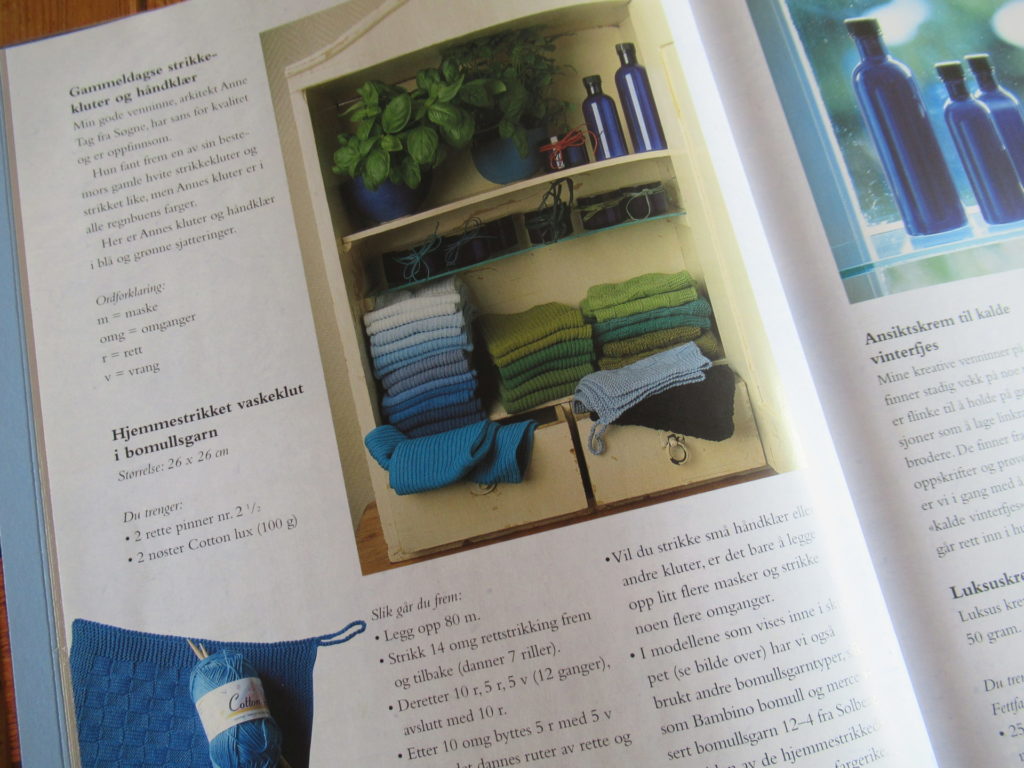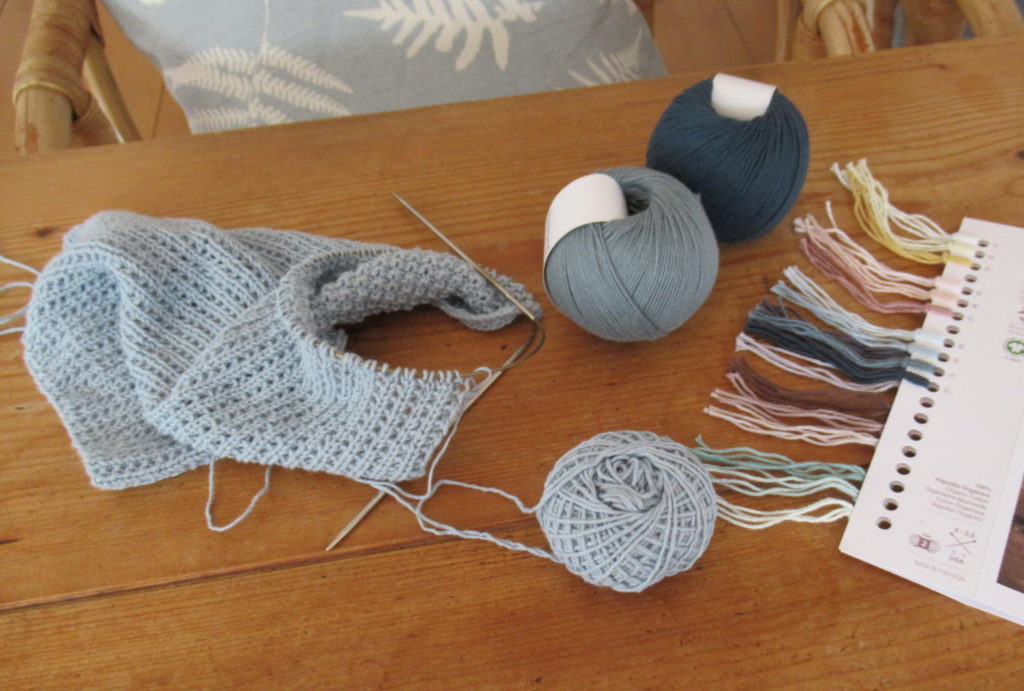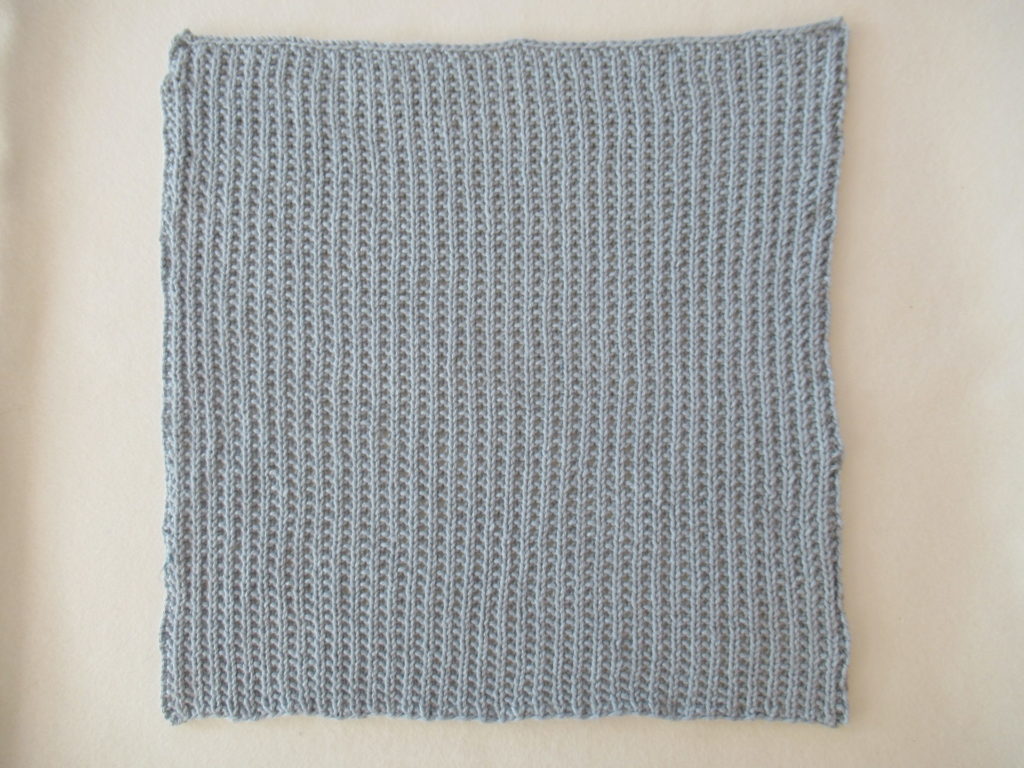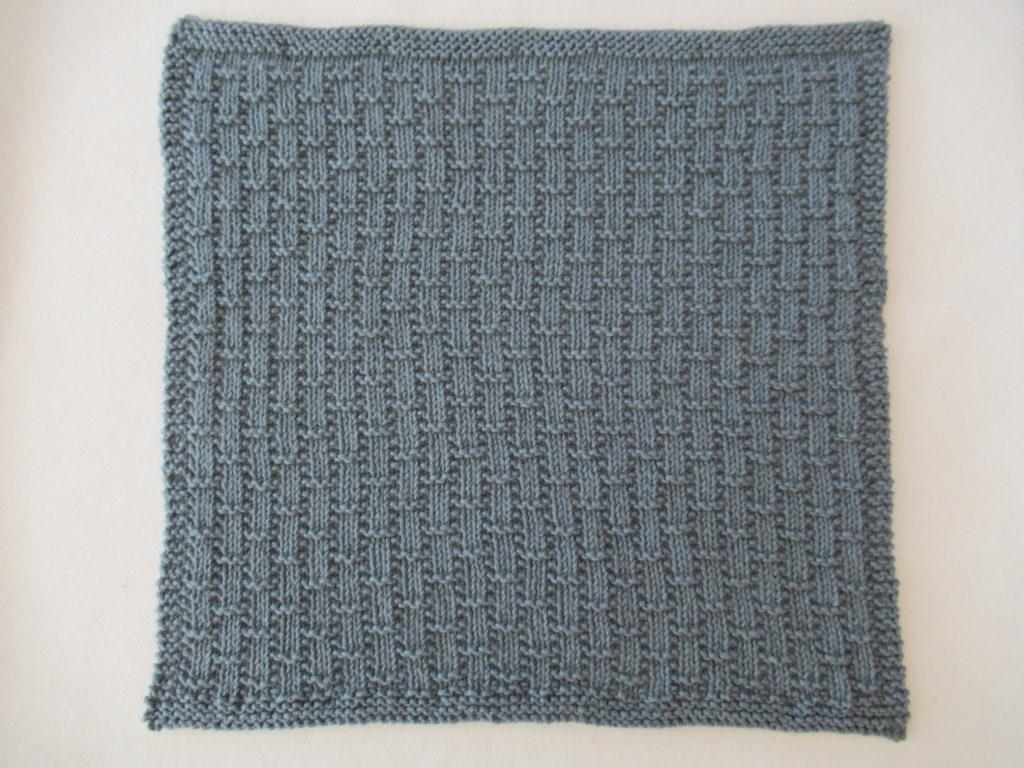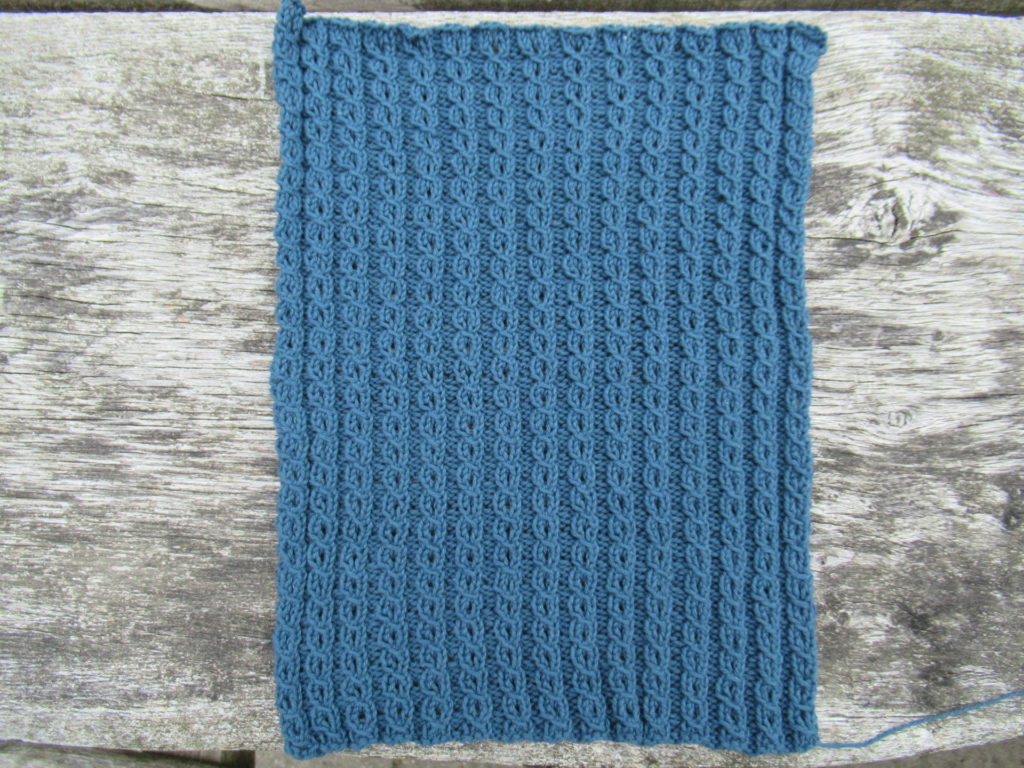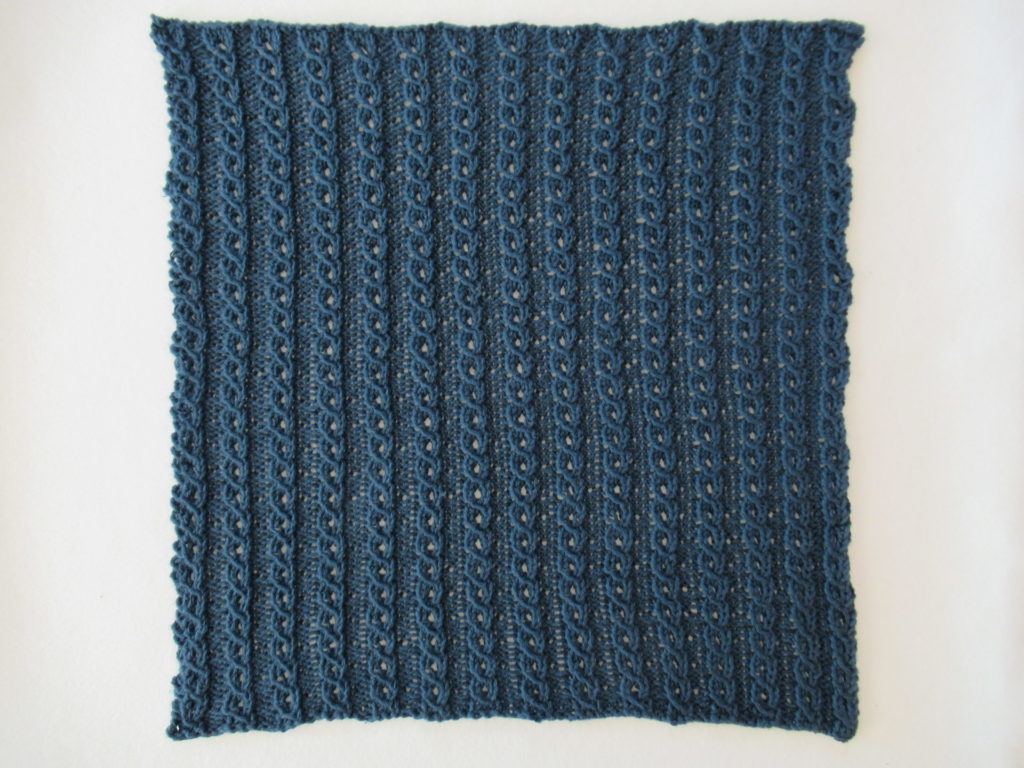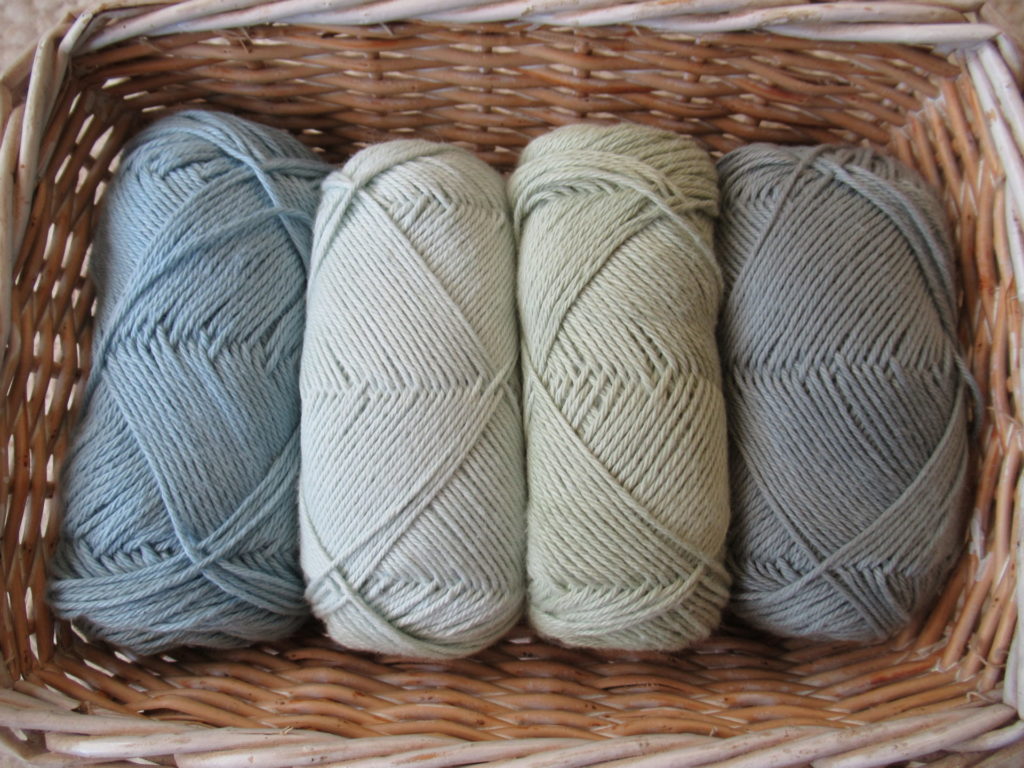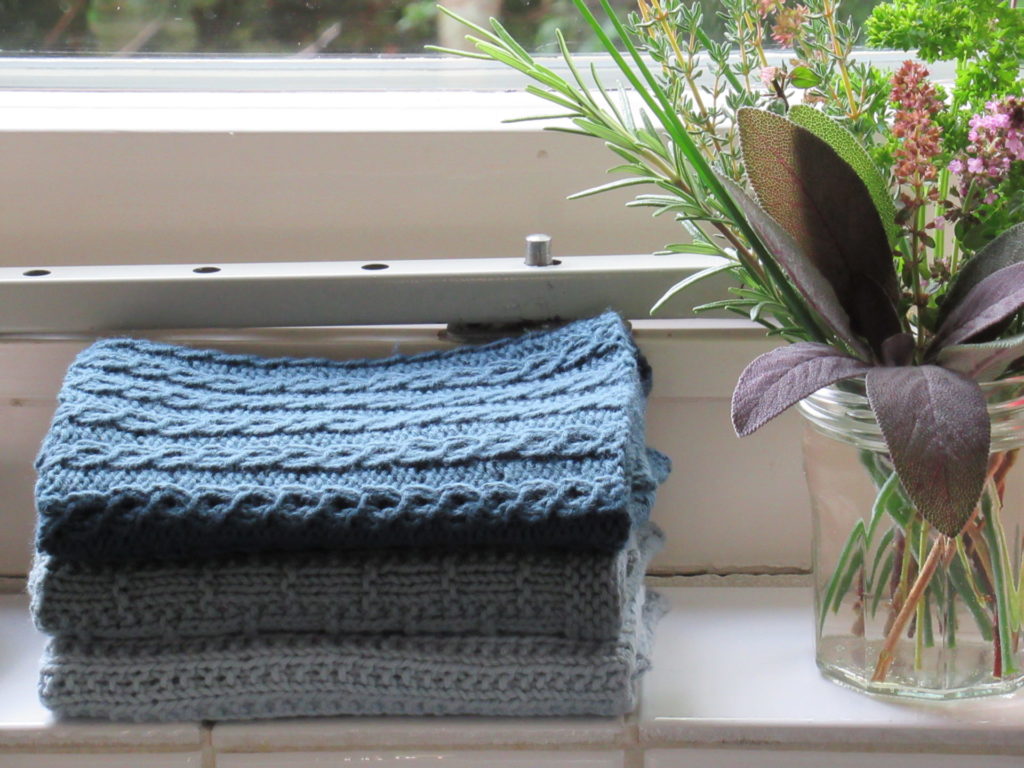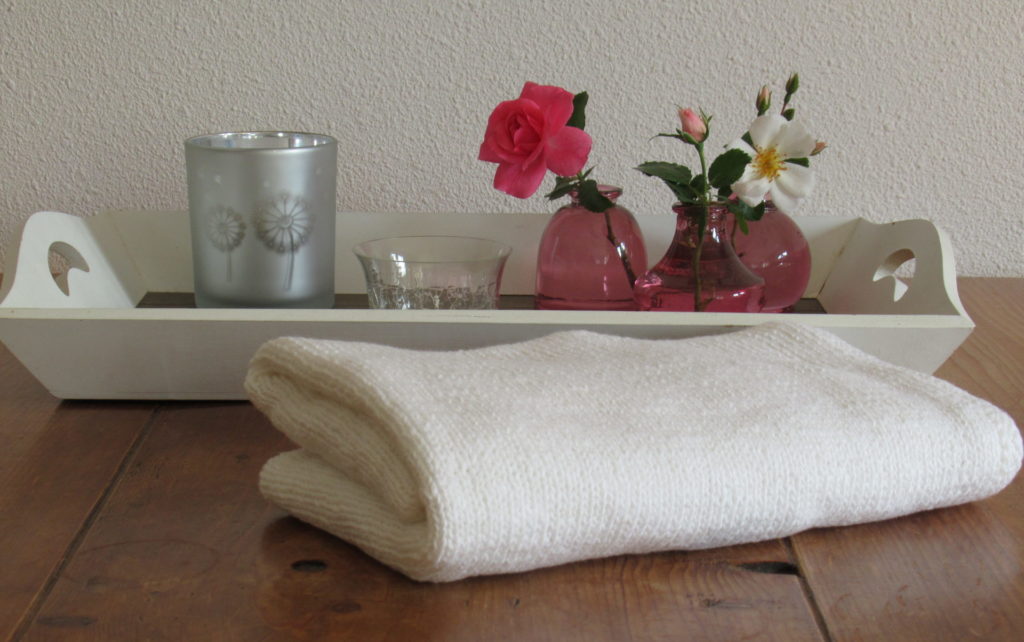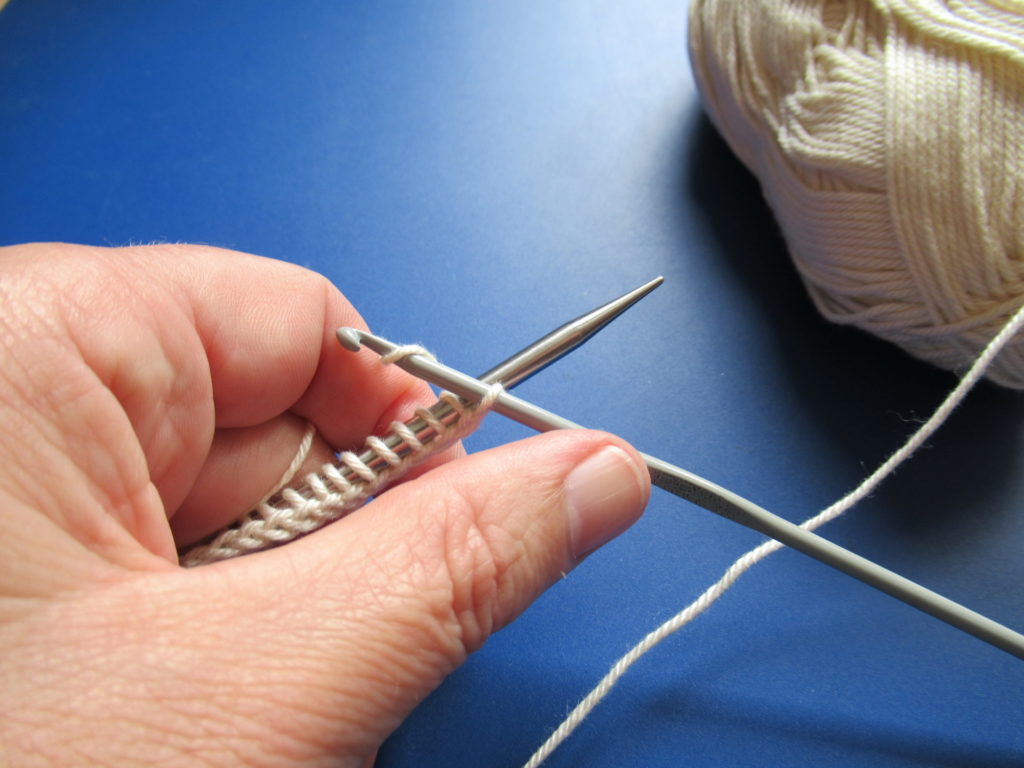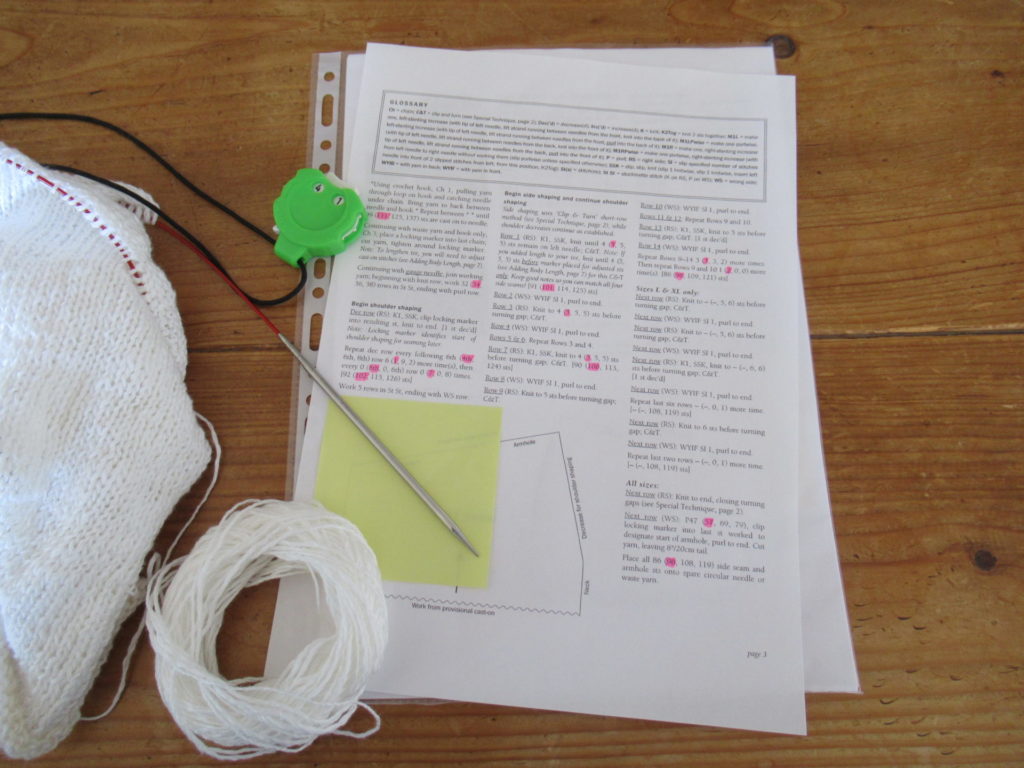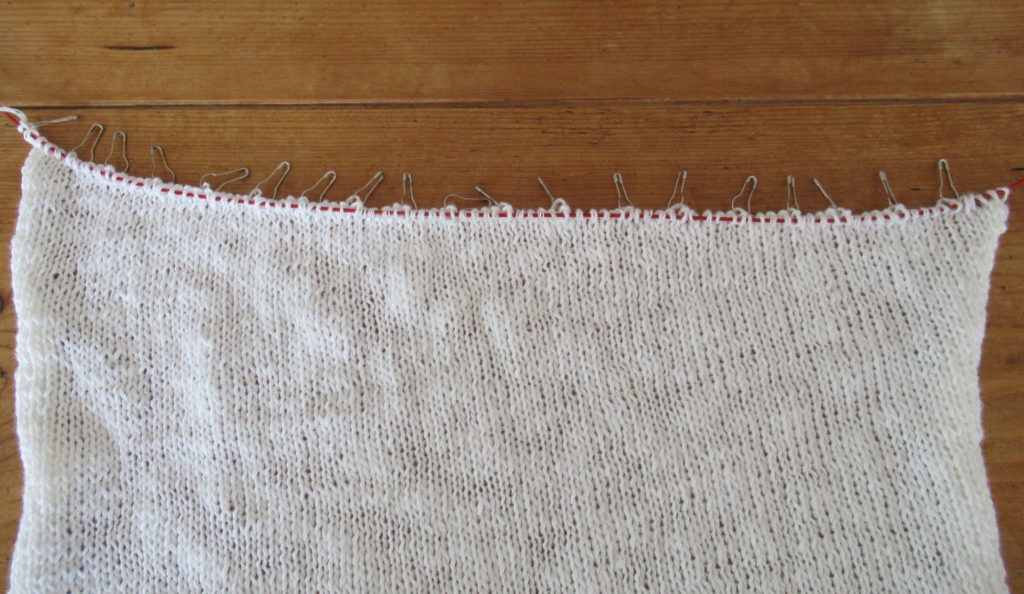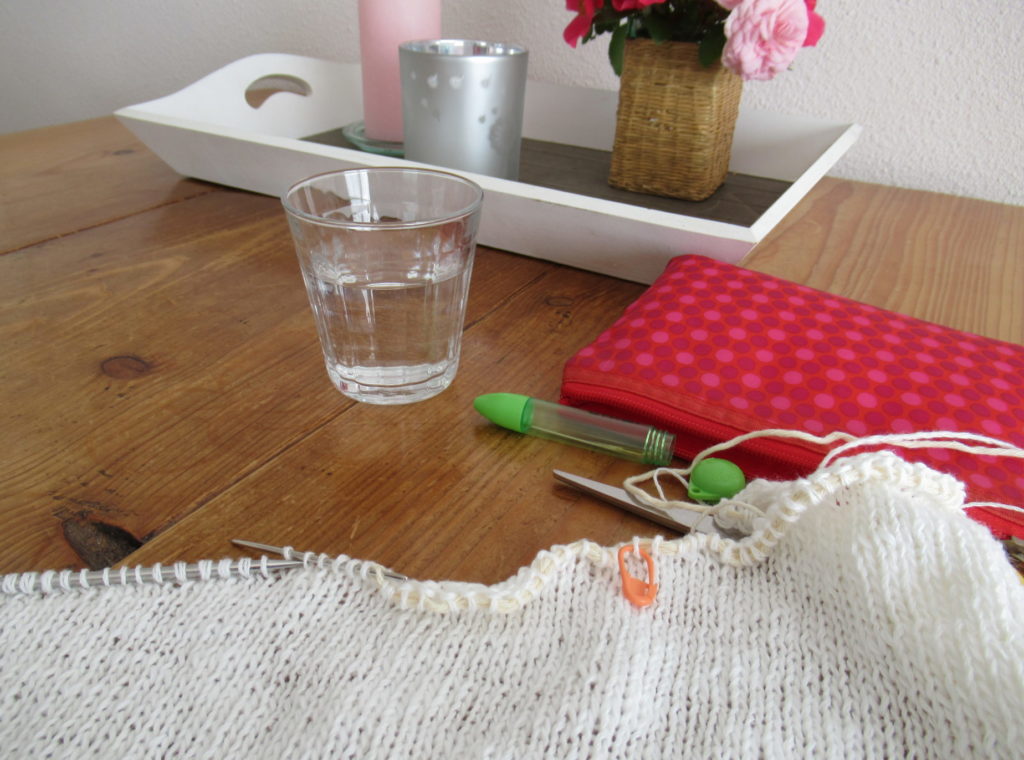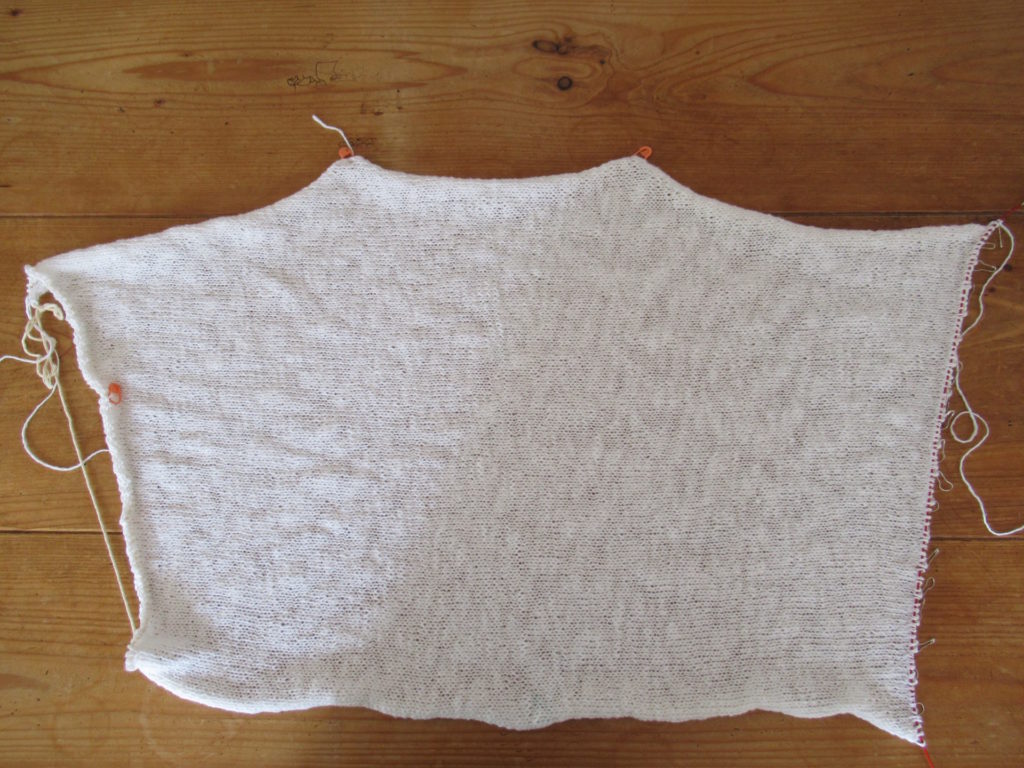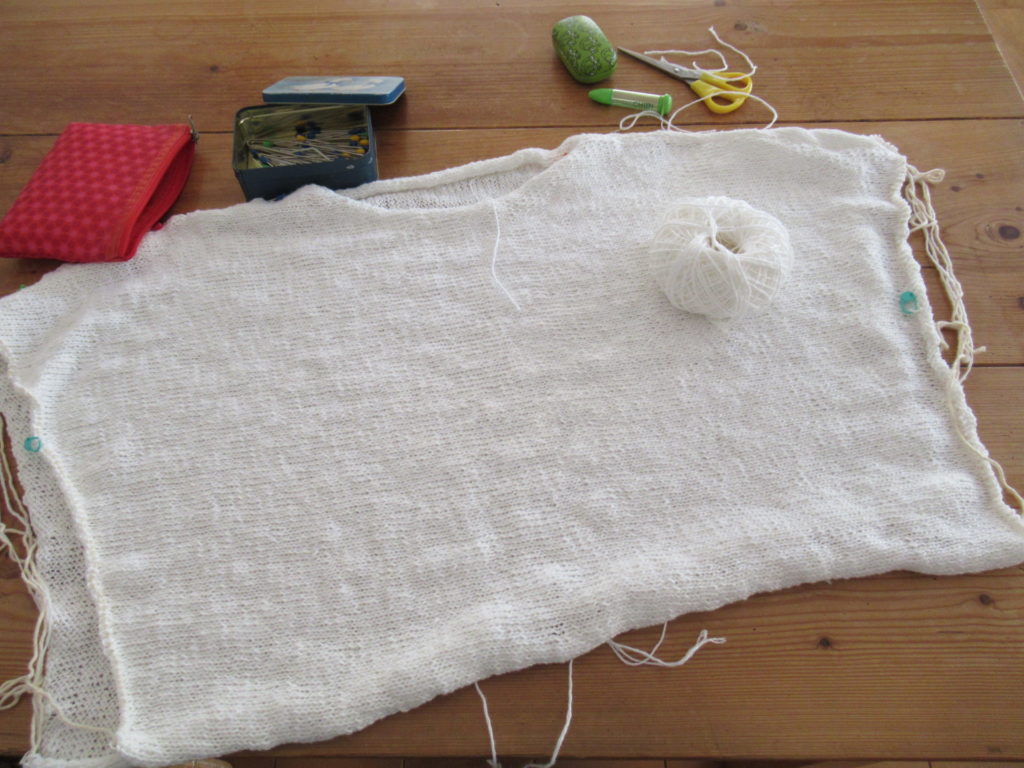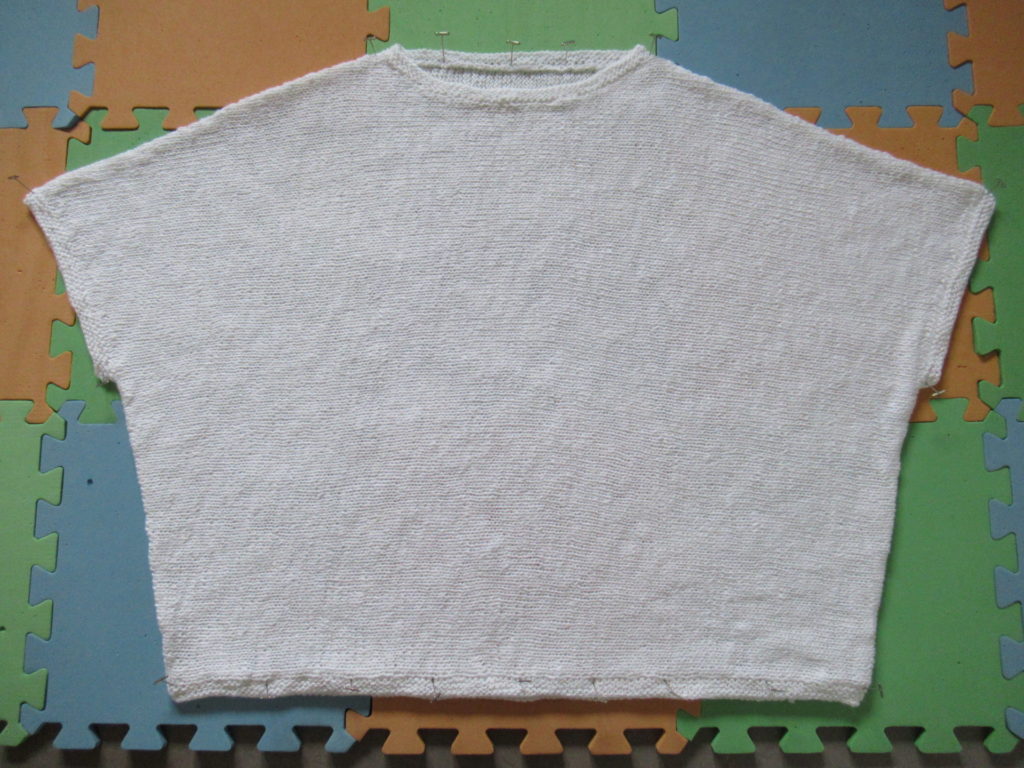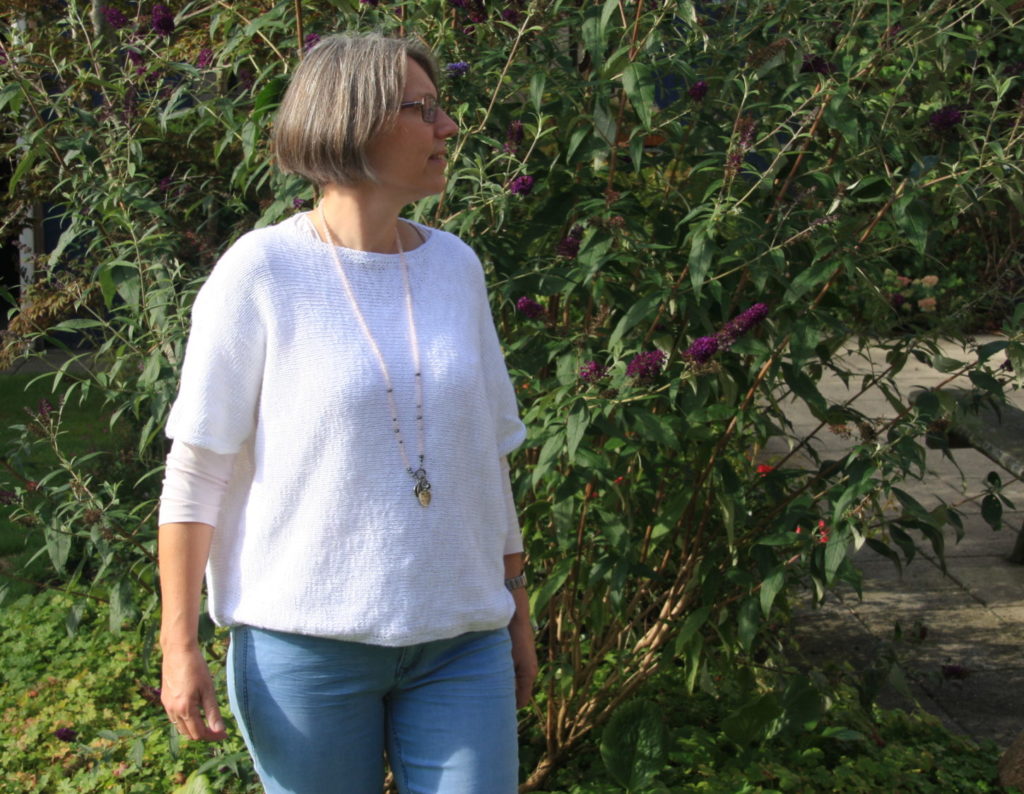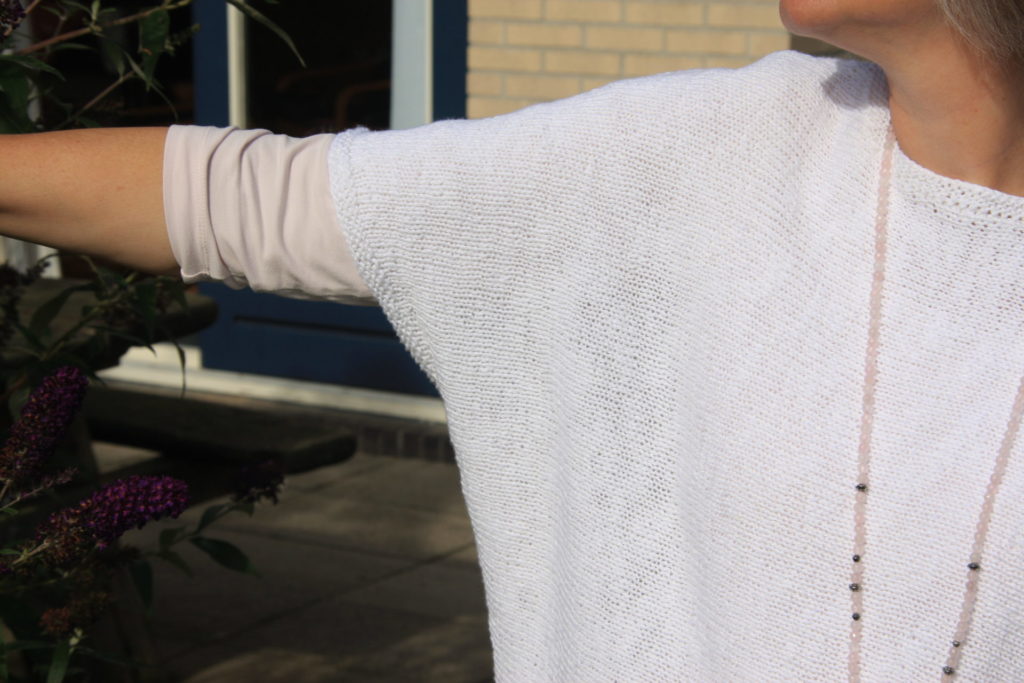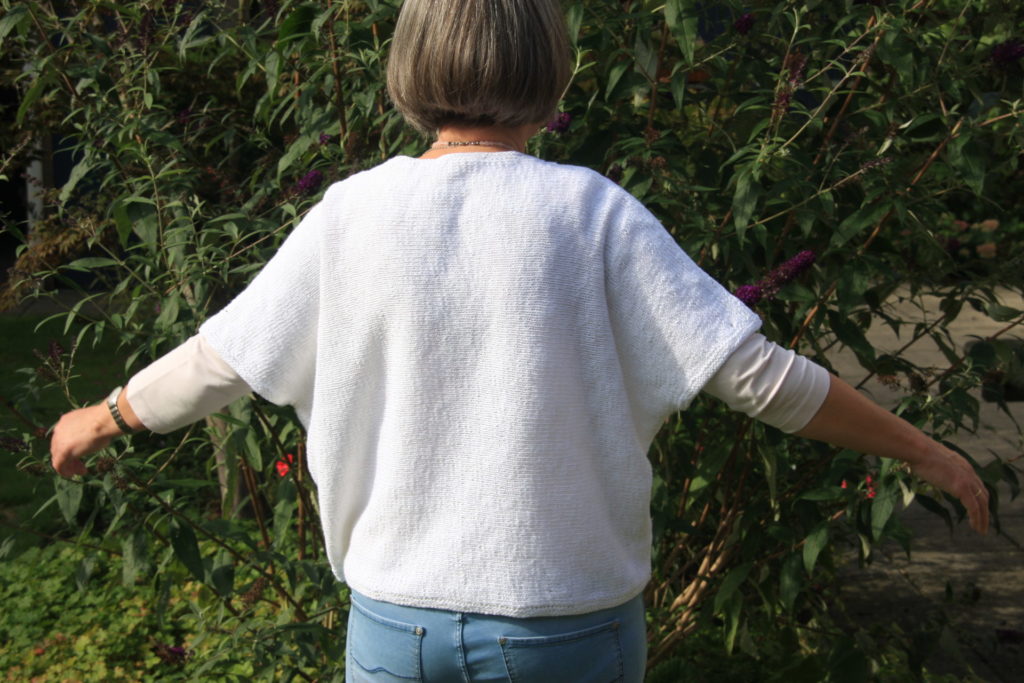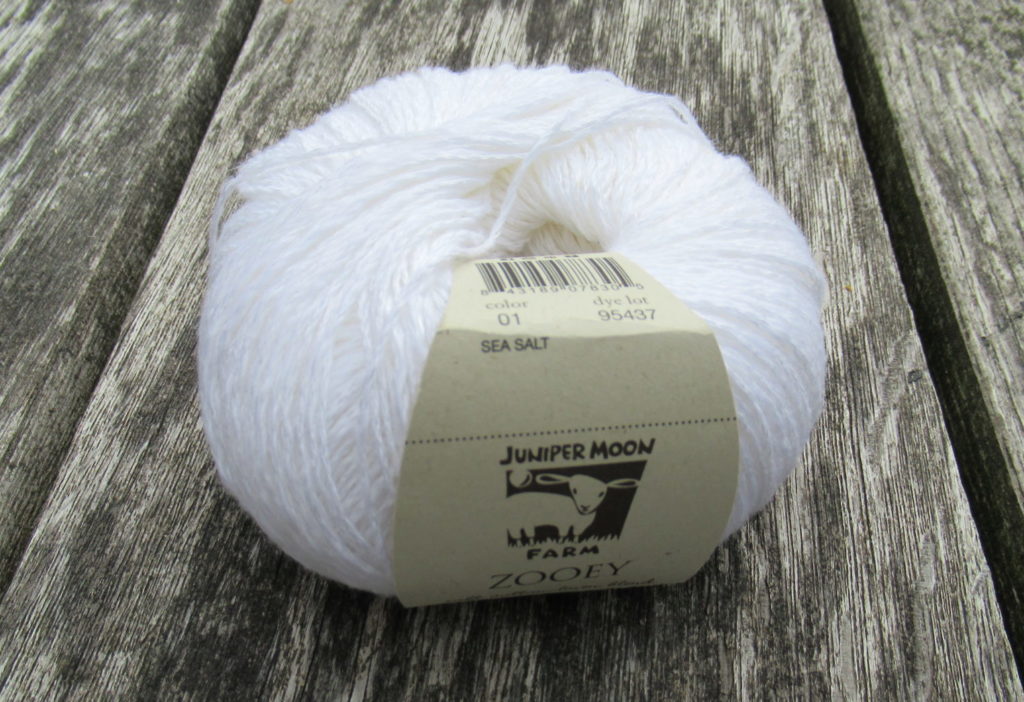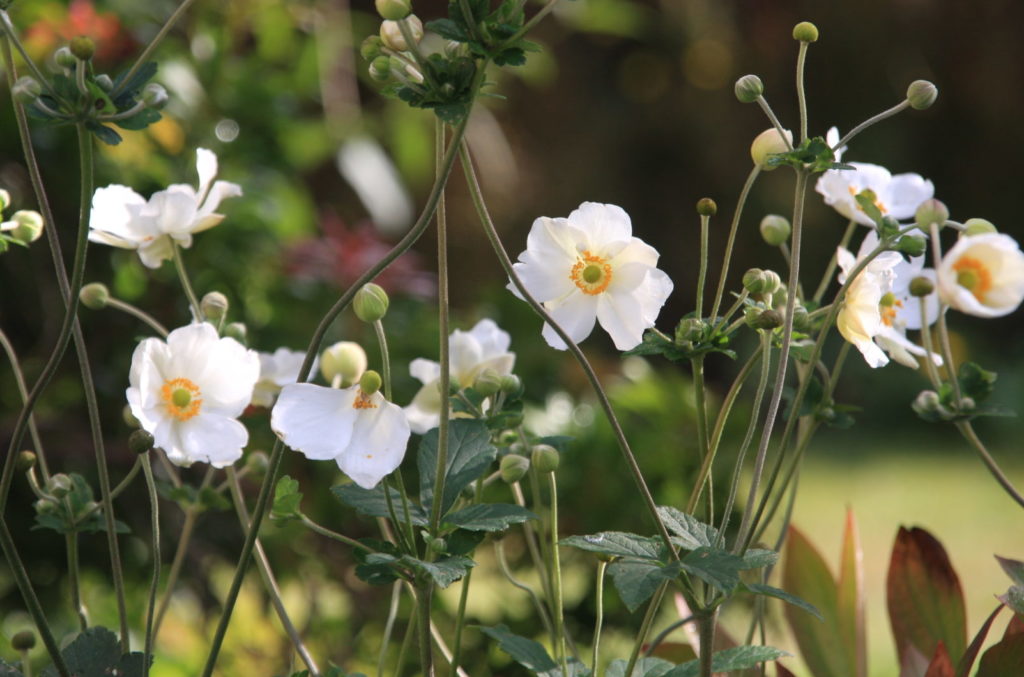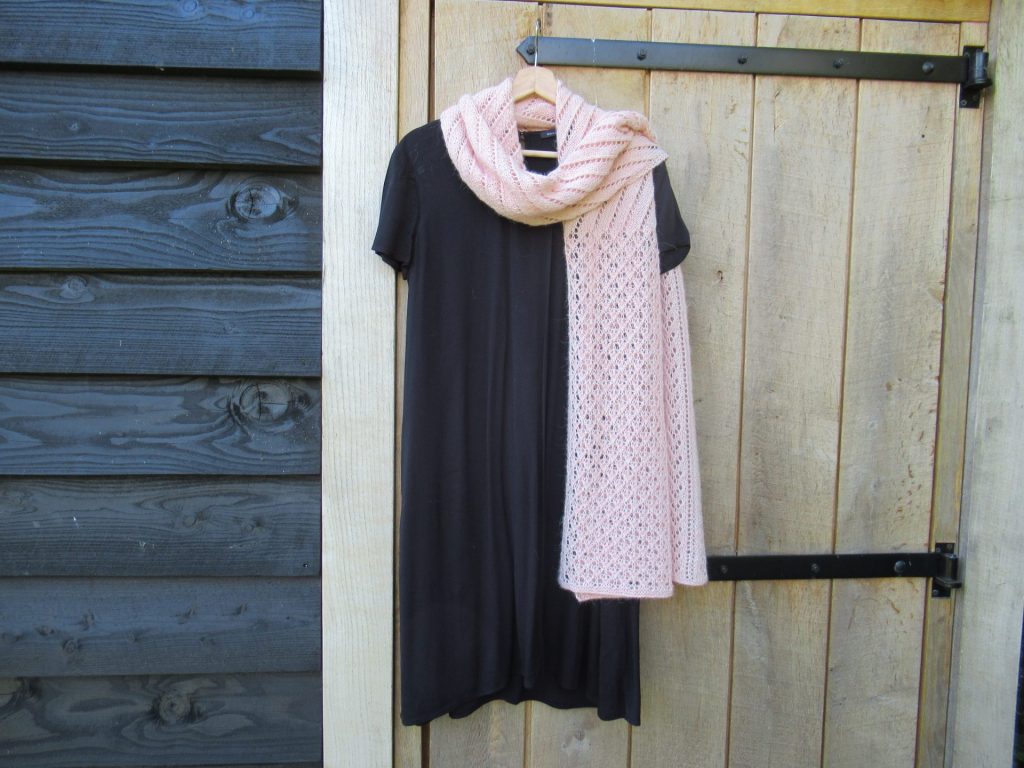
There is often more to knitting than meets the eye. Take this scarf that I’ve just finished. To an outsider, it may look like just another knitted lacy scarf, but to me it’s much more than that. To me it represents memories of Norway and a group of virtual knitting friends, with some literature and fine art thrown in as well.
Let’s take a look at the basics first – the pattern and the yarn. The pattern is called Lace Sampler Scarf and is a Churchmouse Classic.
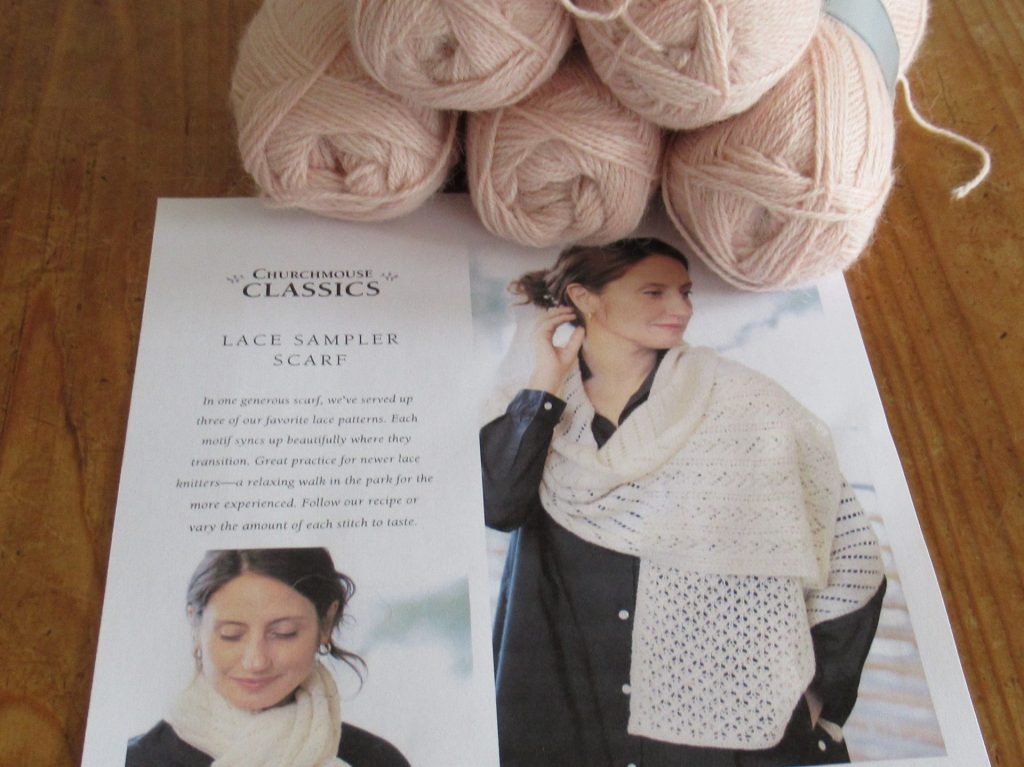
Over the years I’ve knit many items designed by the Churchmouse design team. Their patterns have beautiful photographs, are written with much attention to detail and always contain some tips and techniques. They also have a very friendly and helpful Ravelry board and, although I will in all likelihood never meet any of the people I chat with there in real life, their virtual friendship means a lot to me.
The yarn is 100% alpaca in a sport weight that I once brought home as a souvenir from Norway, where we have spent many wonderful summer holidays. I remember buying the yarn at a Husfliden shop in Mosjøen, a lovely small town about a hundred kilometres south of the Polar Circle.
I wasn’t into photographing yarn shops then (I didn’t even have a camera at the time), but I do have a few pictures taken by my husband to give you an impression of the town. Here is one of those attractive Norwegian wooden houses.
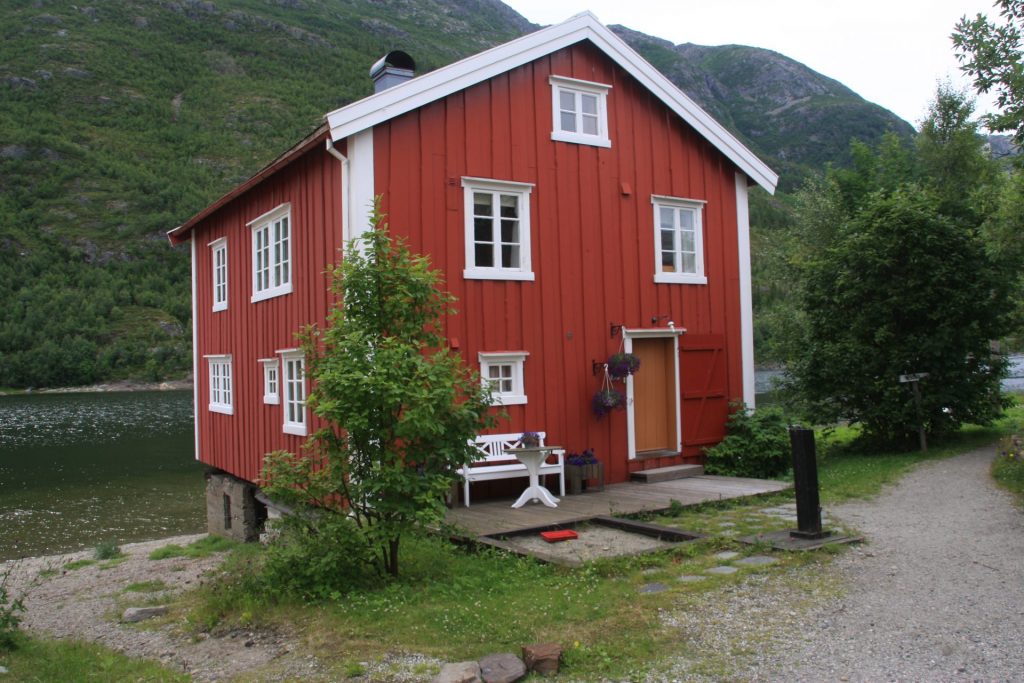
And this is a picture of one of the oldest streets of the town – Sjøgata (Sea Road).
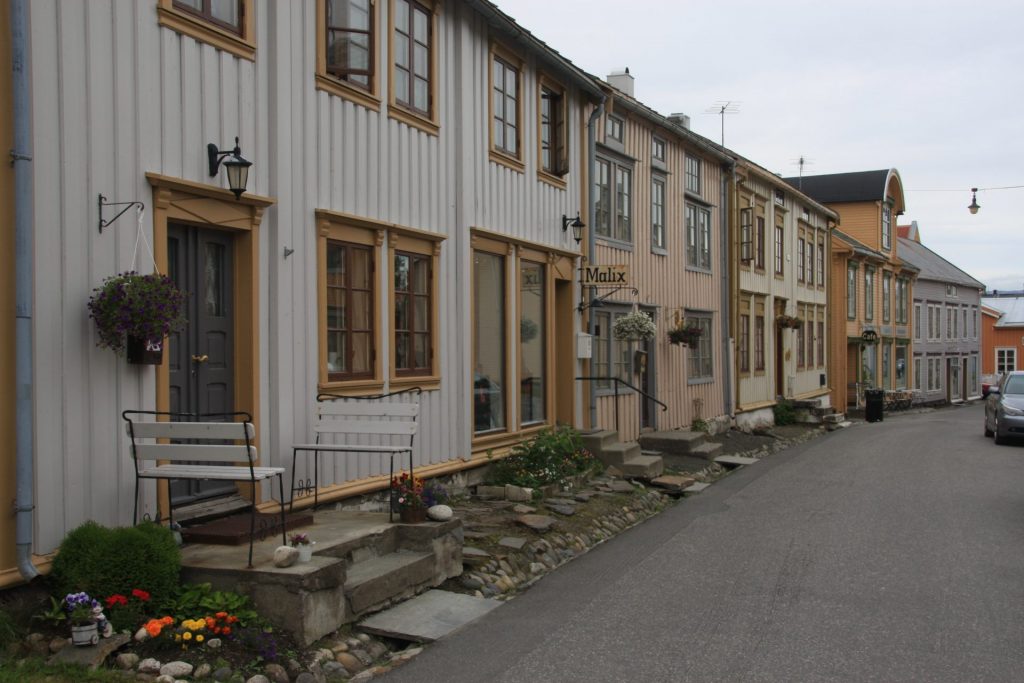
The Lace Sampler Scarf uses three different lace patterns. It is a sampler, after all – originally meant as a practice piece. It starts with some Van Dyke Lace, followed by a section in Diagonal Lace and ending with some English Mesh Lace (photo below from bottom to top).
The designers playfully made the sections all in different lengths. That was the only thing about the pattern that I didn’t like. In fact, it really irked me. My mind is apparently more rigid symmetrically oriented than theirs. So I adapted the pattern to make the first and the last sections the same length, and the middle section twice as long.
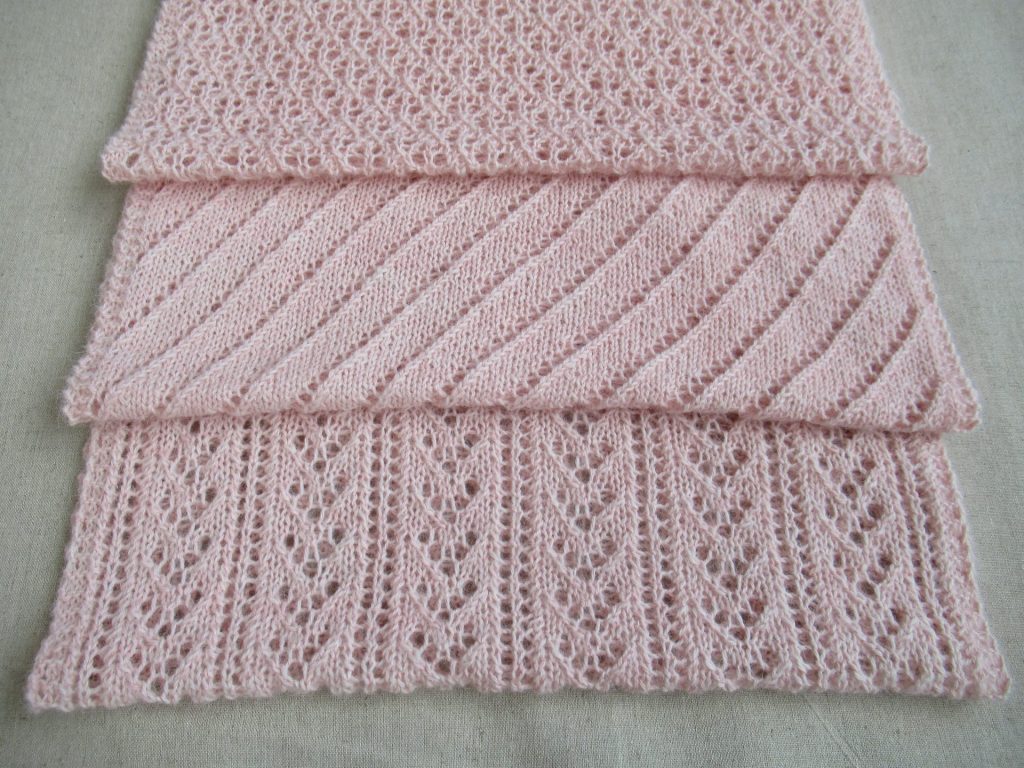
While I was knitting, I didn’t really think about the lace patterns very much. Diagonal lace speaks for itself with its rows of diagonal eyelets. English mesh looks a lot like, well, mesh. And Van Dijk is a common enough name in this country. I knit on more or less thoughtlessly, enjoying the soft yarn in my hands and the different rhythms of the patterns.
But when I had just started on the last section, the book I was rereading also mentioned Van Dyke Lace and my attention was caught. It was Jane and the Ghosts of Netley by Stephanie Barron. (This is the seventh novel in a series of mysteries in which author Jane Austen features as an amateur detective. The novels capture the style and times of the real Jane Austen perfectly and are great fun.)
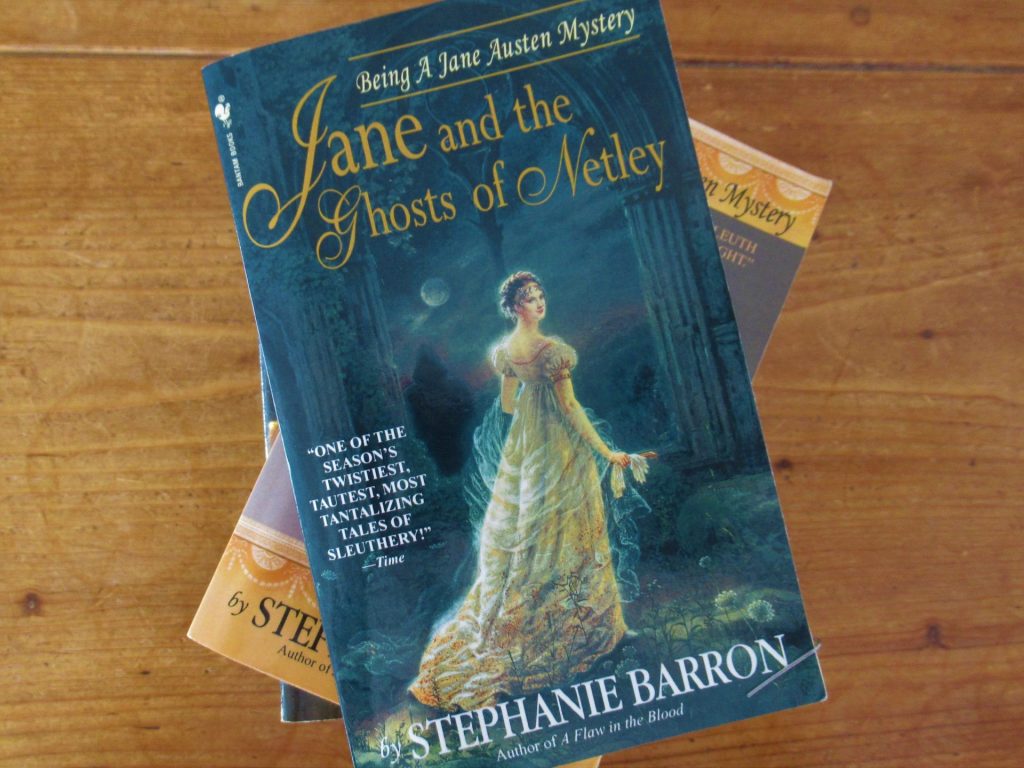
On p. 129 Jane is trying on a dress at modiste Madame Clarisse’s when an acquaintance asks, ‘I wonder if Madame Clarisse is familiar with the demi-ruff à la Queen Elizabeth, pleated in Vandyke?’ And a little later, ‘Forgive me for speaking as I find, Miss Austen, but you’ve rather a short neck – and the white demi-ruff, Vandyke-stile, should lengthen its appearance to admiration.’
Wait a second! Van Dyke Lace, pleated in Vandyke, a demi-ruff Vandyke-stile… where does this all come from? Oh, of course, it refers to Anthony van Dyke, the 17th Century artist who painted lace ruffs and collars so exquisitely! There are some great examples at the Mauritshuis in The Hague and the Rijksmuseum in Amsterdam. (These are either bobbin lace or needle lace – I don’t know enough about lace to tell.)
Then I started looking for examples of Van Dyke Lace in knitting and found out that there isn’t just one kind of knitted Van Dyke Lace, but many. This is my/Churchmouse’s Van Dyke Lace:
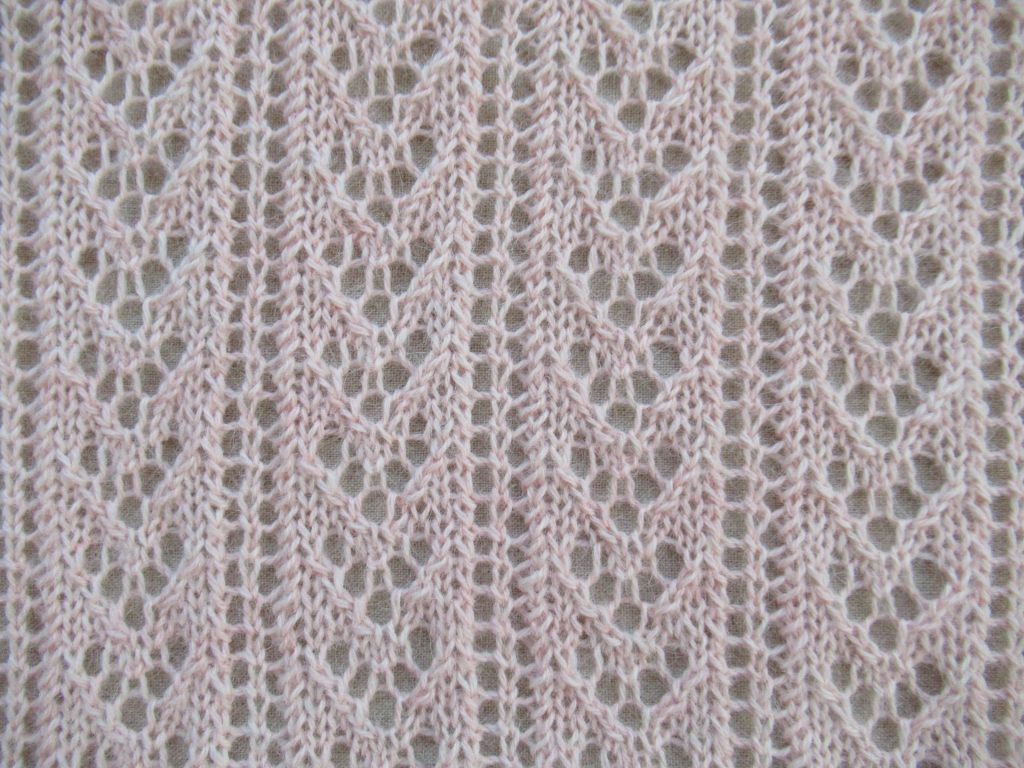
The Vandyke lace in Barbara Walker’s Third Treasury of Knitting Patterns looks very different:
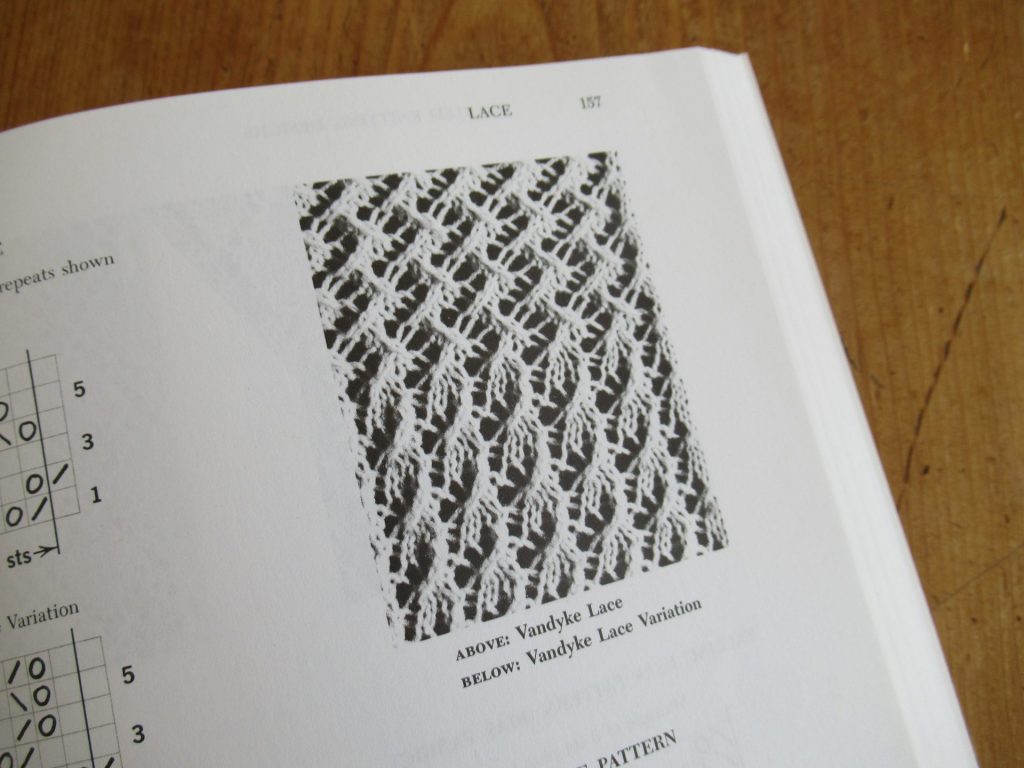
In Treasuries I and II, Walker also mentions a Vandyke check pattern, Vandyke faggot, Vandyke leaf pattern, Vandyke medallion edging and Vandyke swag stitch.
In Heirloom Knitting, about Shetland lace knitting, Sharon Miller describes a Vandyke Edging – pointy with zigzags.
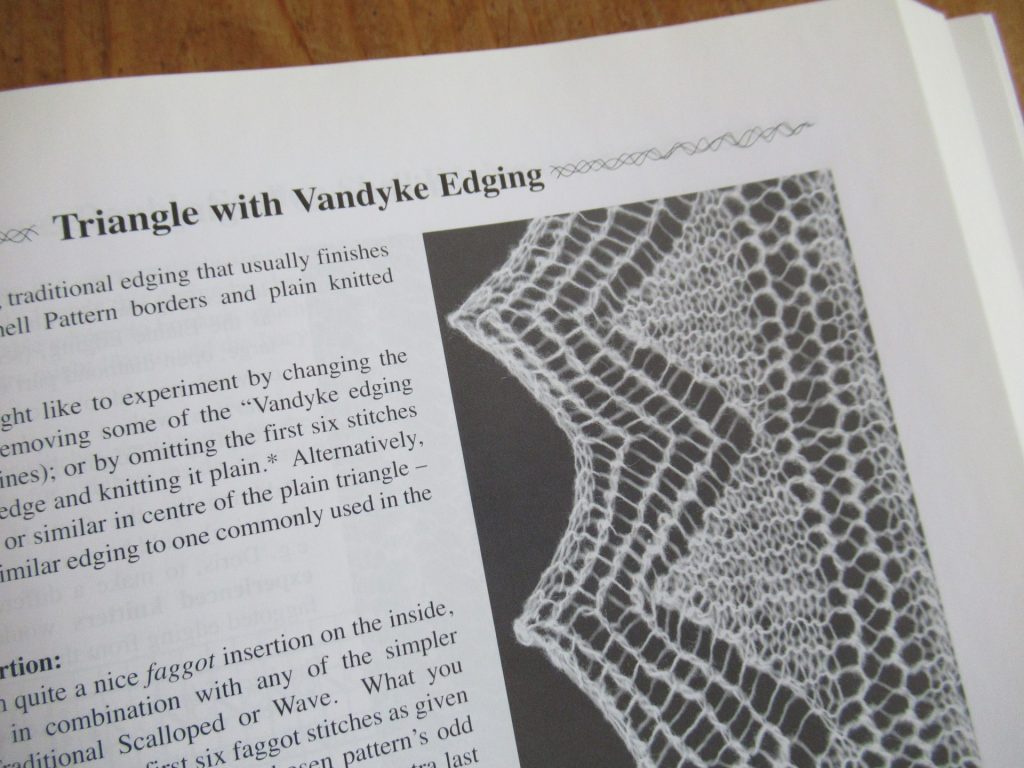
The common denominator seems to be that all Van Dyke lace is pointy or zigzaggy in some way. There are probably many more variations on this theme elsewhere. I just love it that there is always more to discover about knitting.
Well, here is another picture of ‘my’ Van Dyke Lace (the section with the V’s). This isn’t fine lace as in Van Dyke’s portraits and Shetland knitting. Compared to the gossamer yarns used in Shetland lace (which can be up to 6.000 metres per 100 grams), the yarn I used (which was 334 metres per 100 grams) is like ship’s rope compared to dental floss. But to me the result looks more than fine.
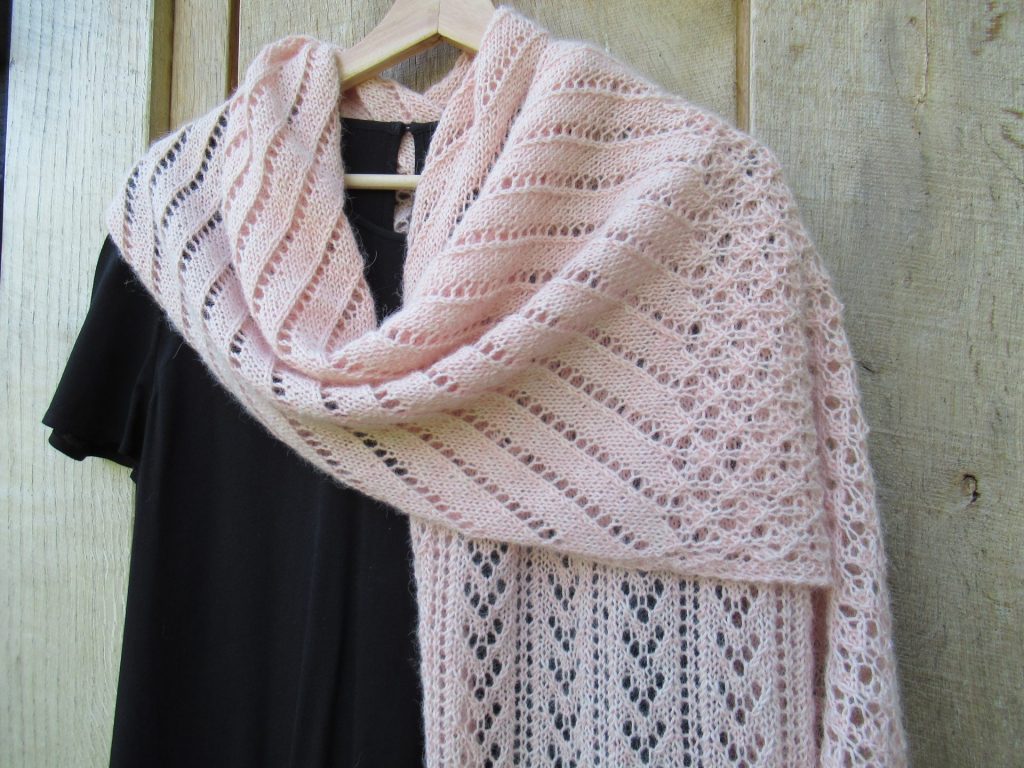
I give many of the things I knit away, but I don’t know anybody who would like to have a shawl in this shade of pink, so there is nothing for it but to keep this one. And you know what? I don’t mind in the least, because every time I wear it, it will remind me of Norway, of my virtual knitting friends and of the things I discovered in the process.
